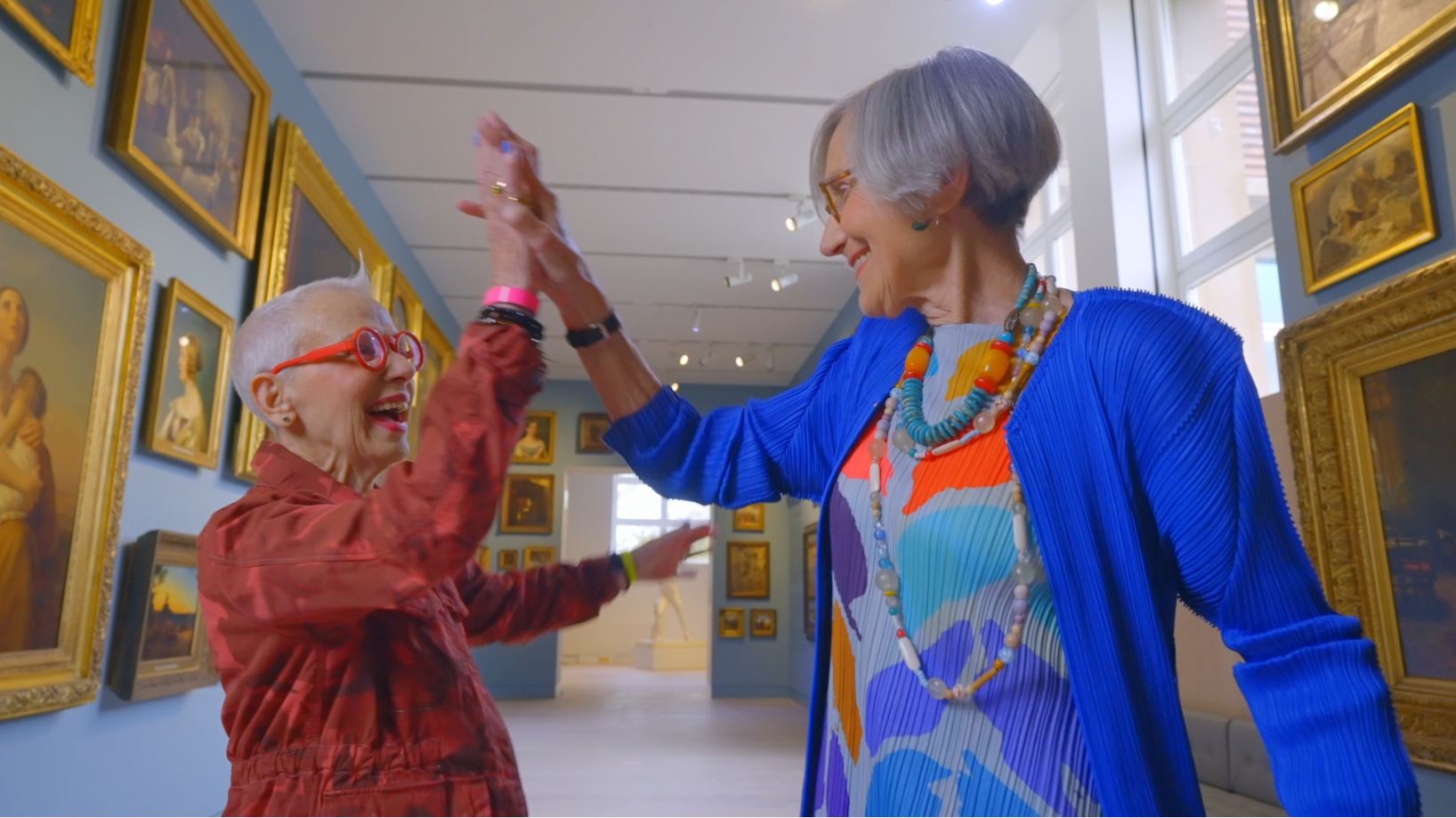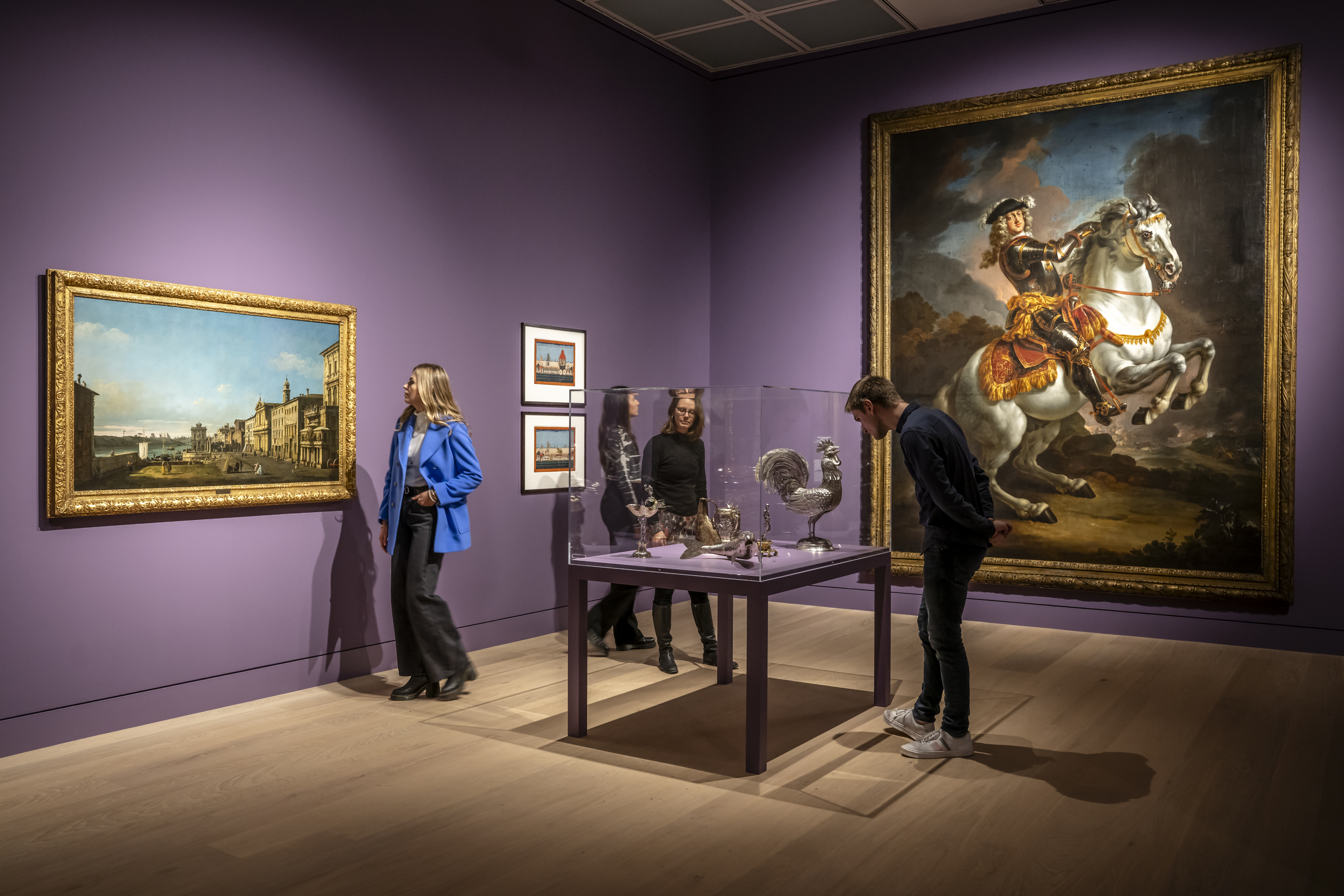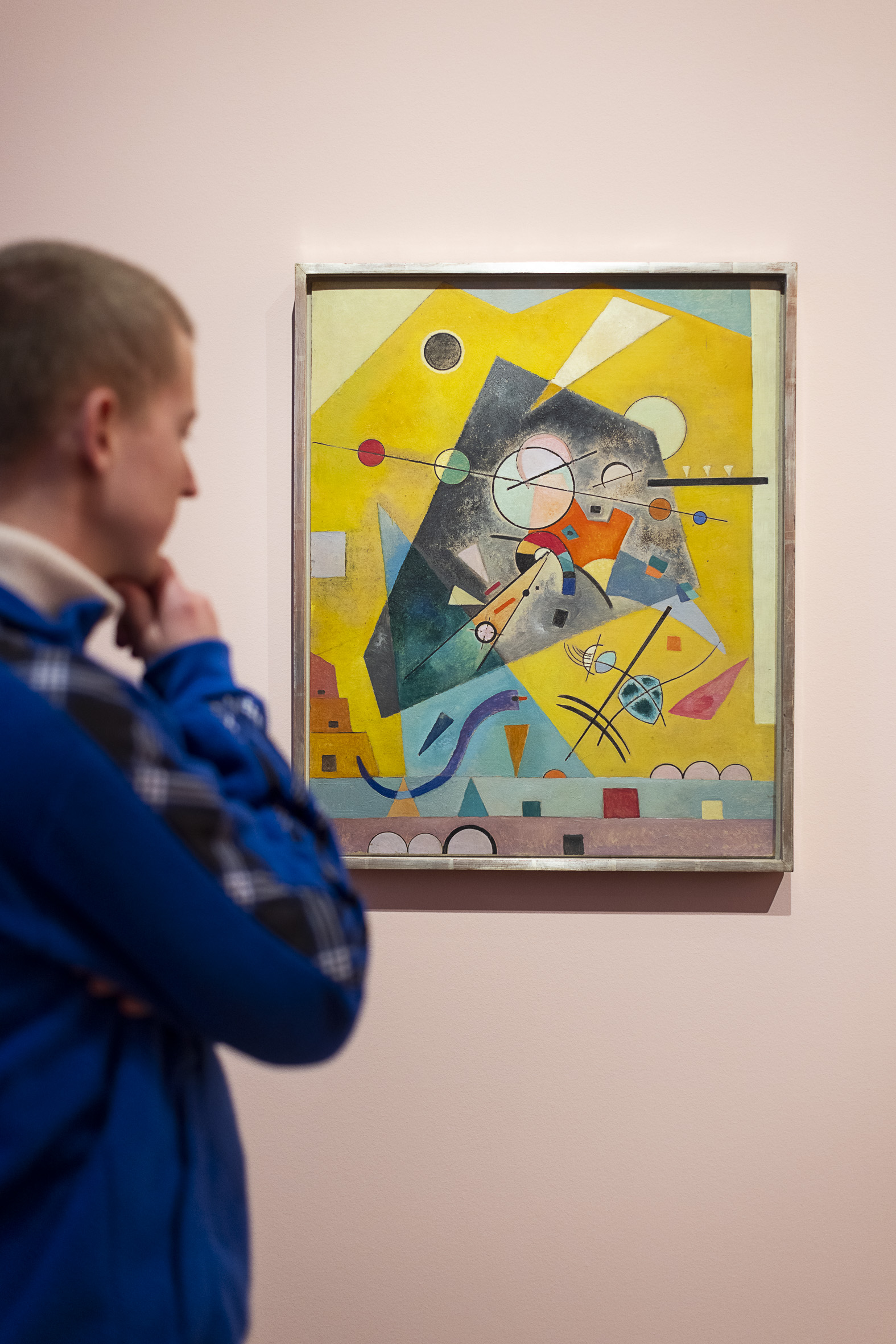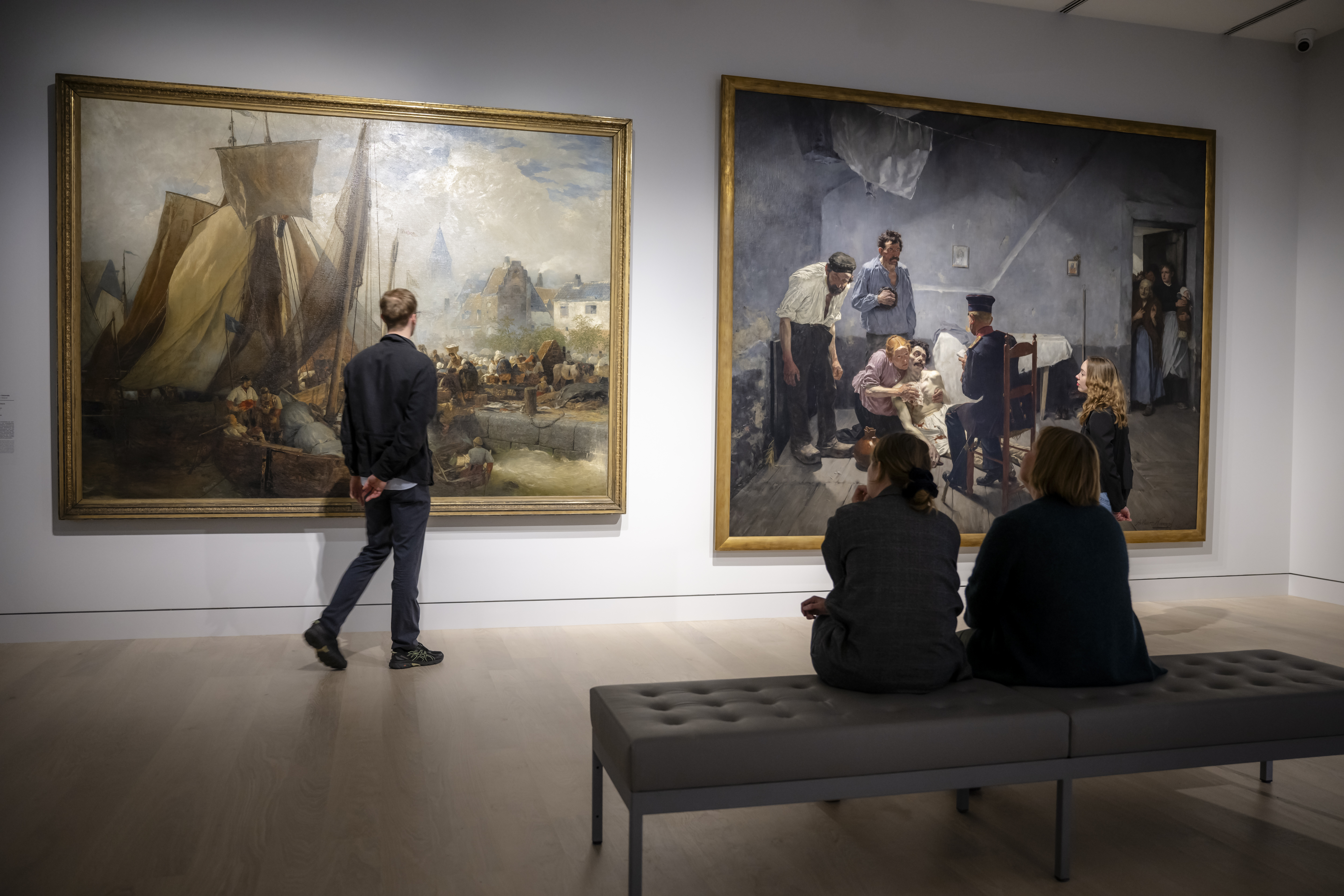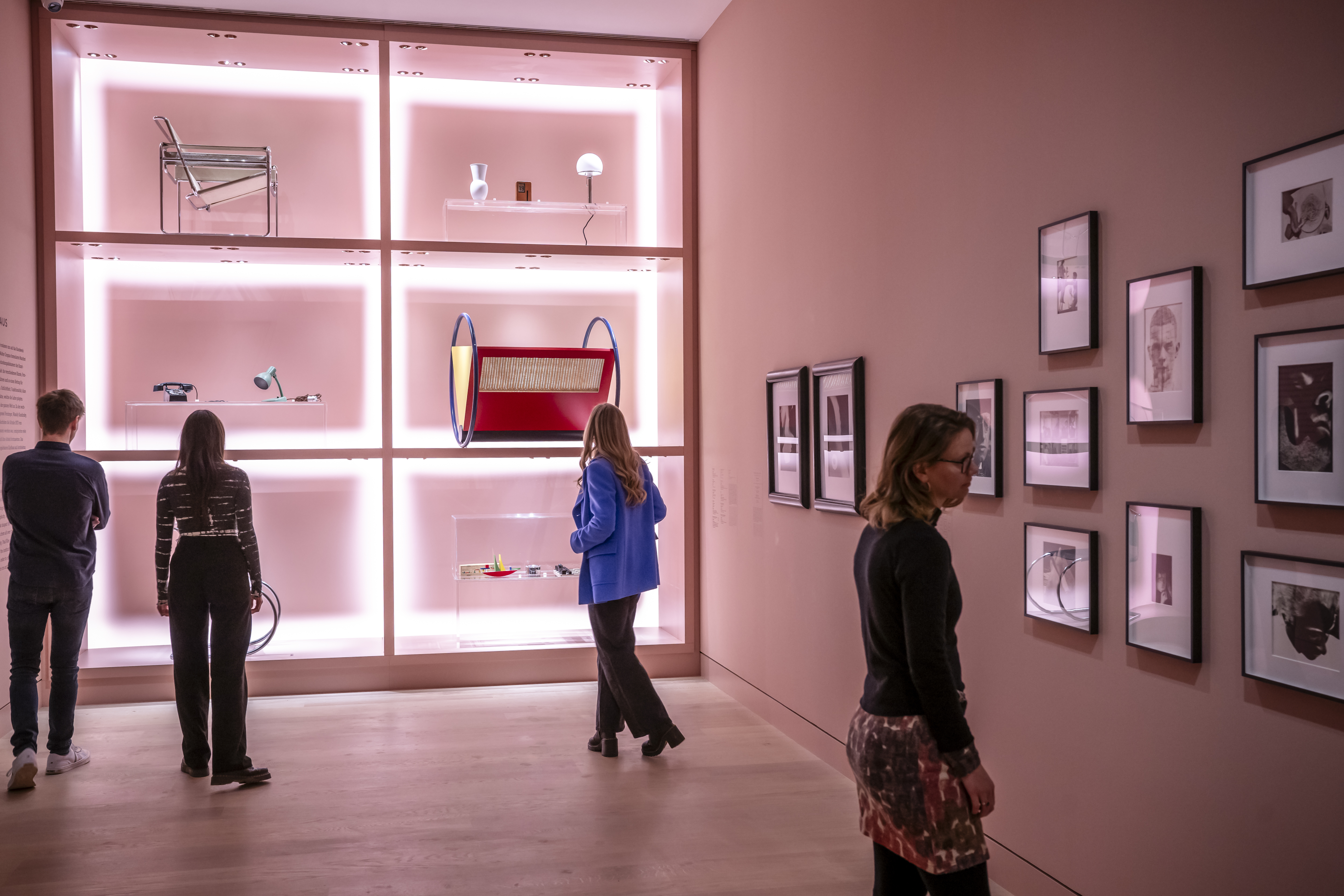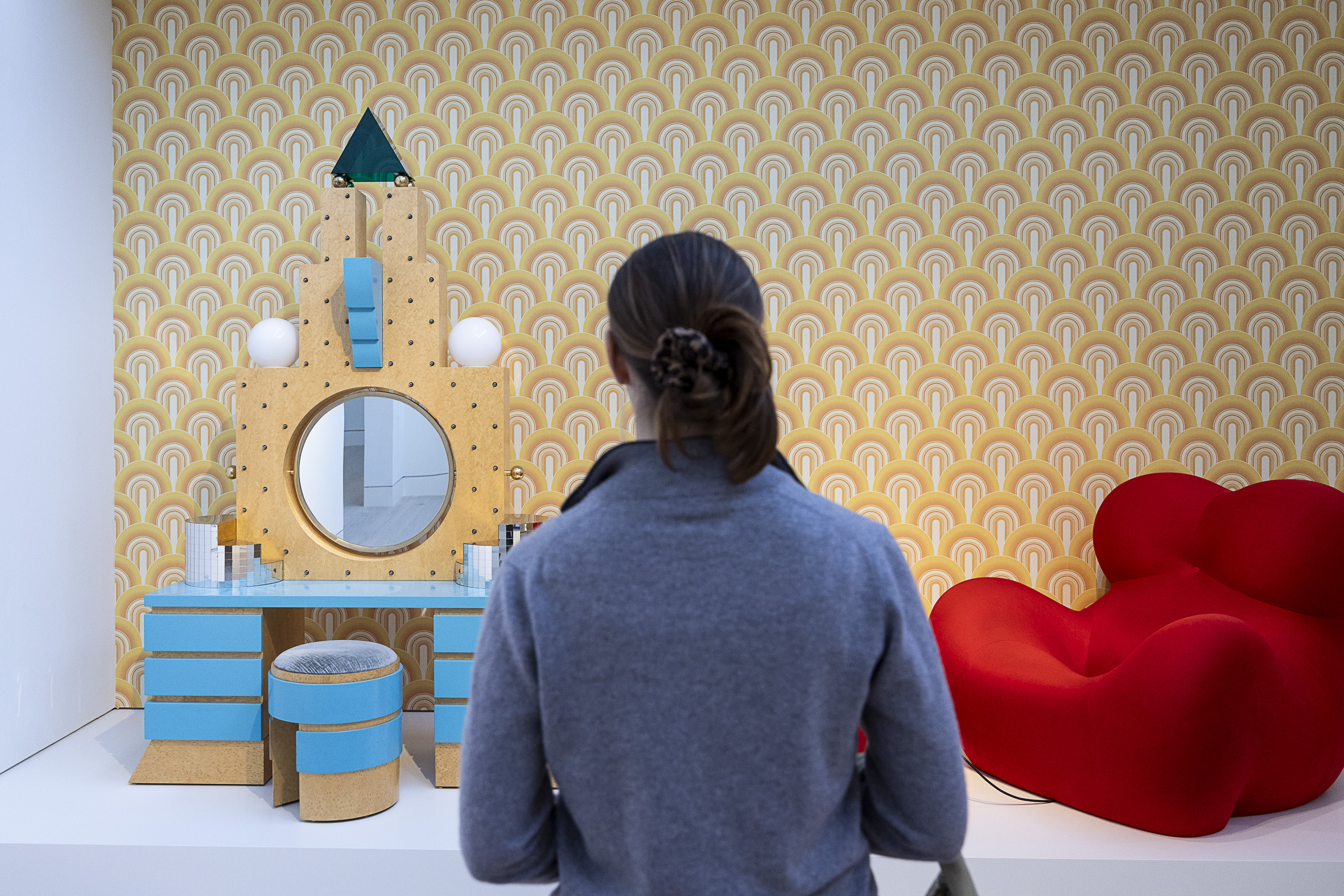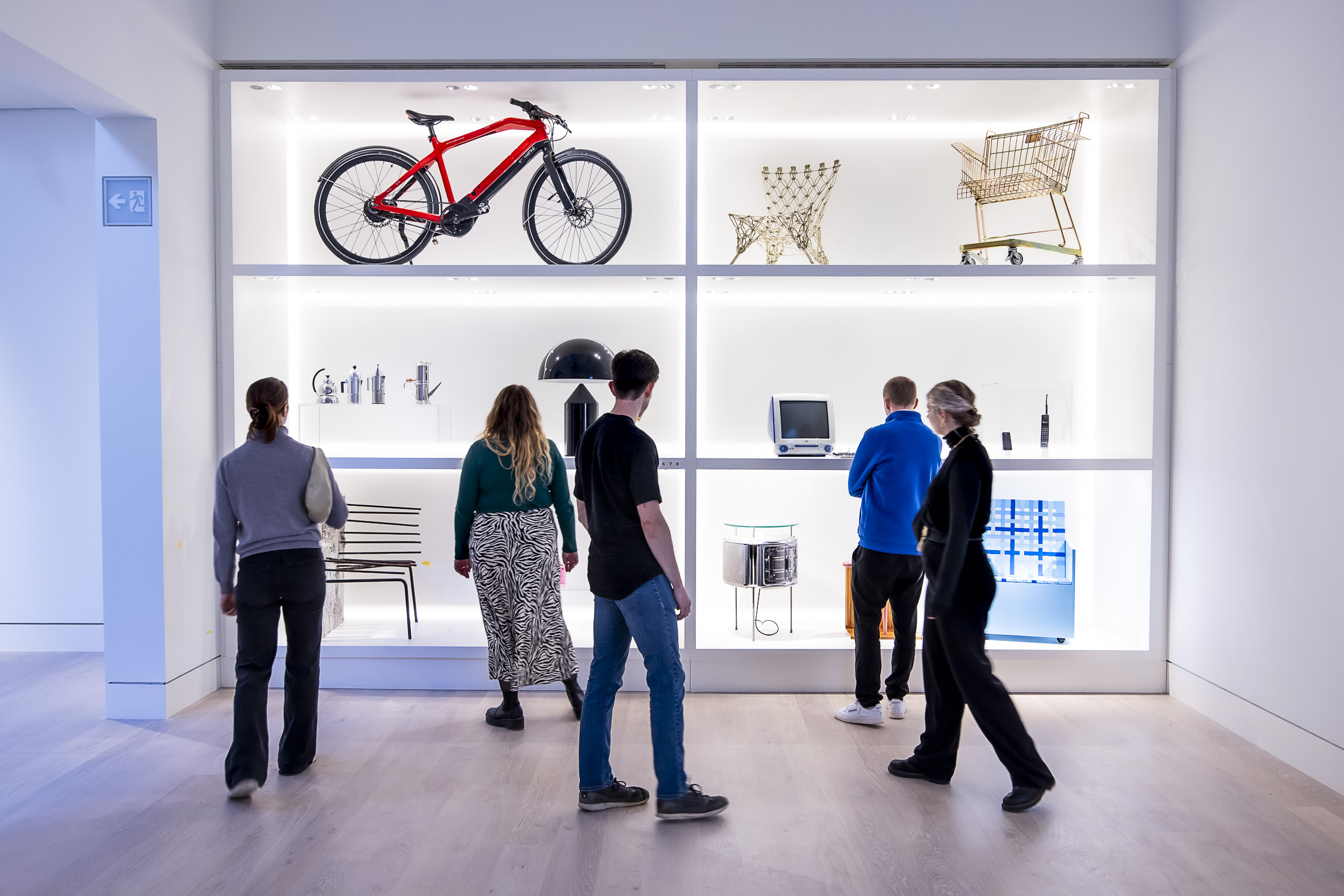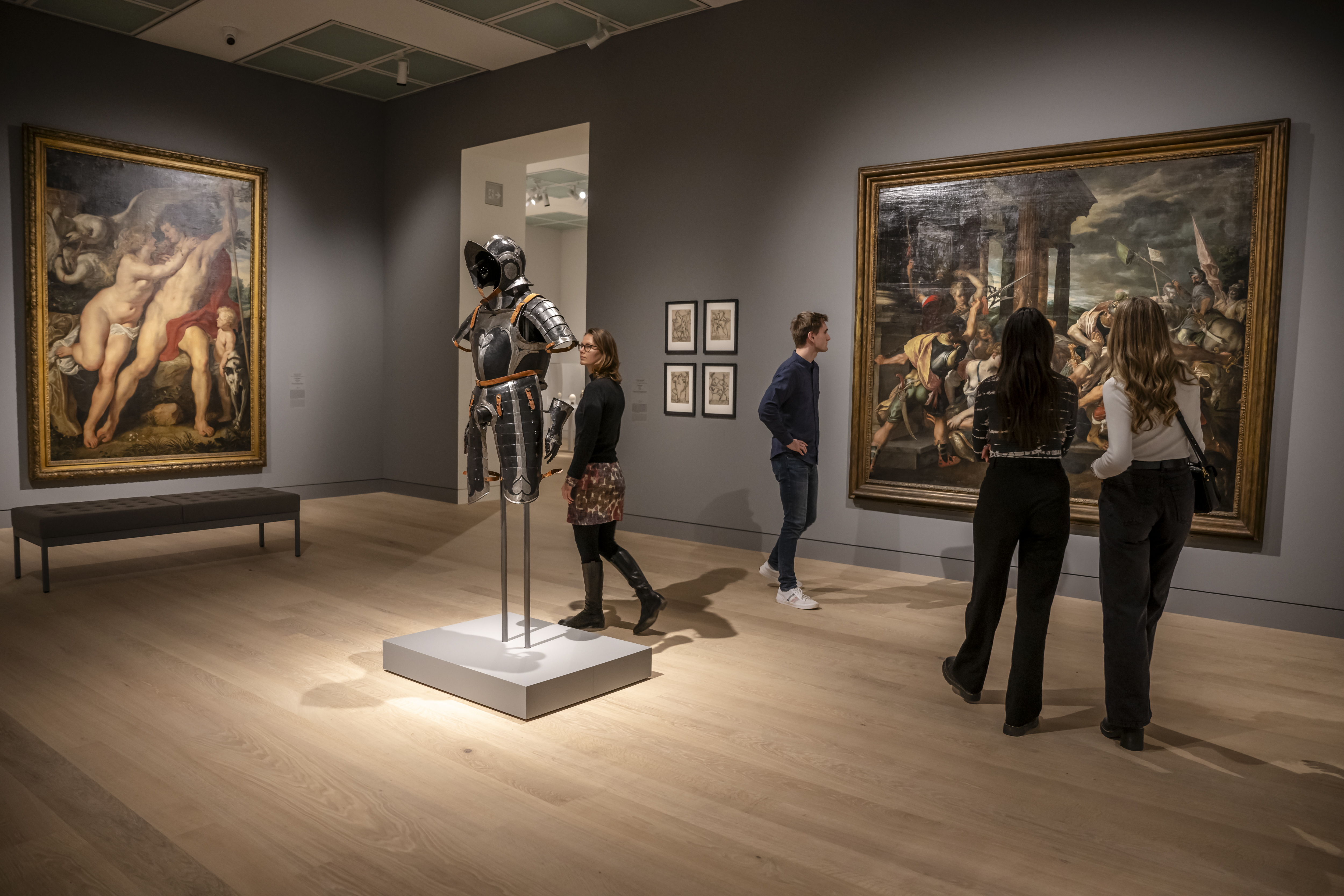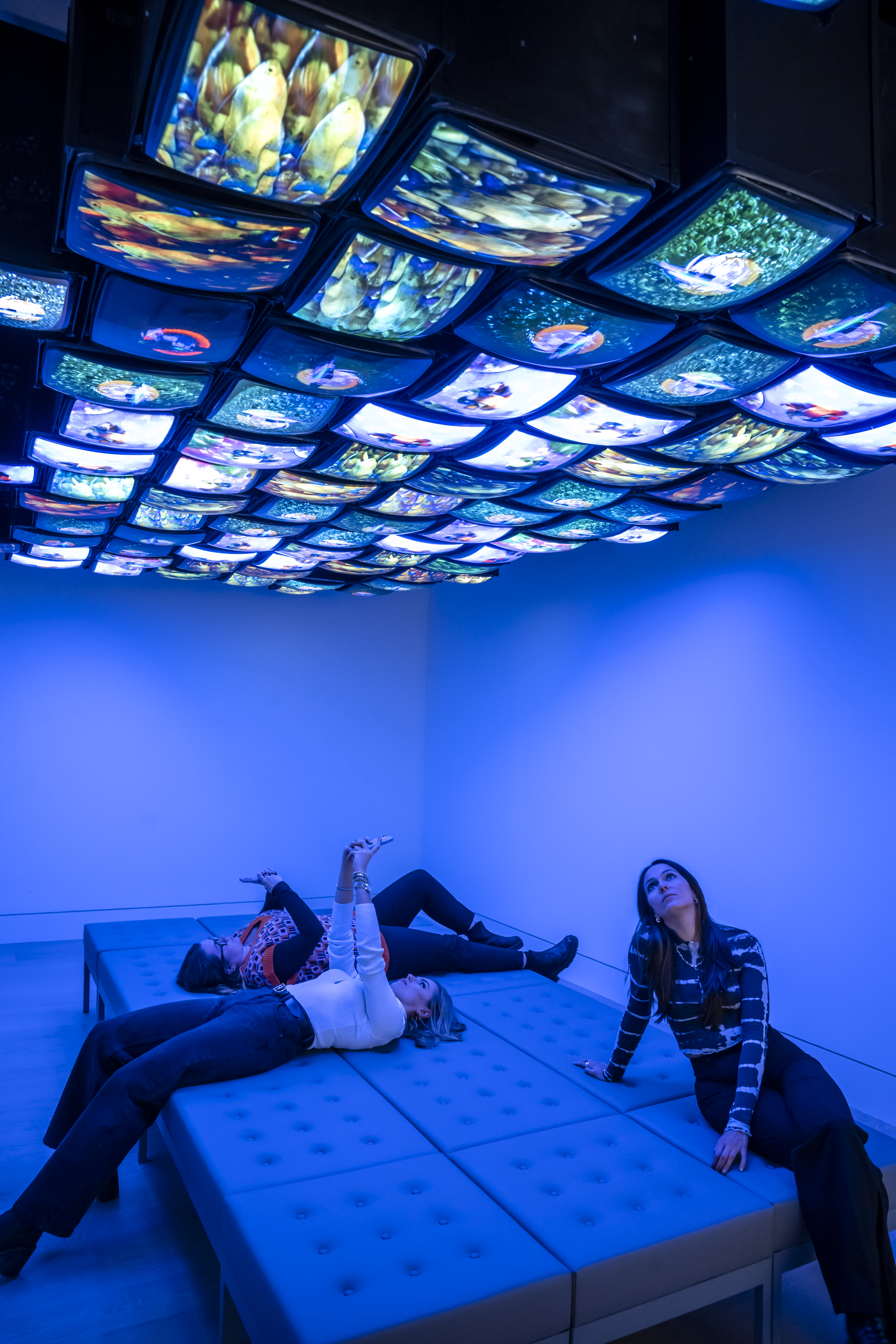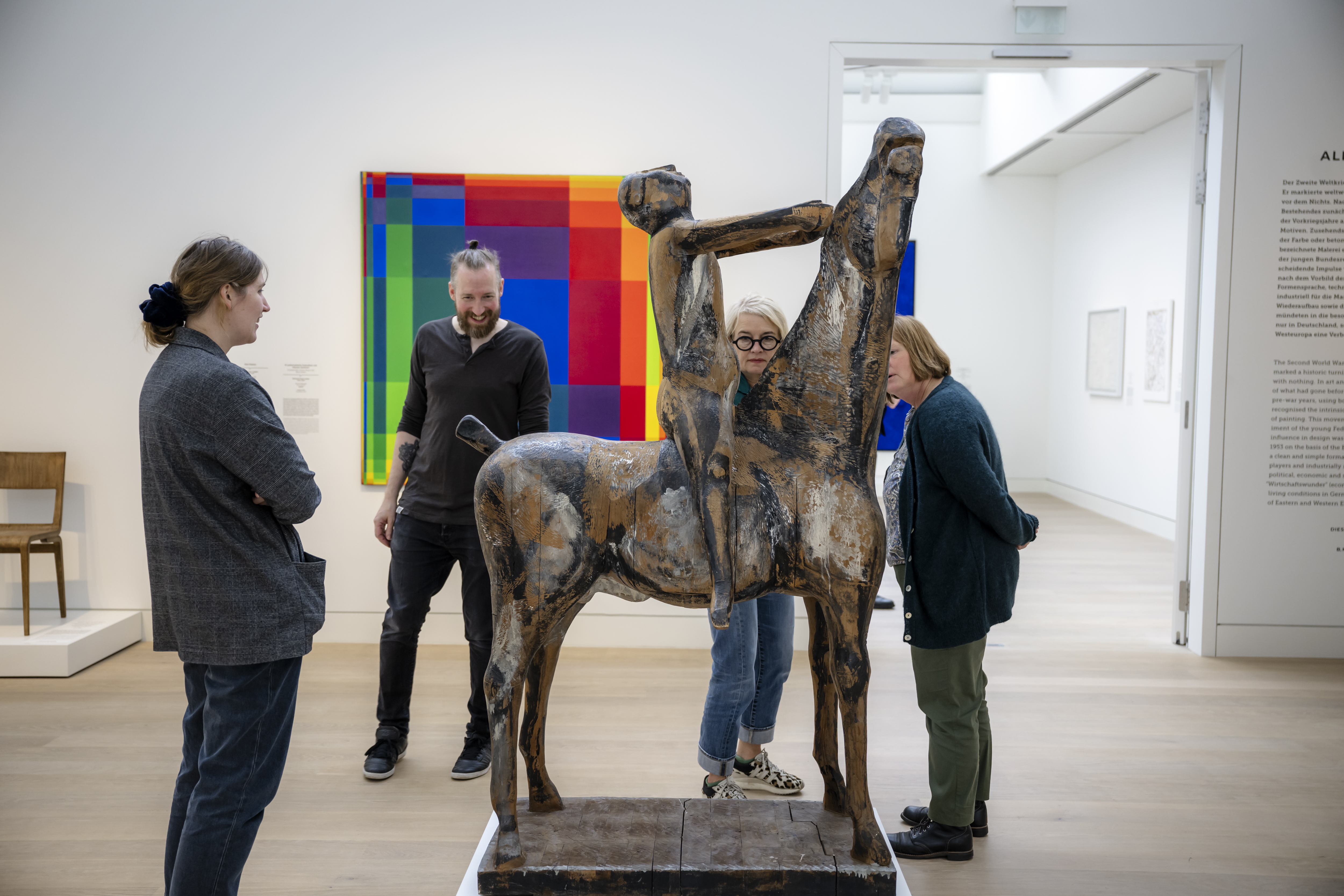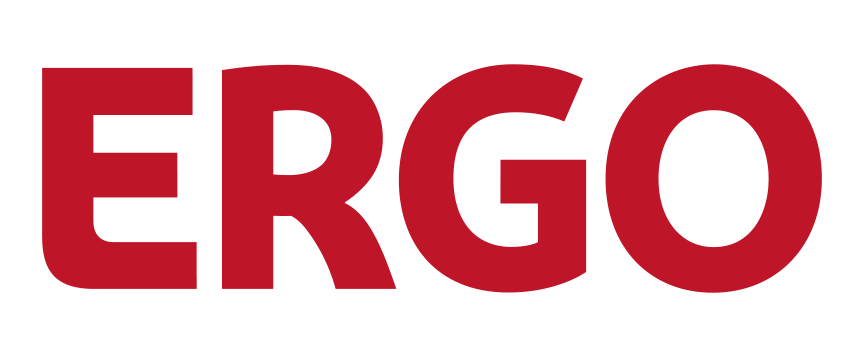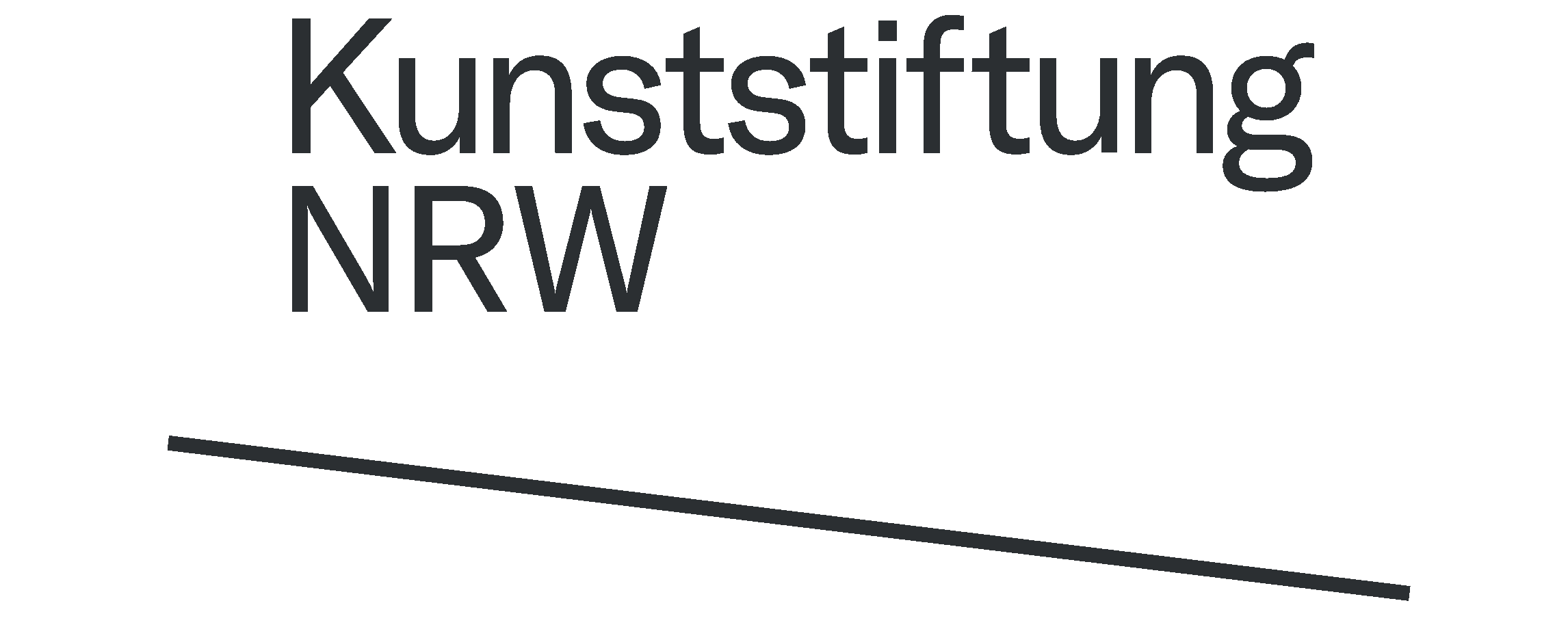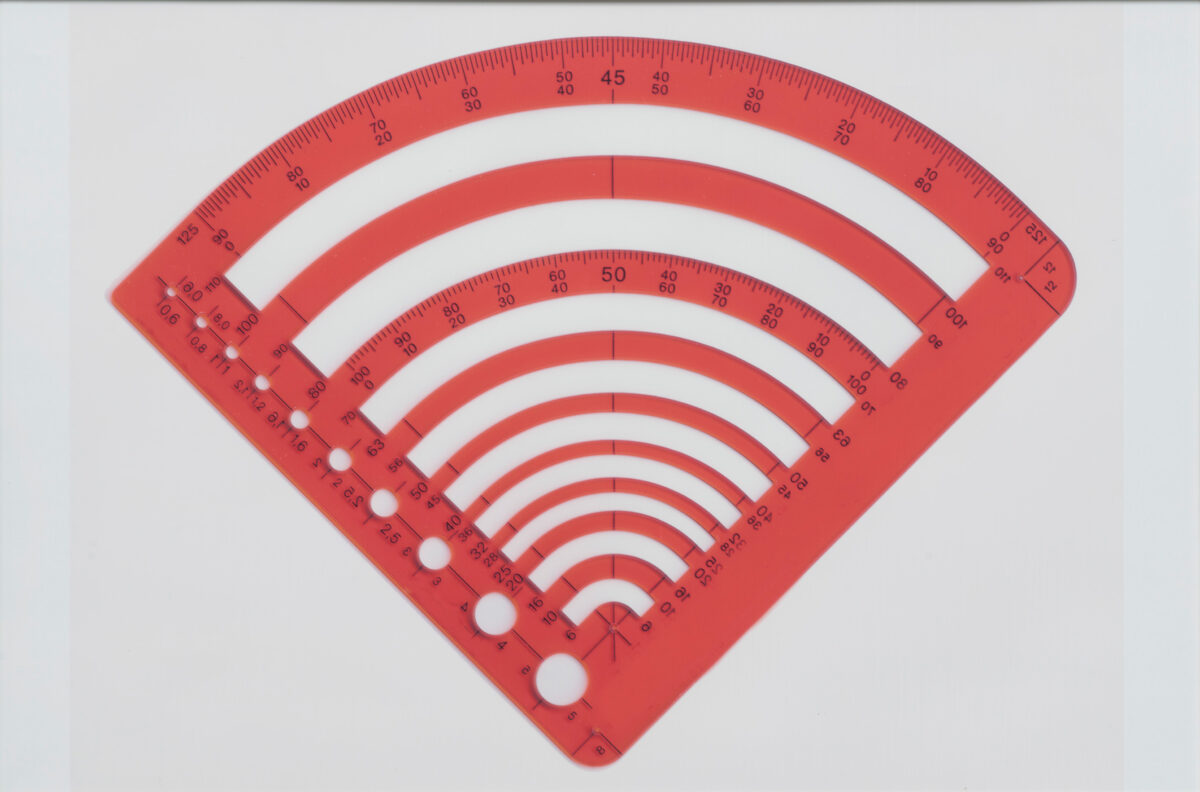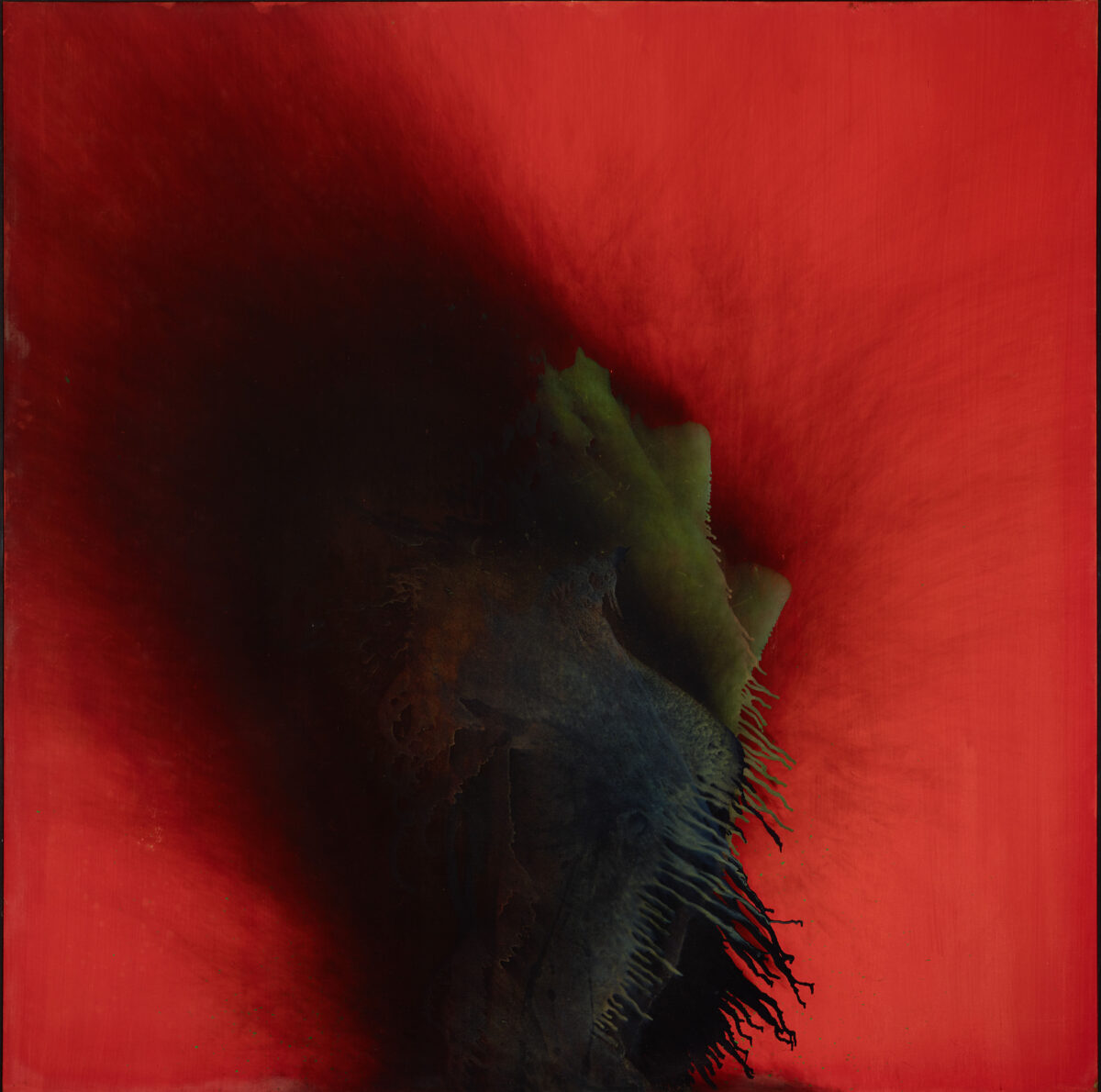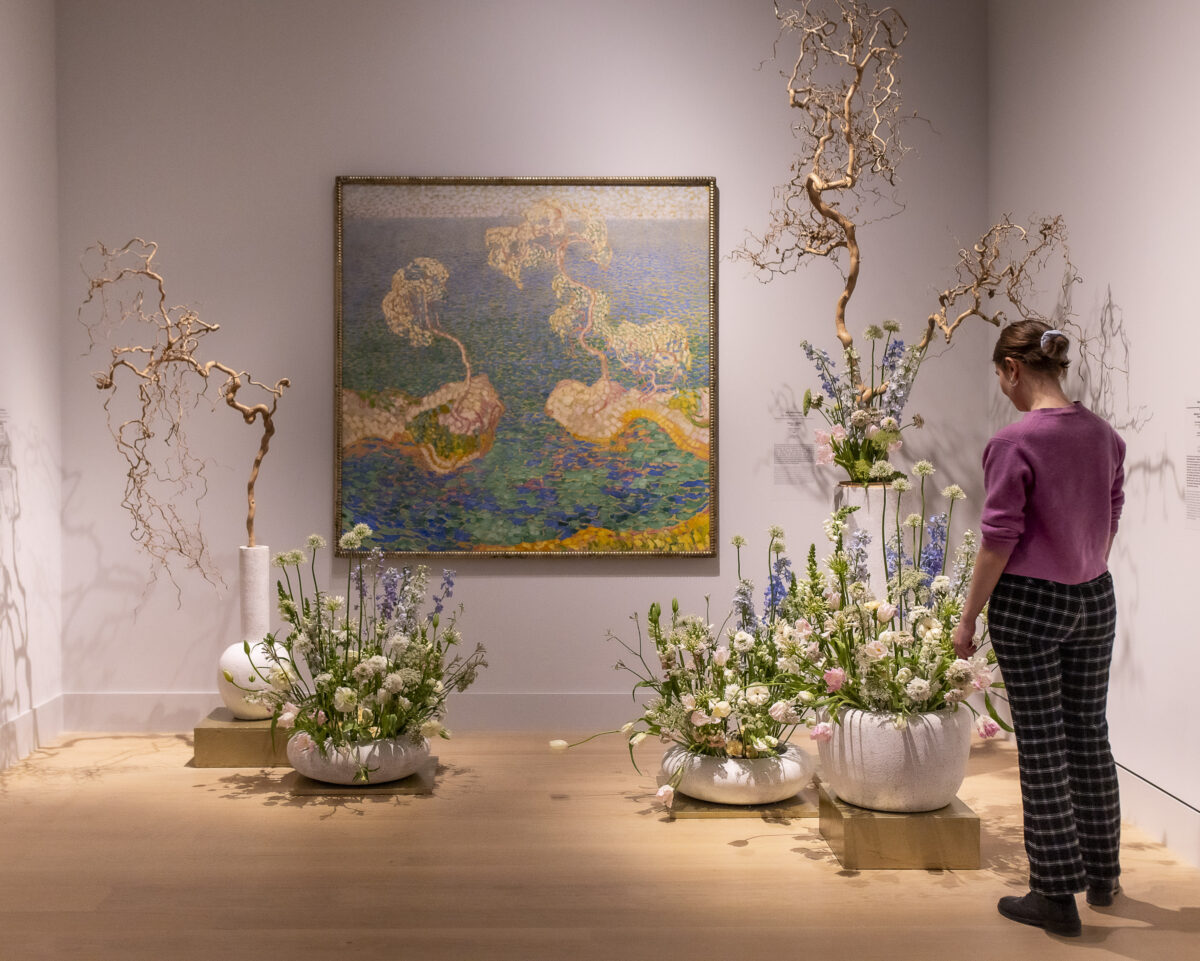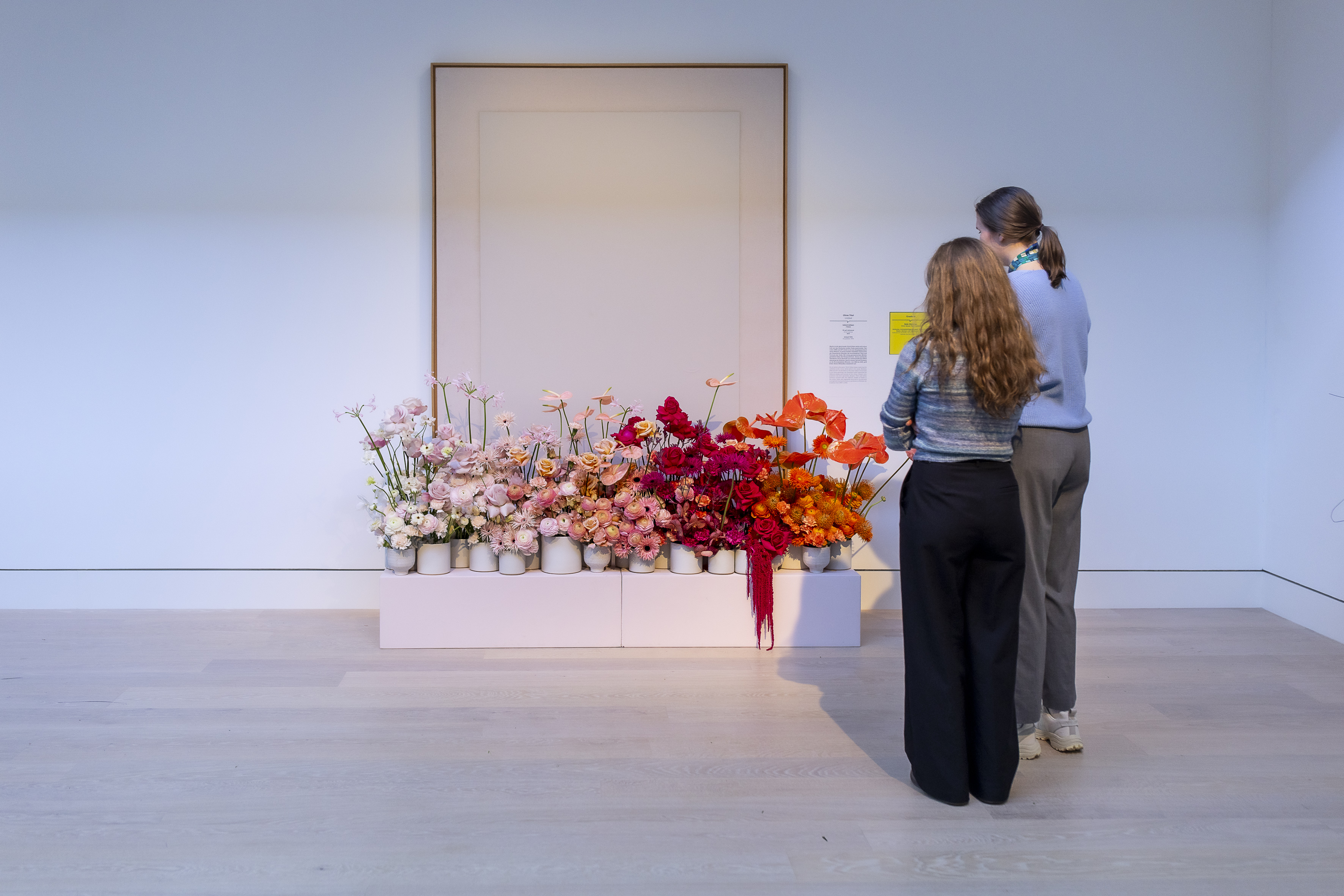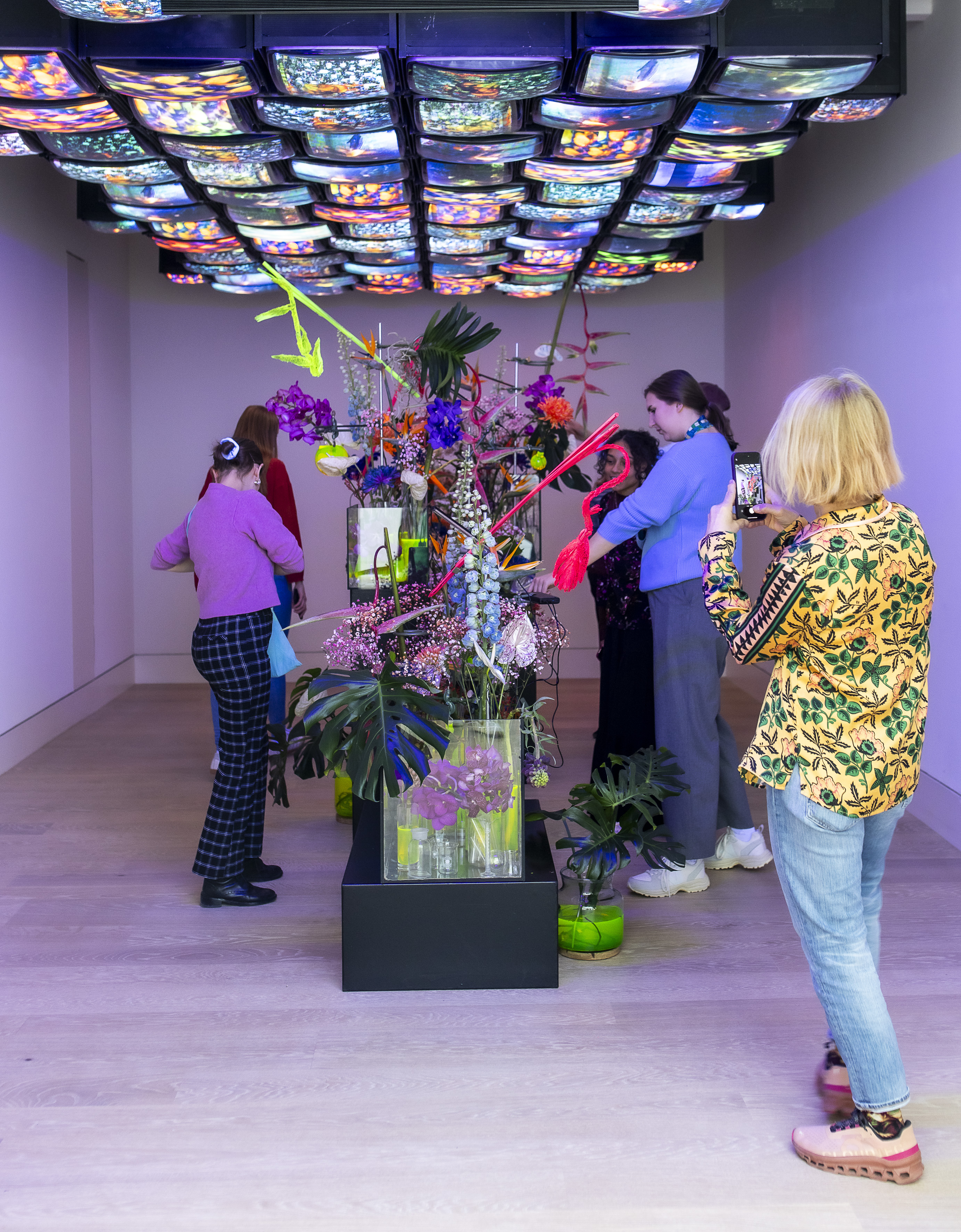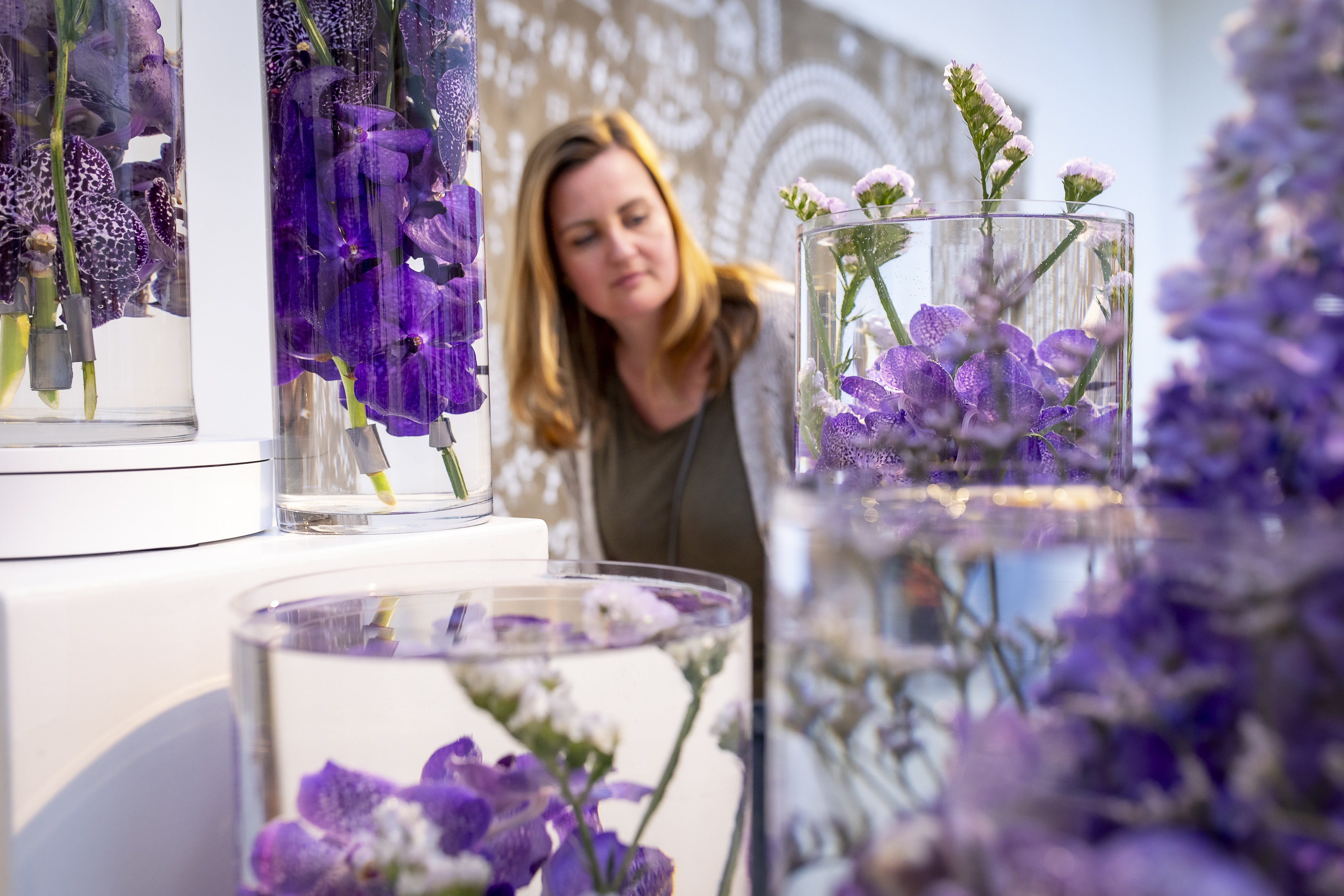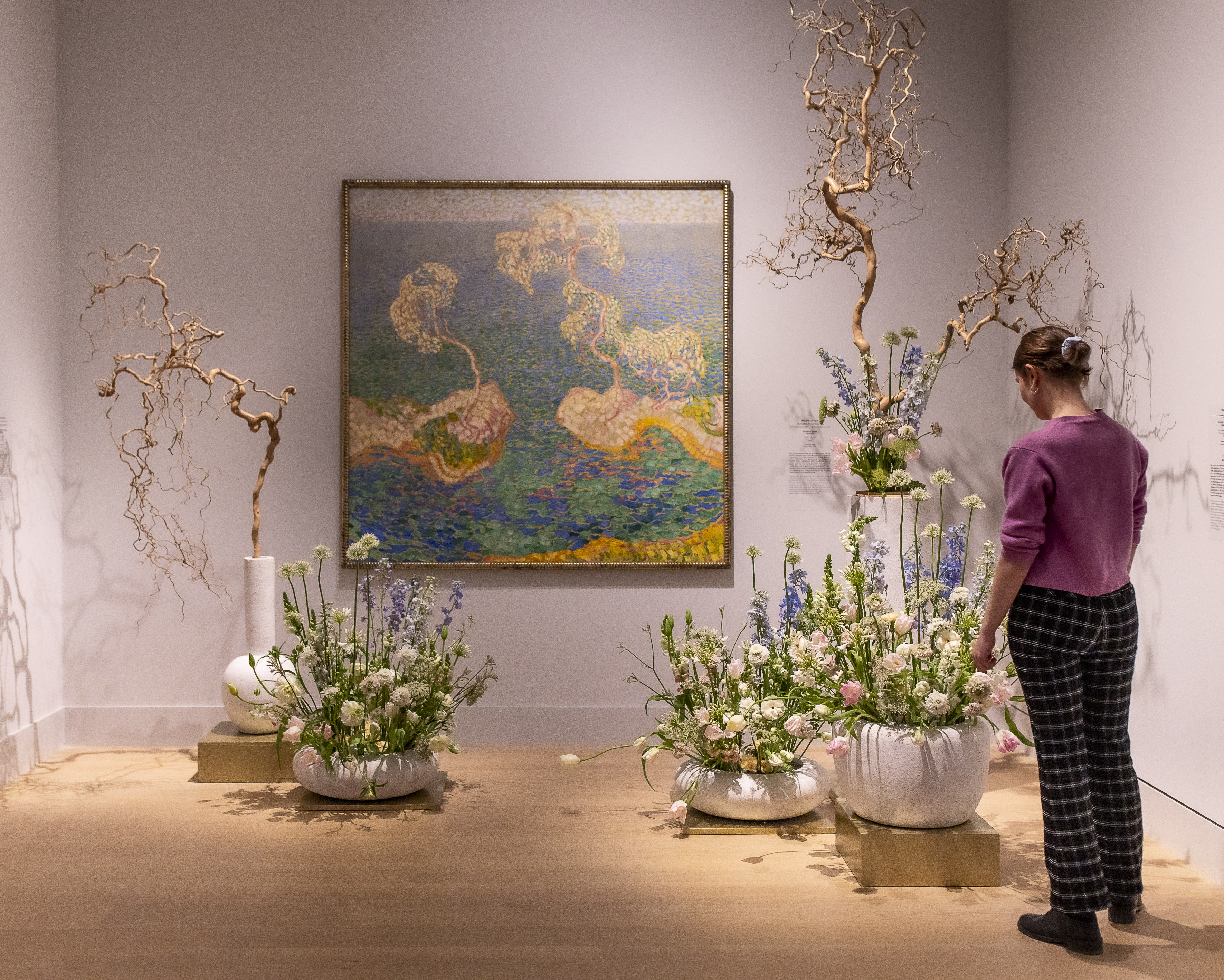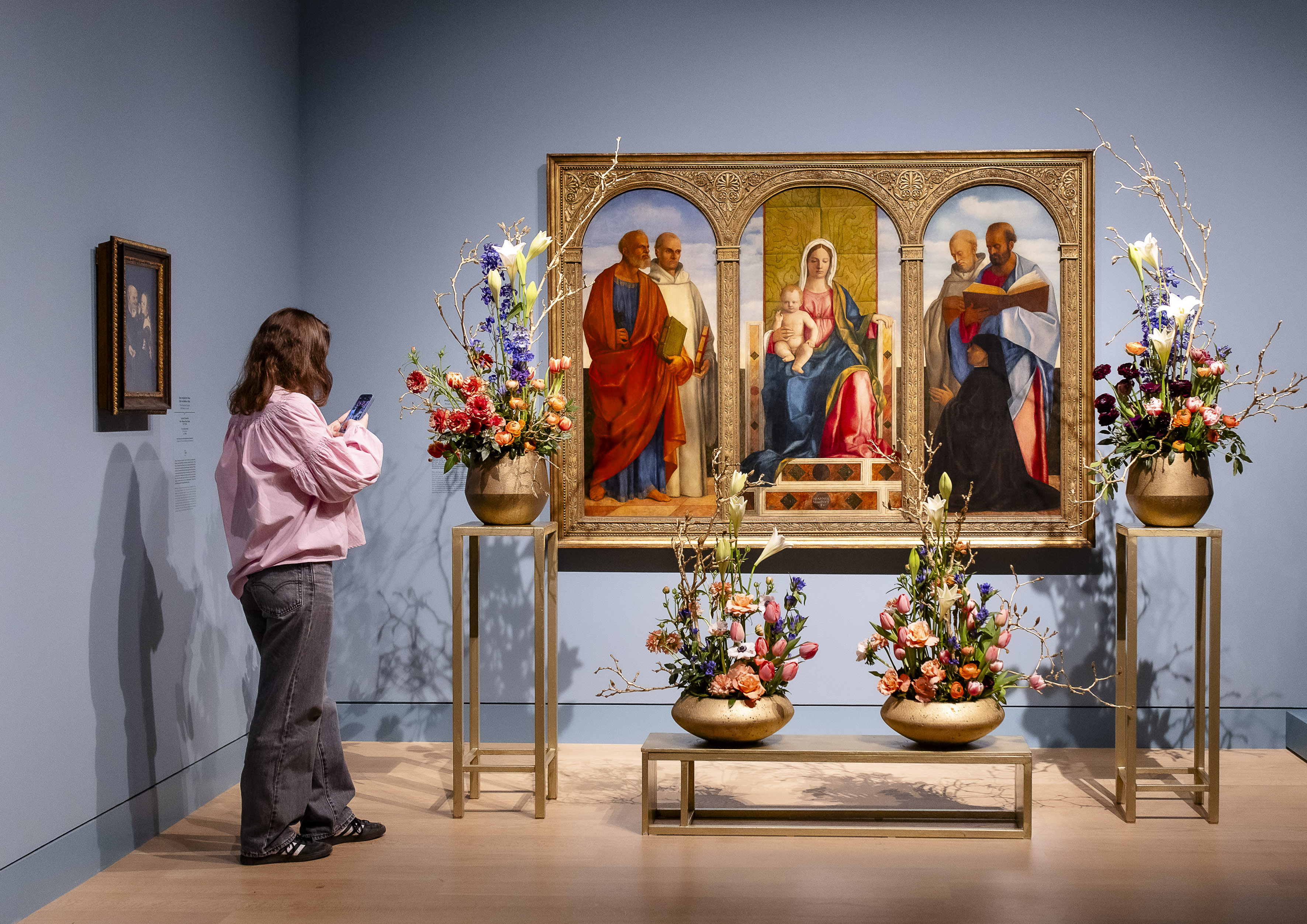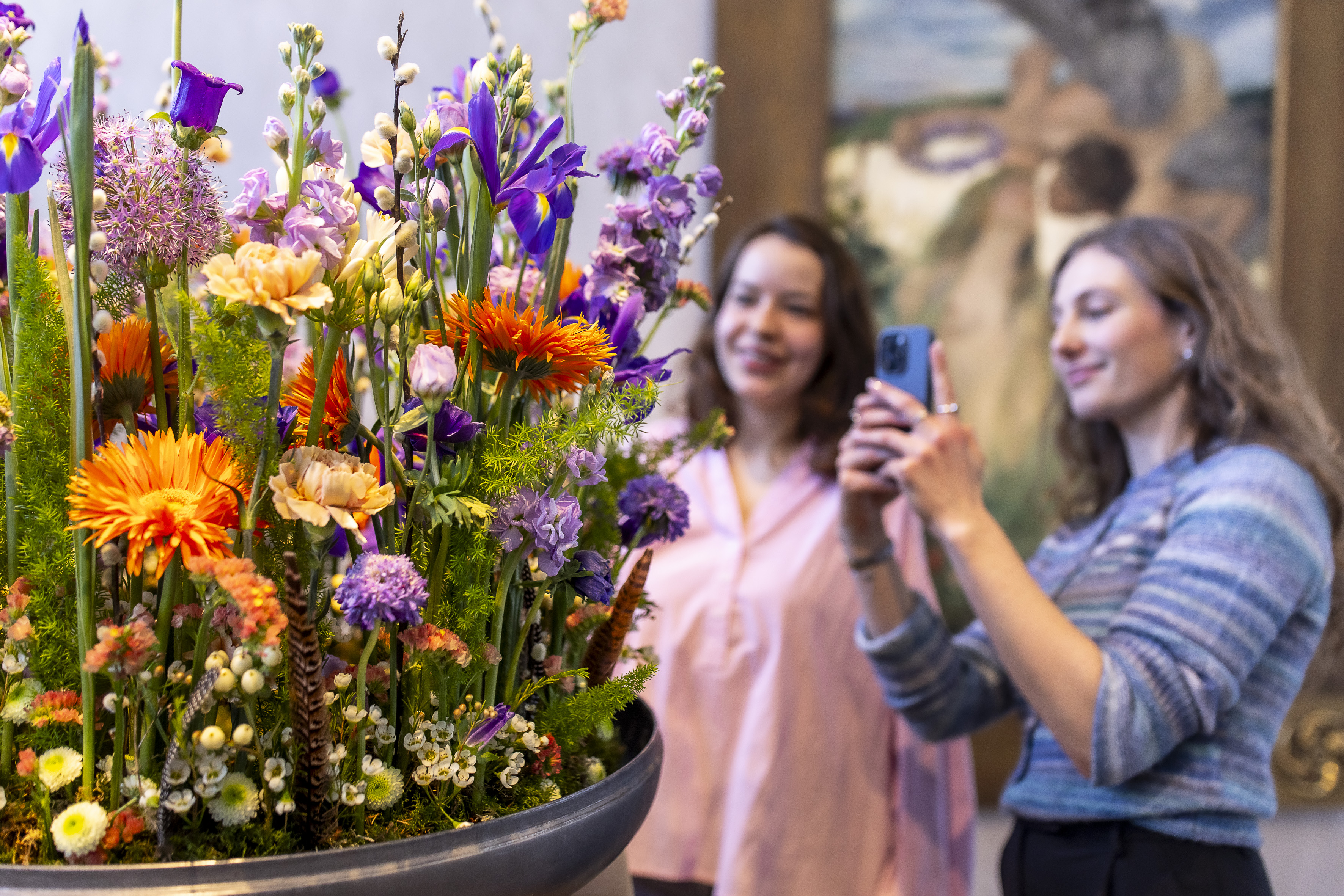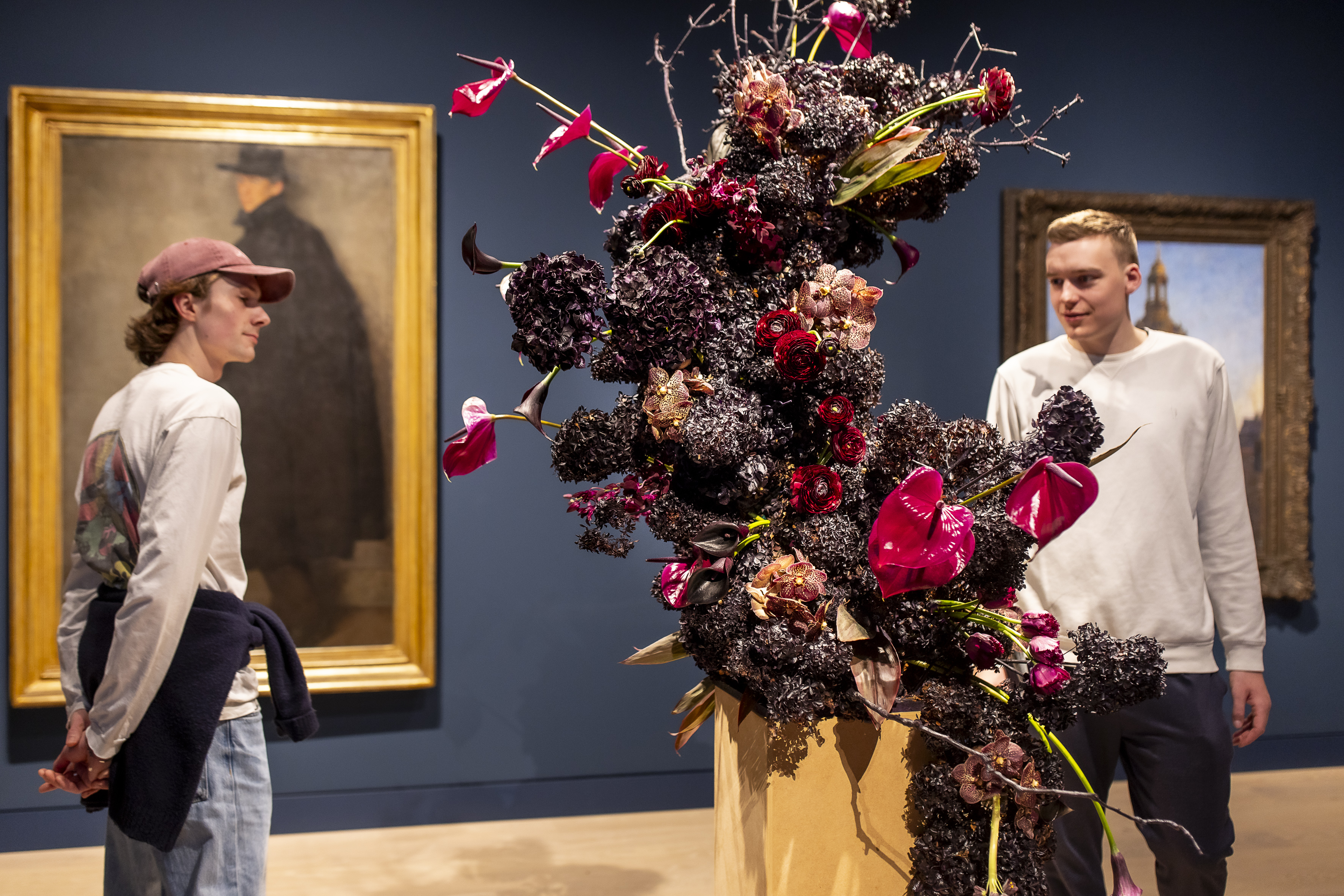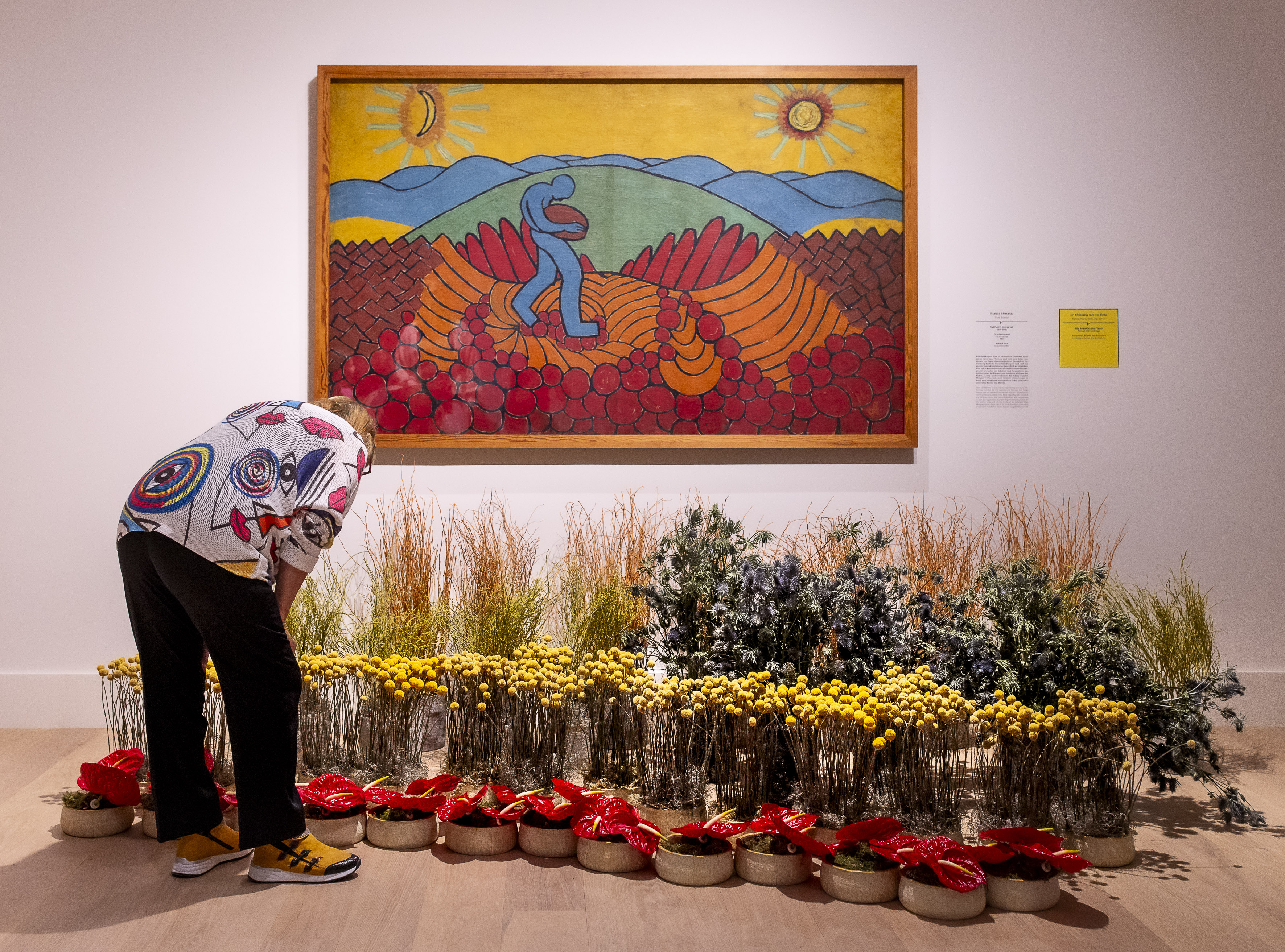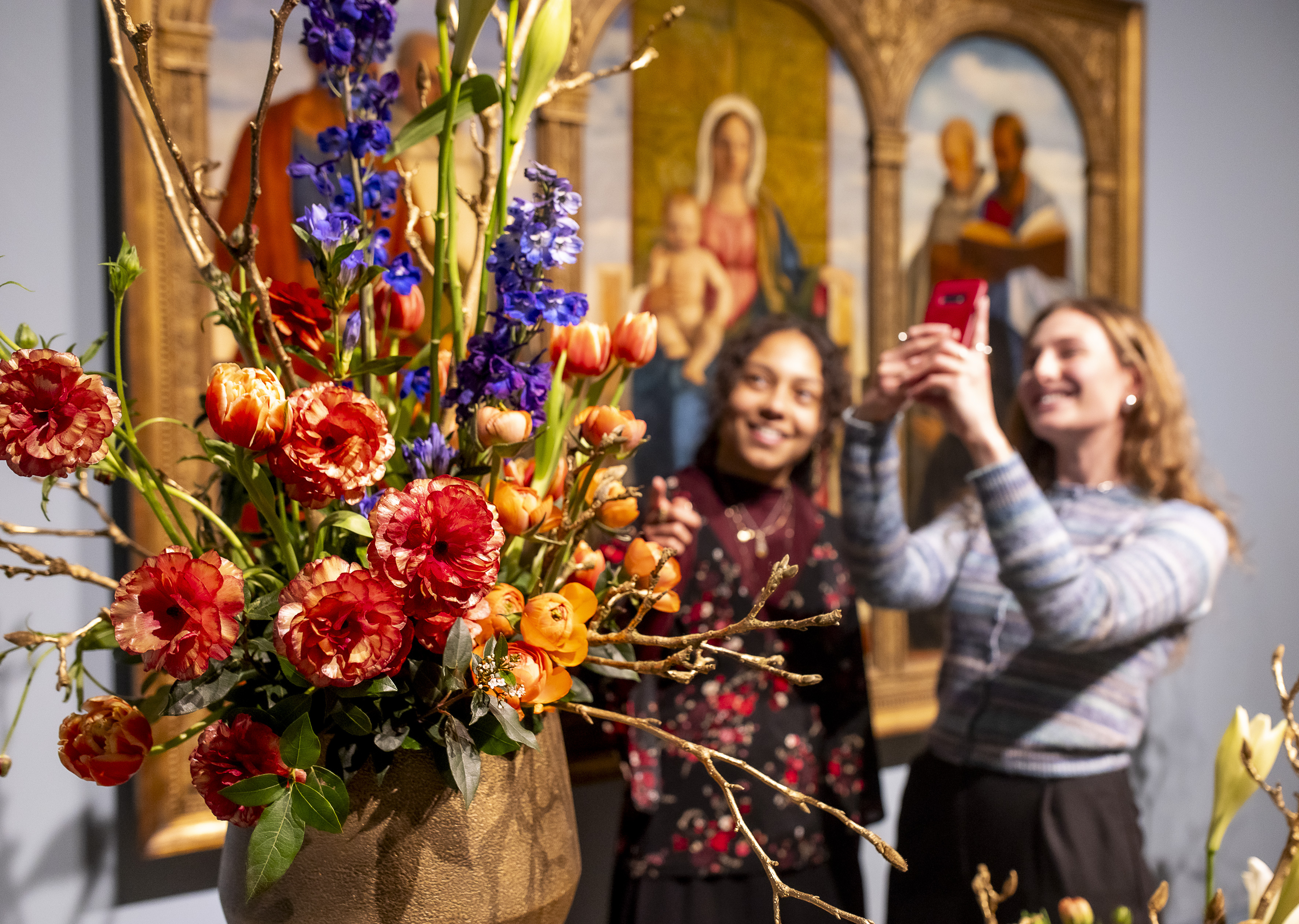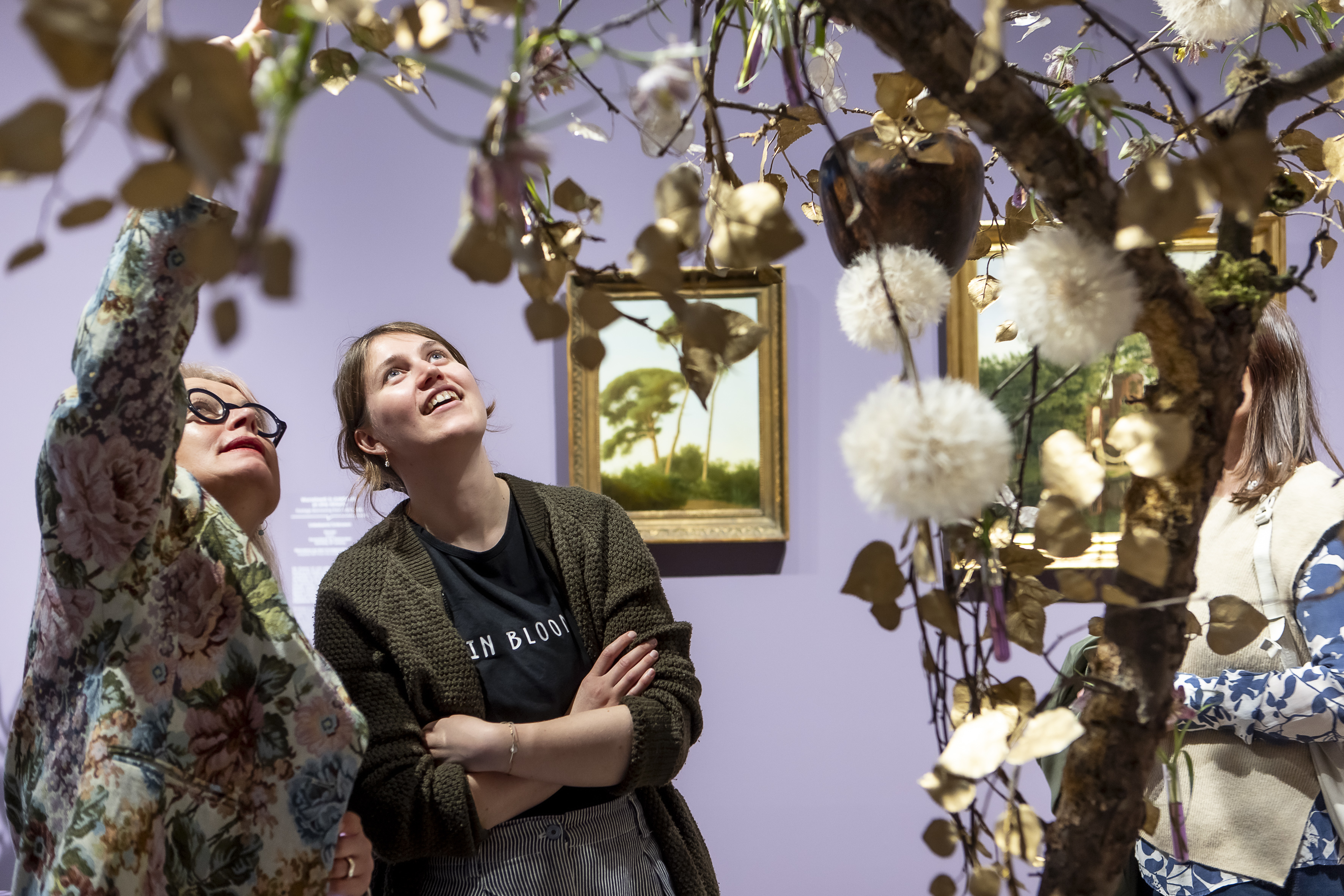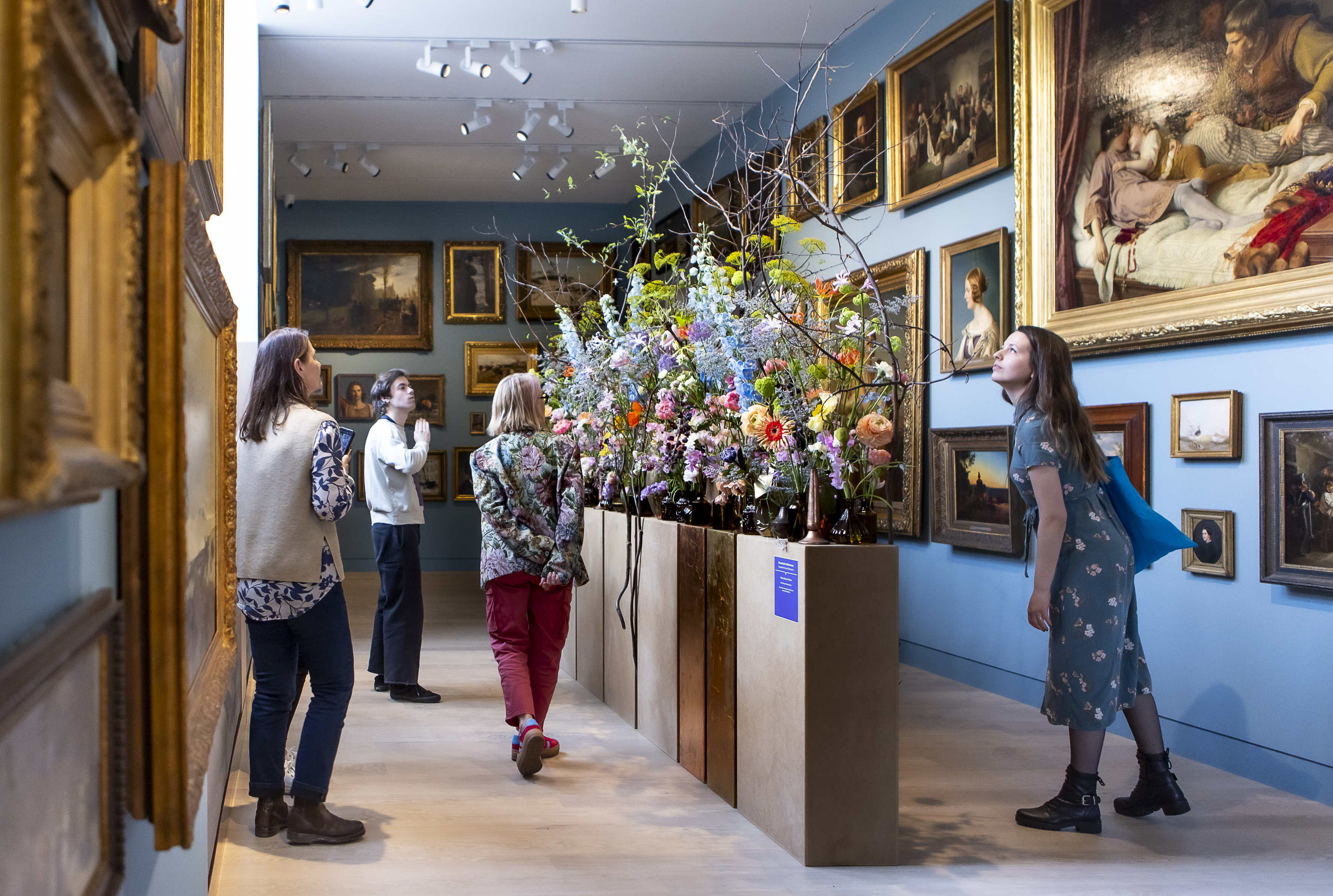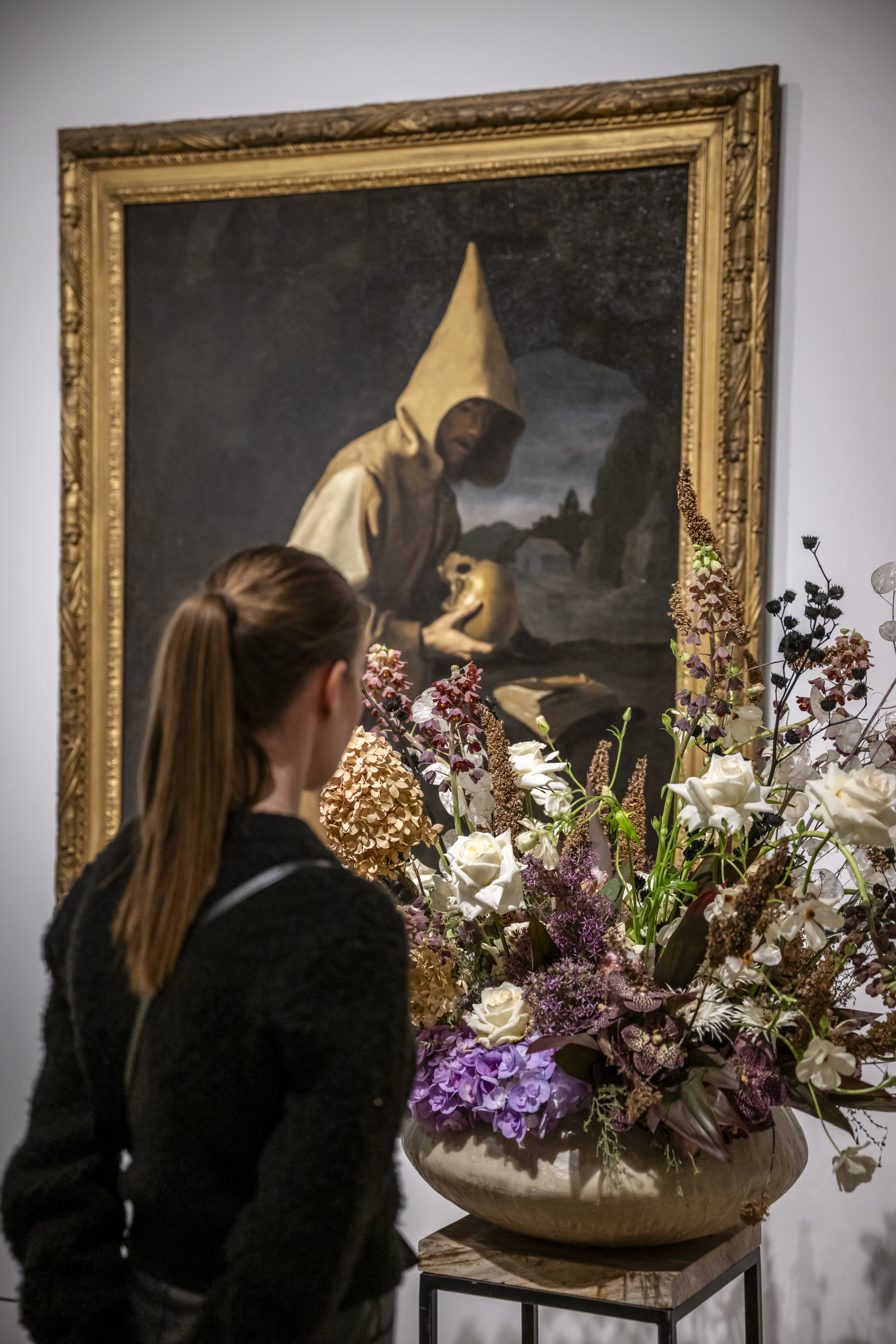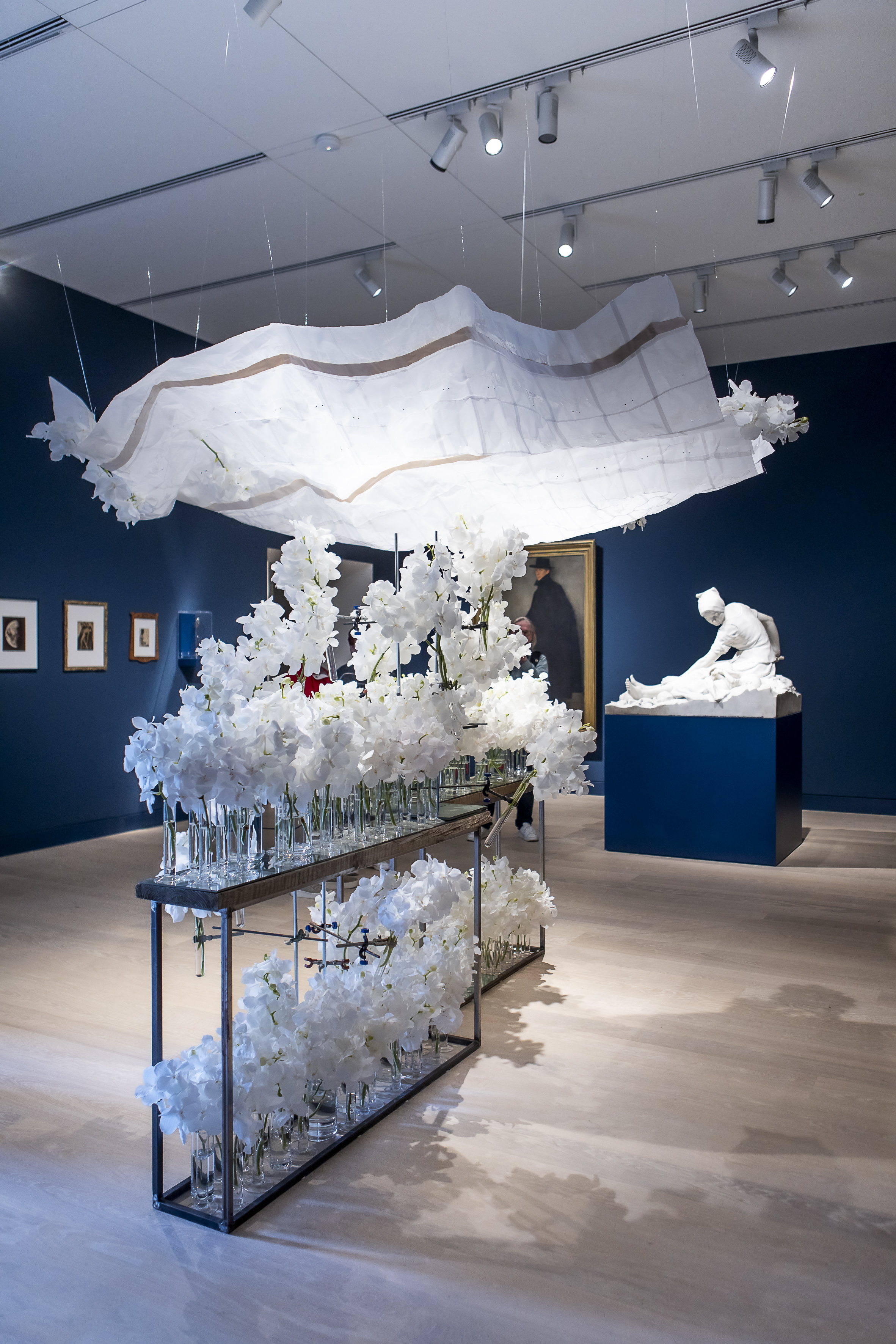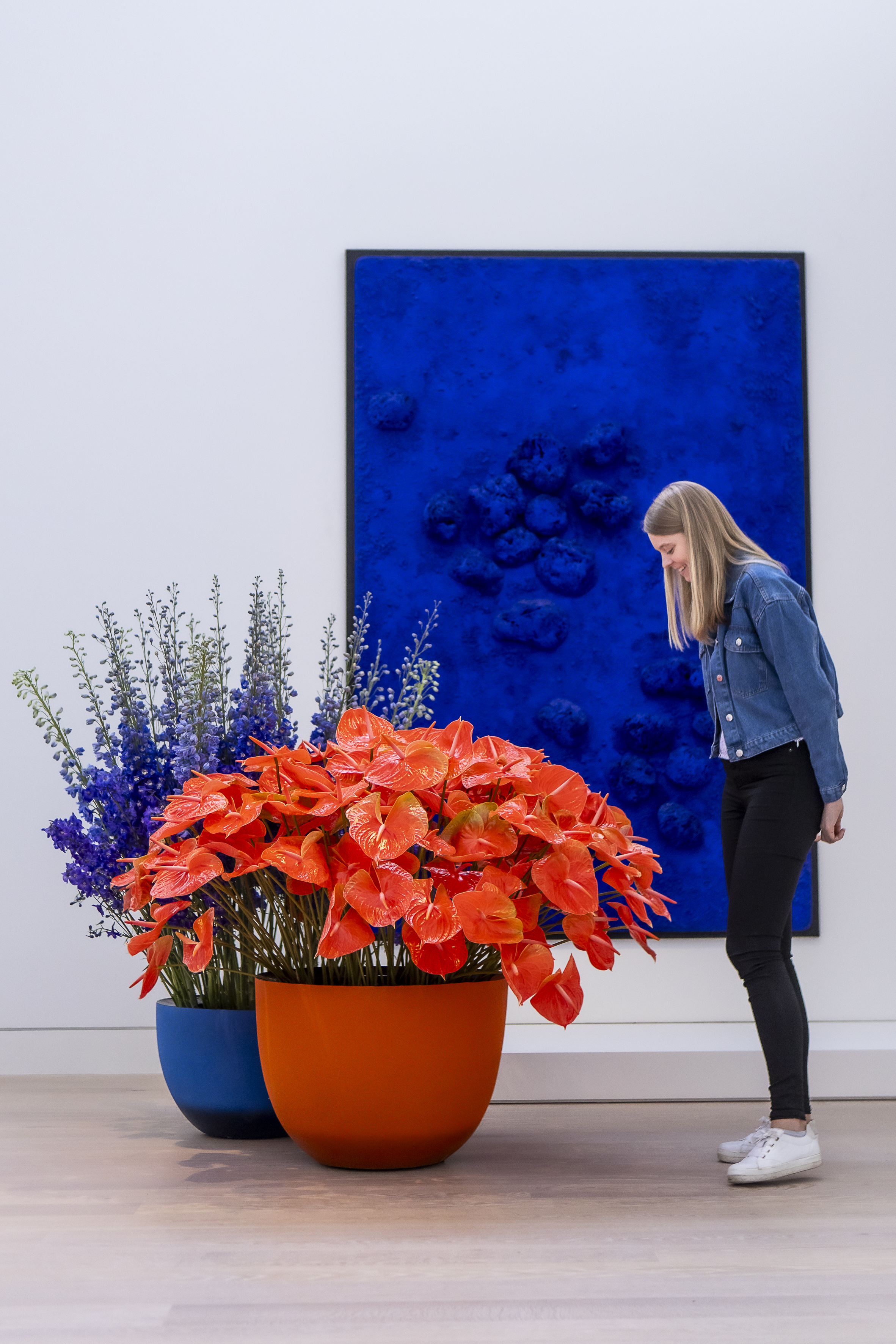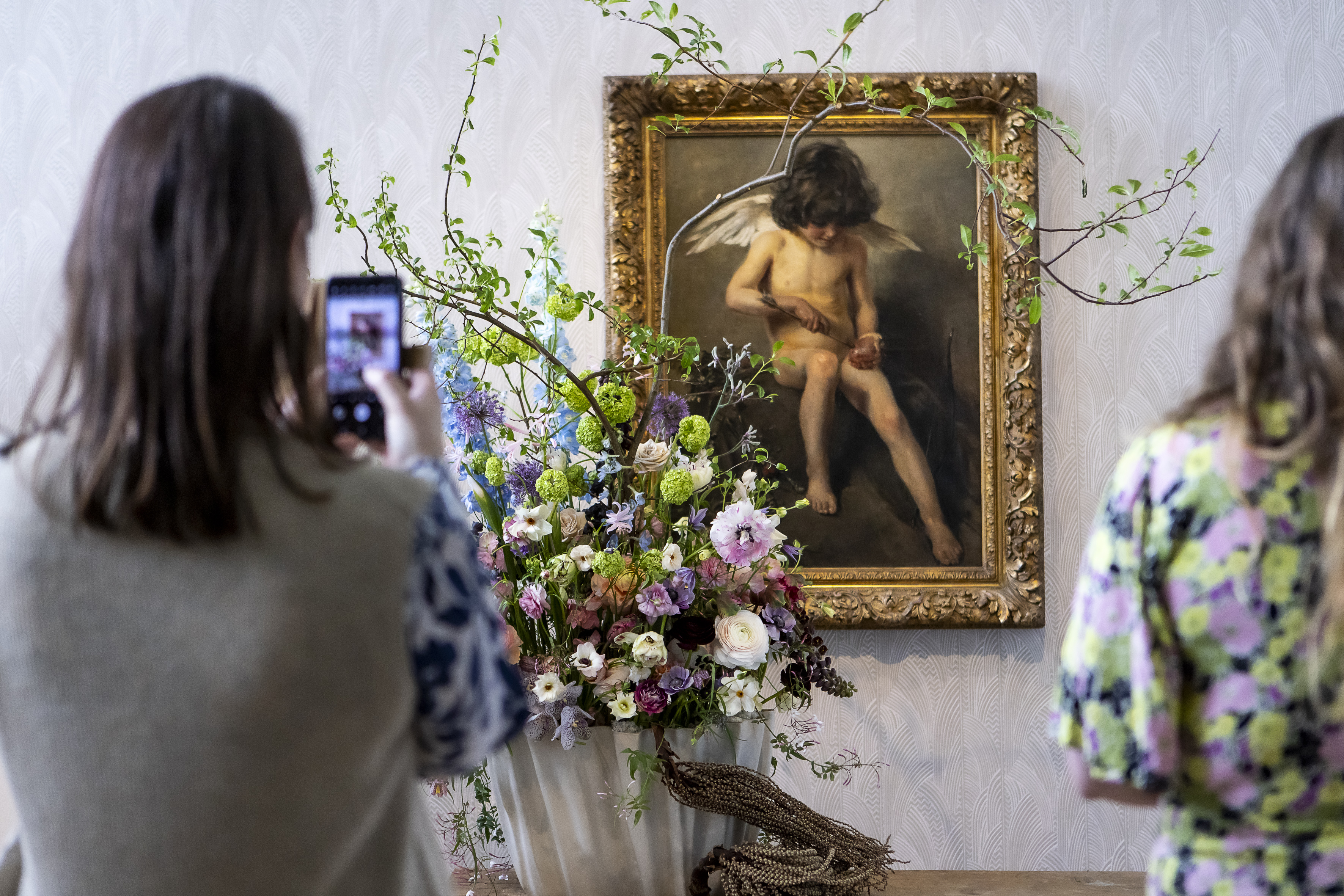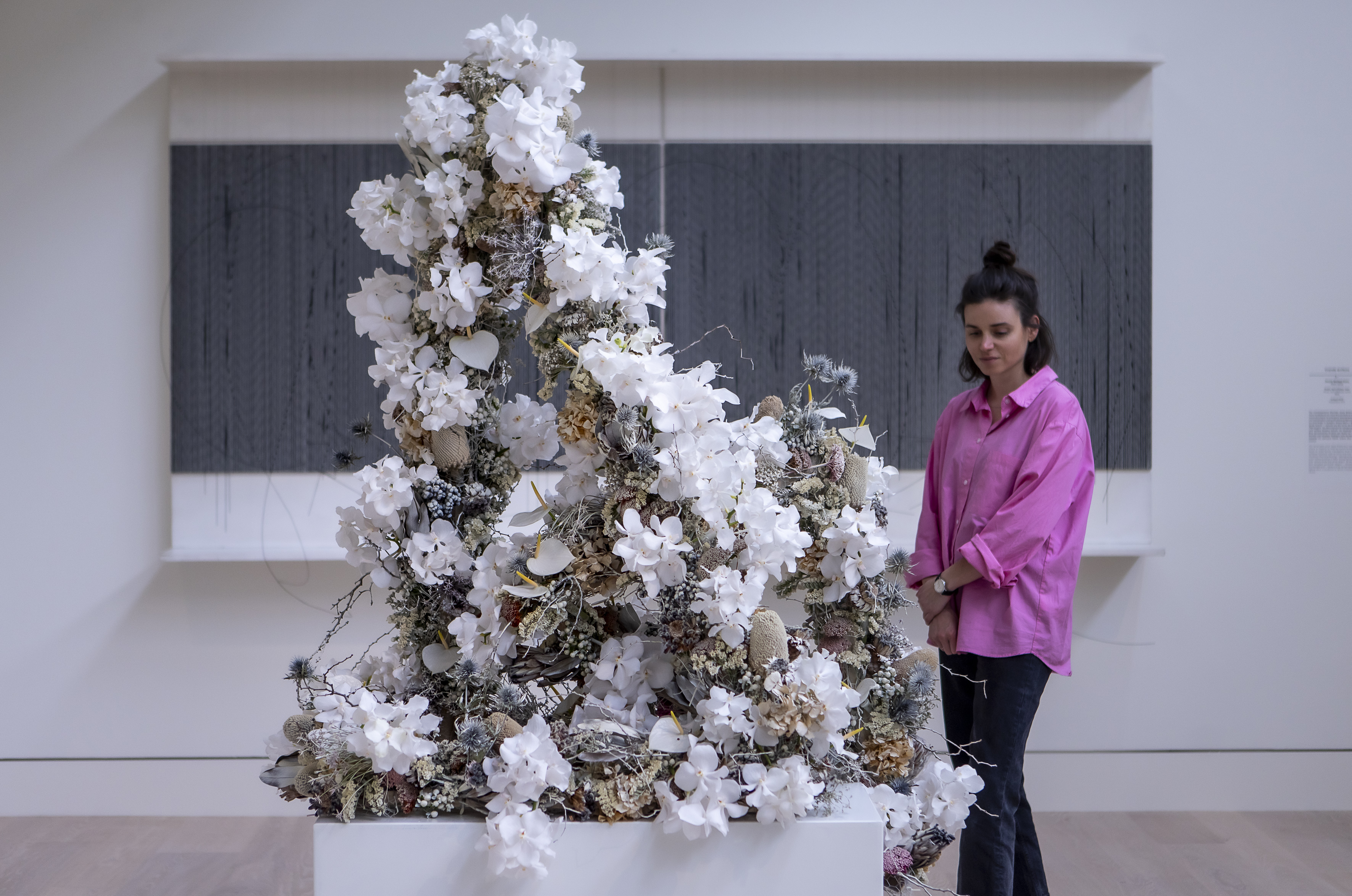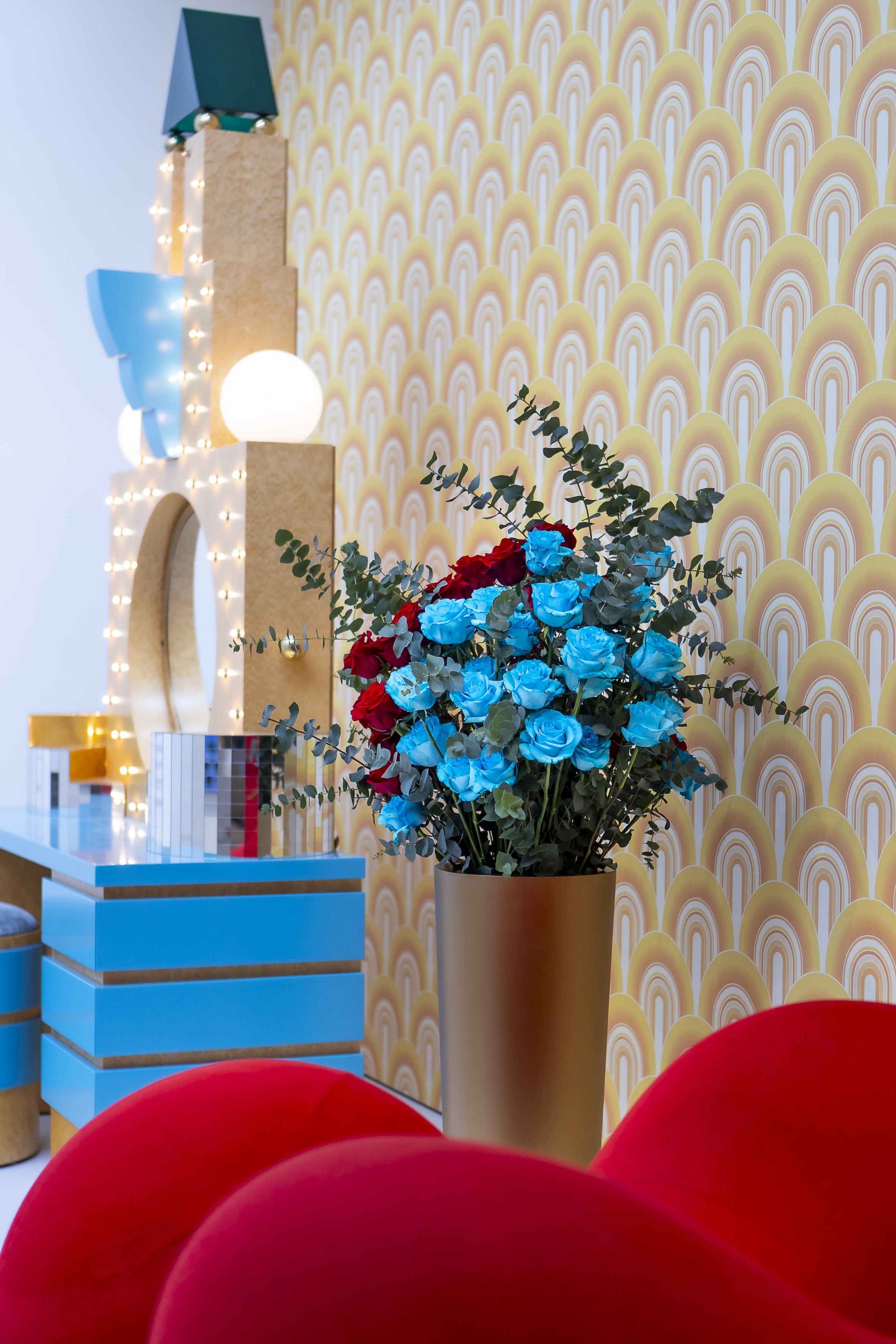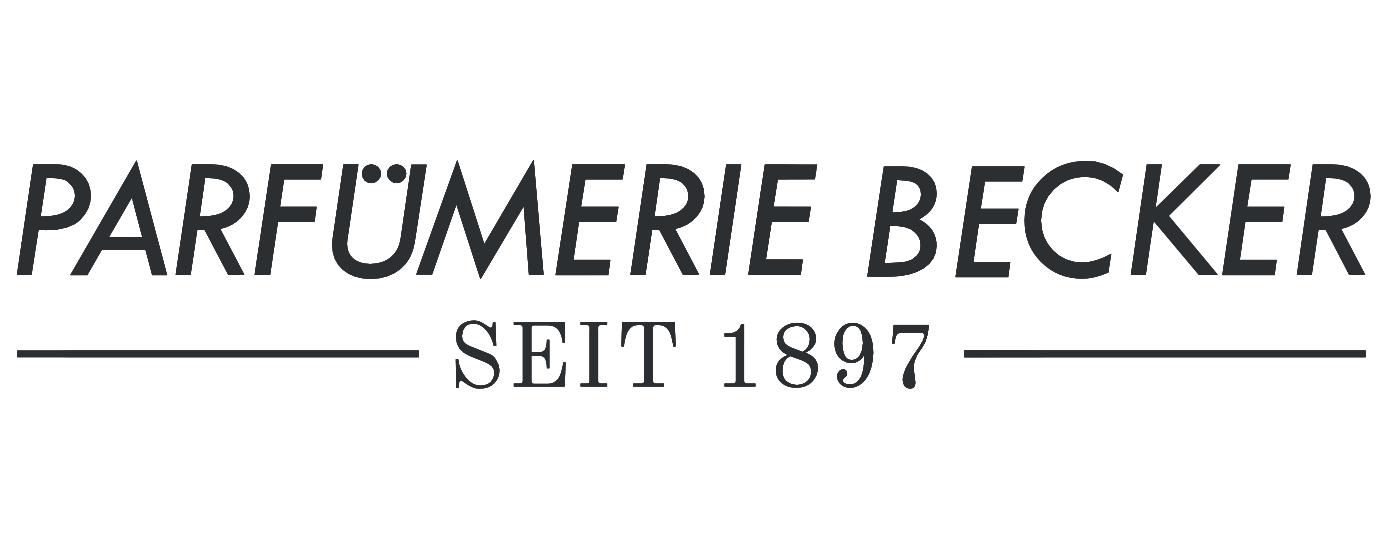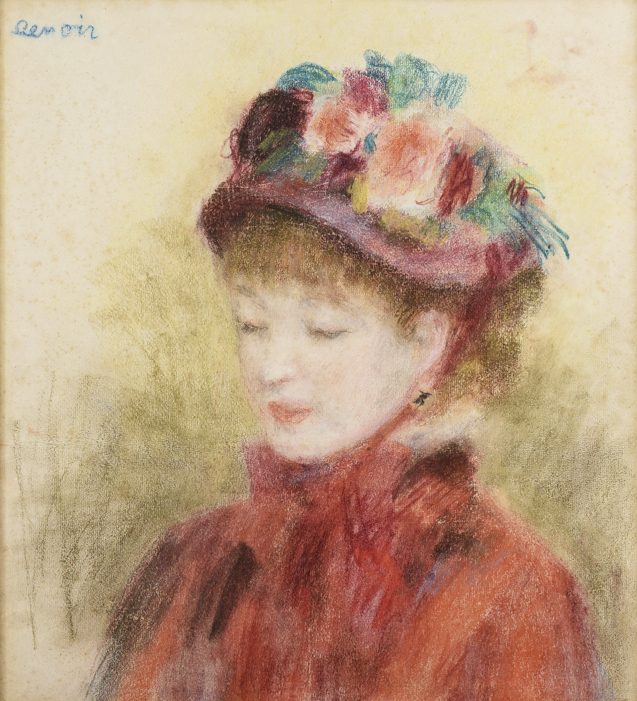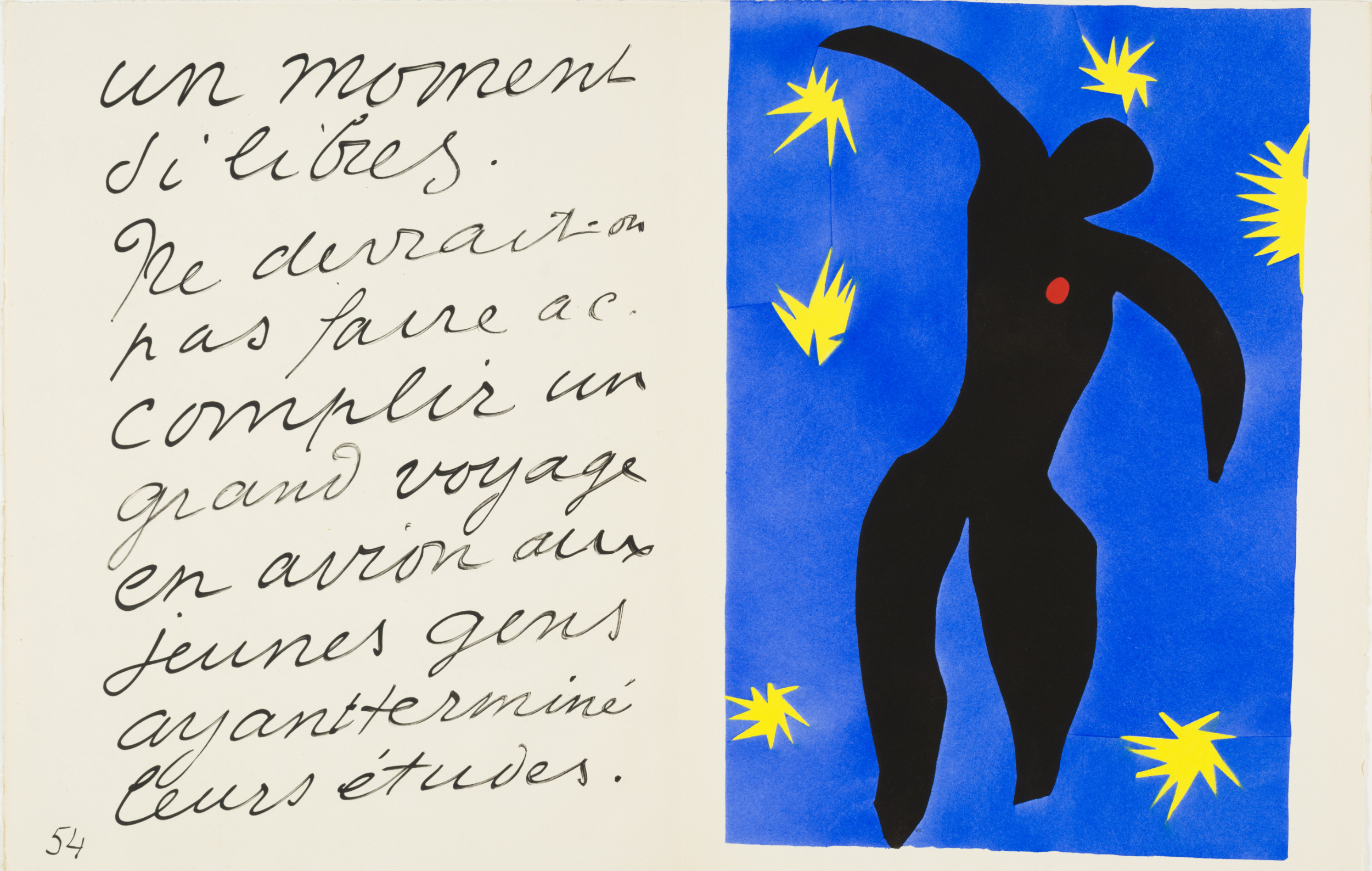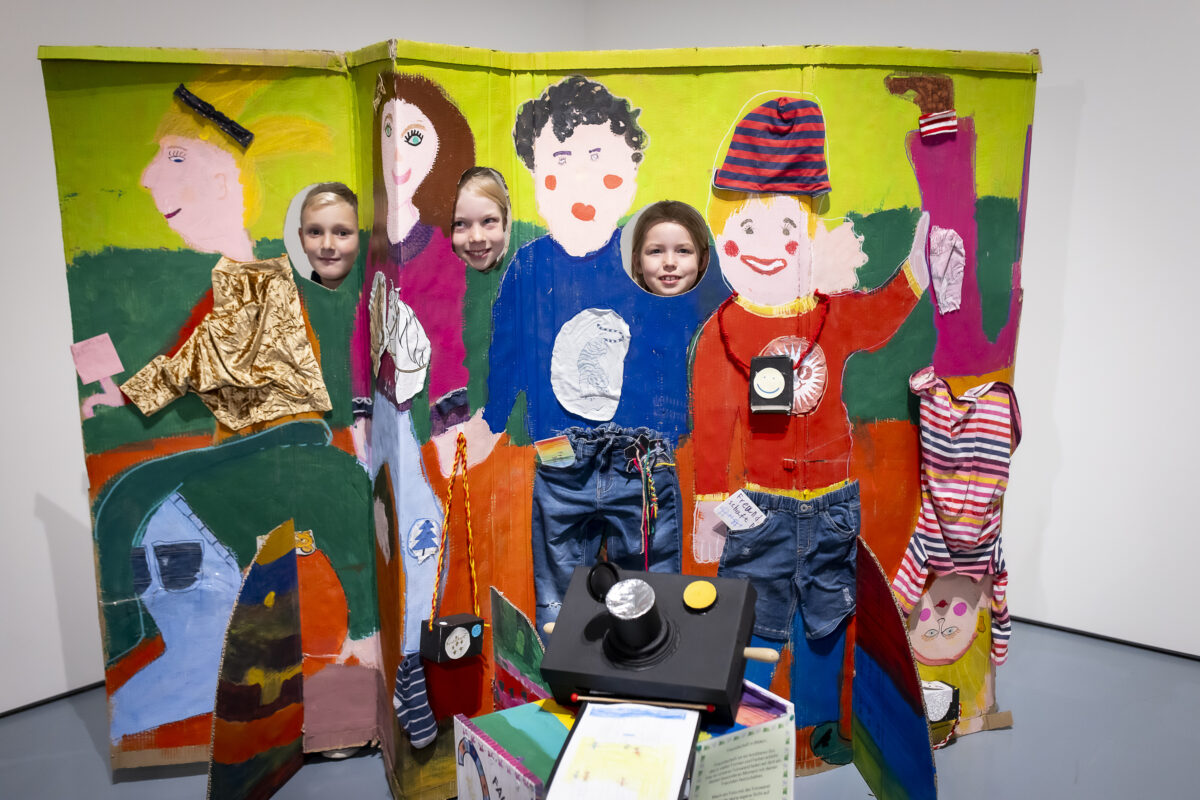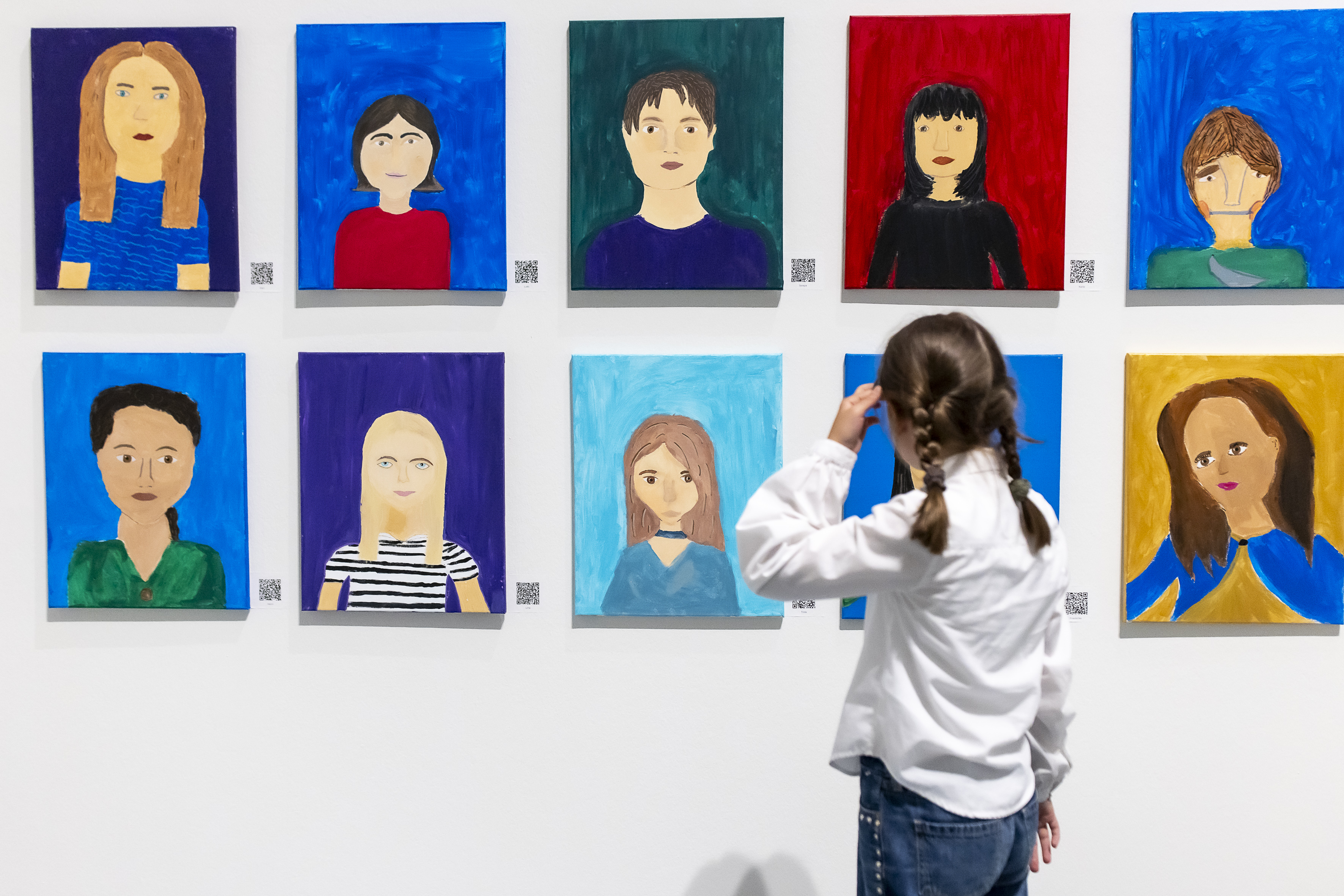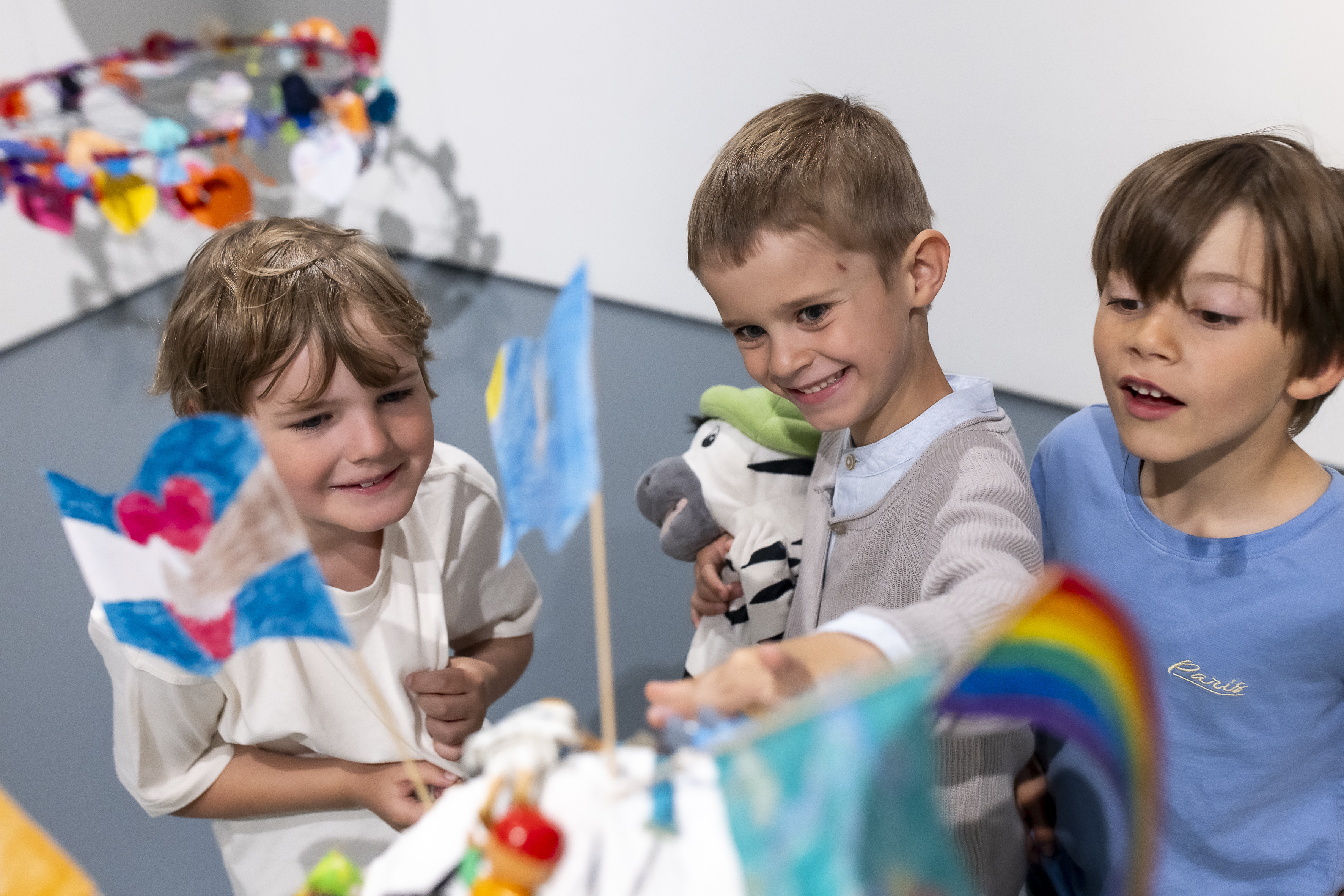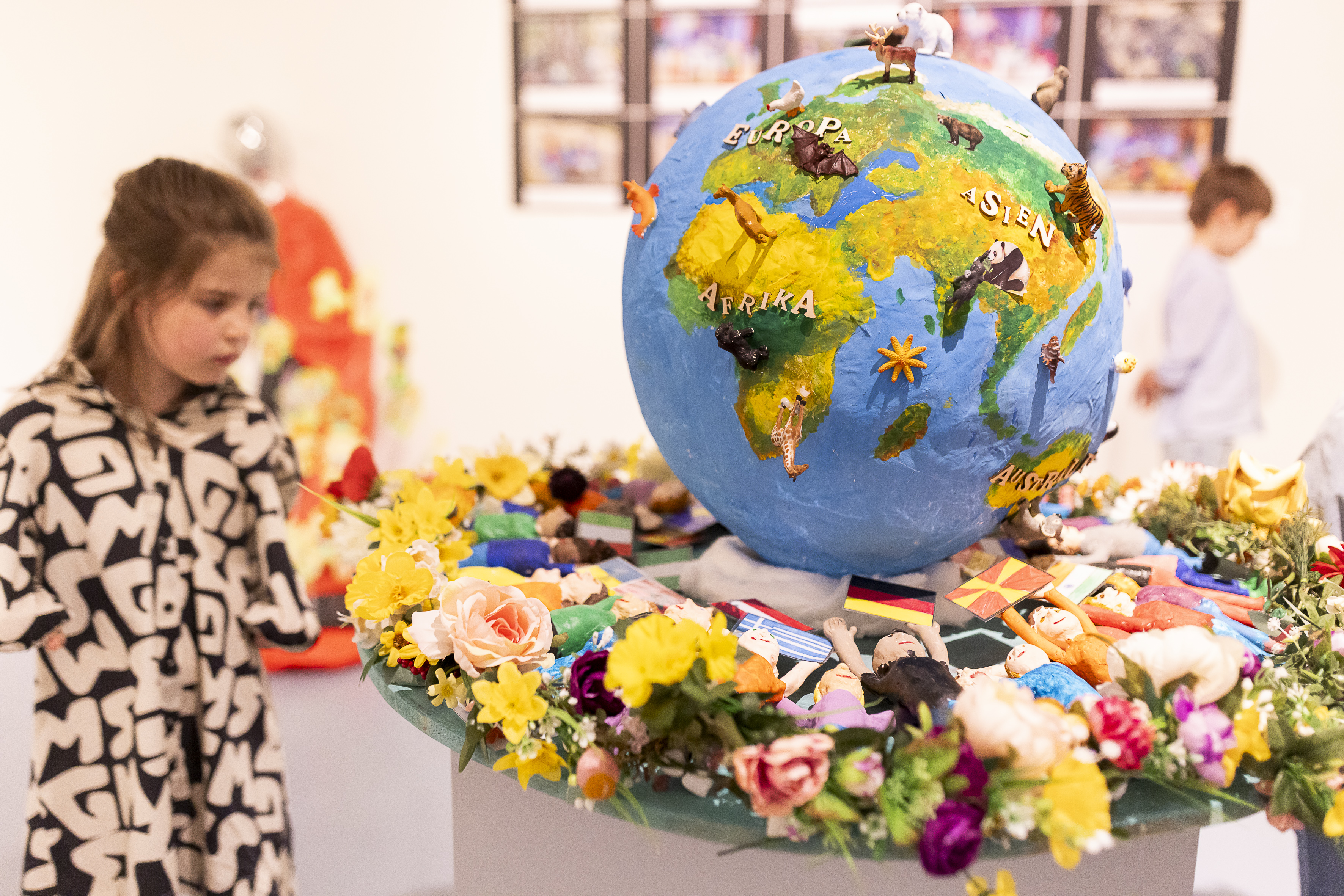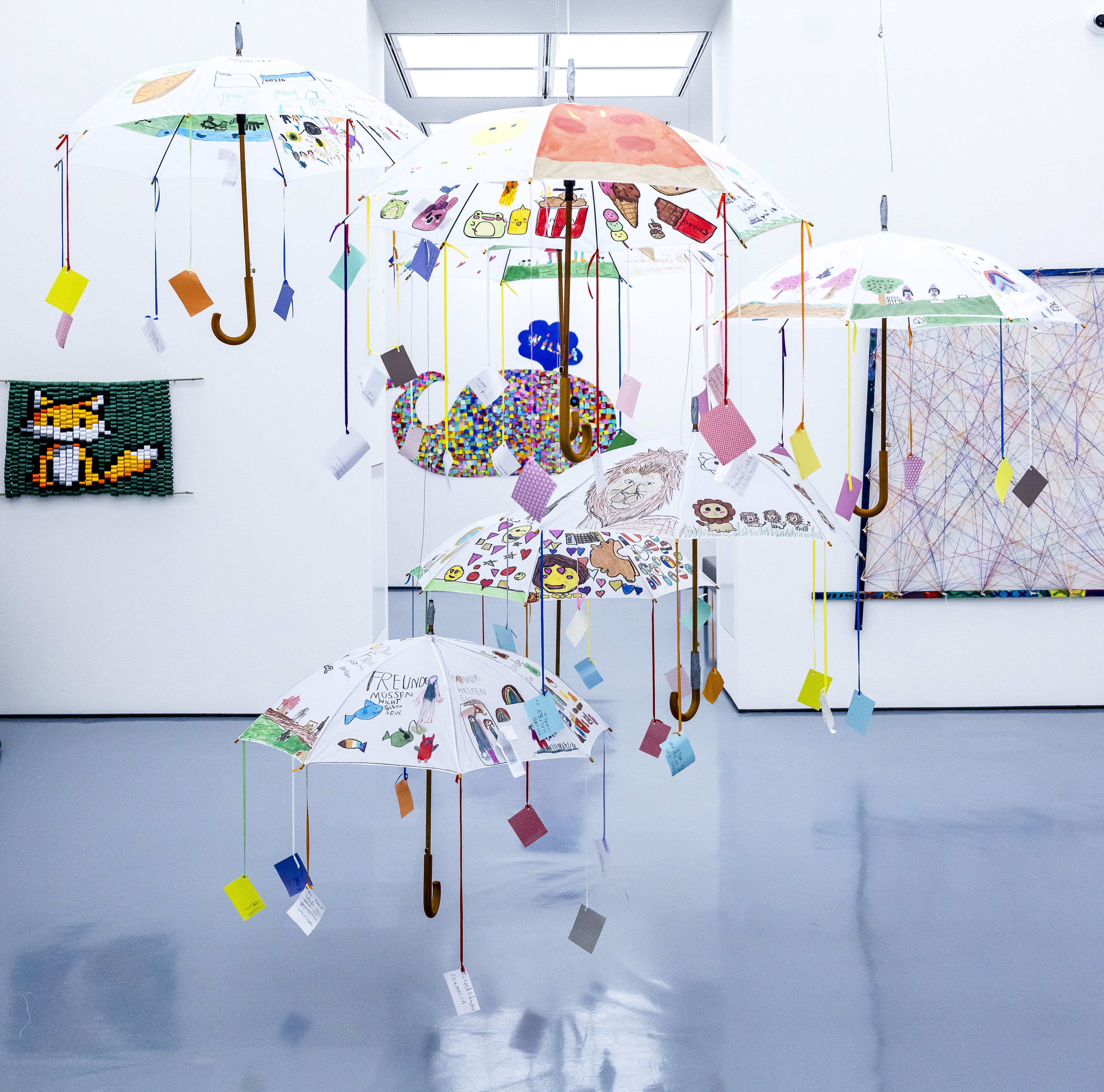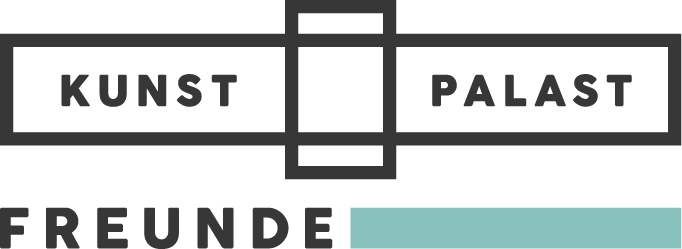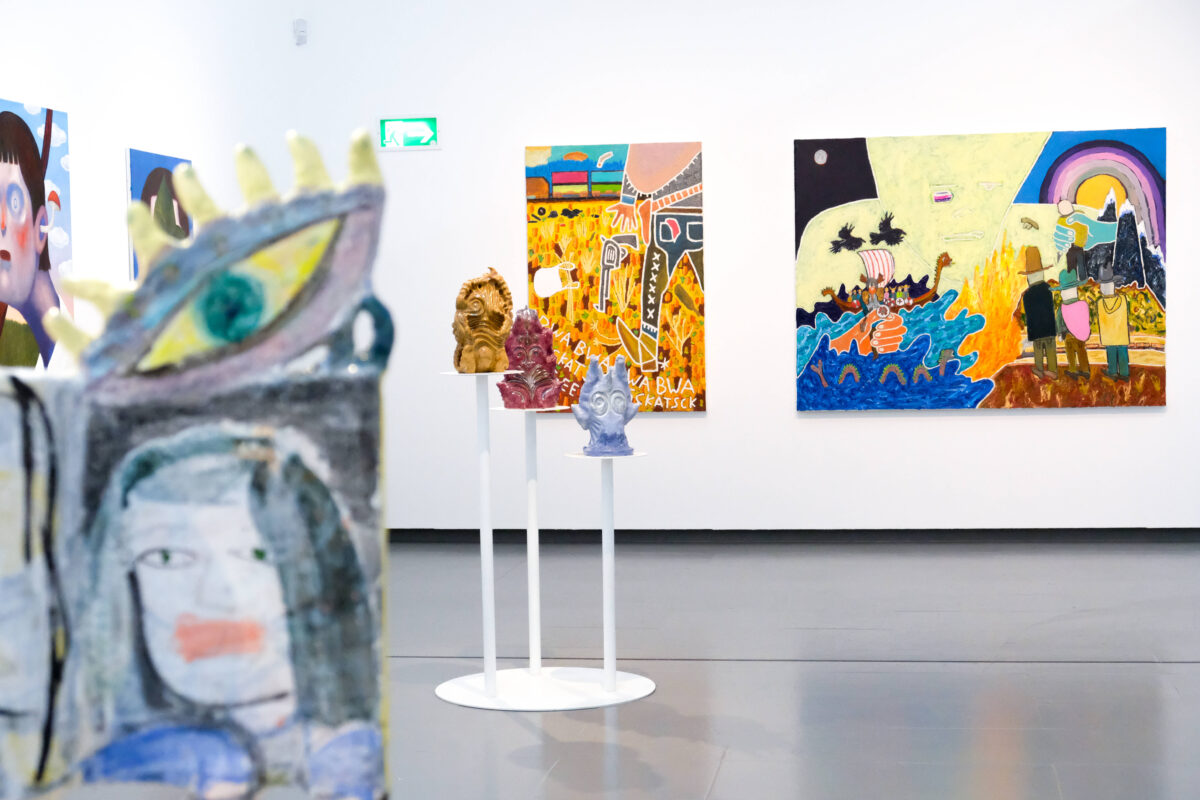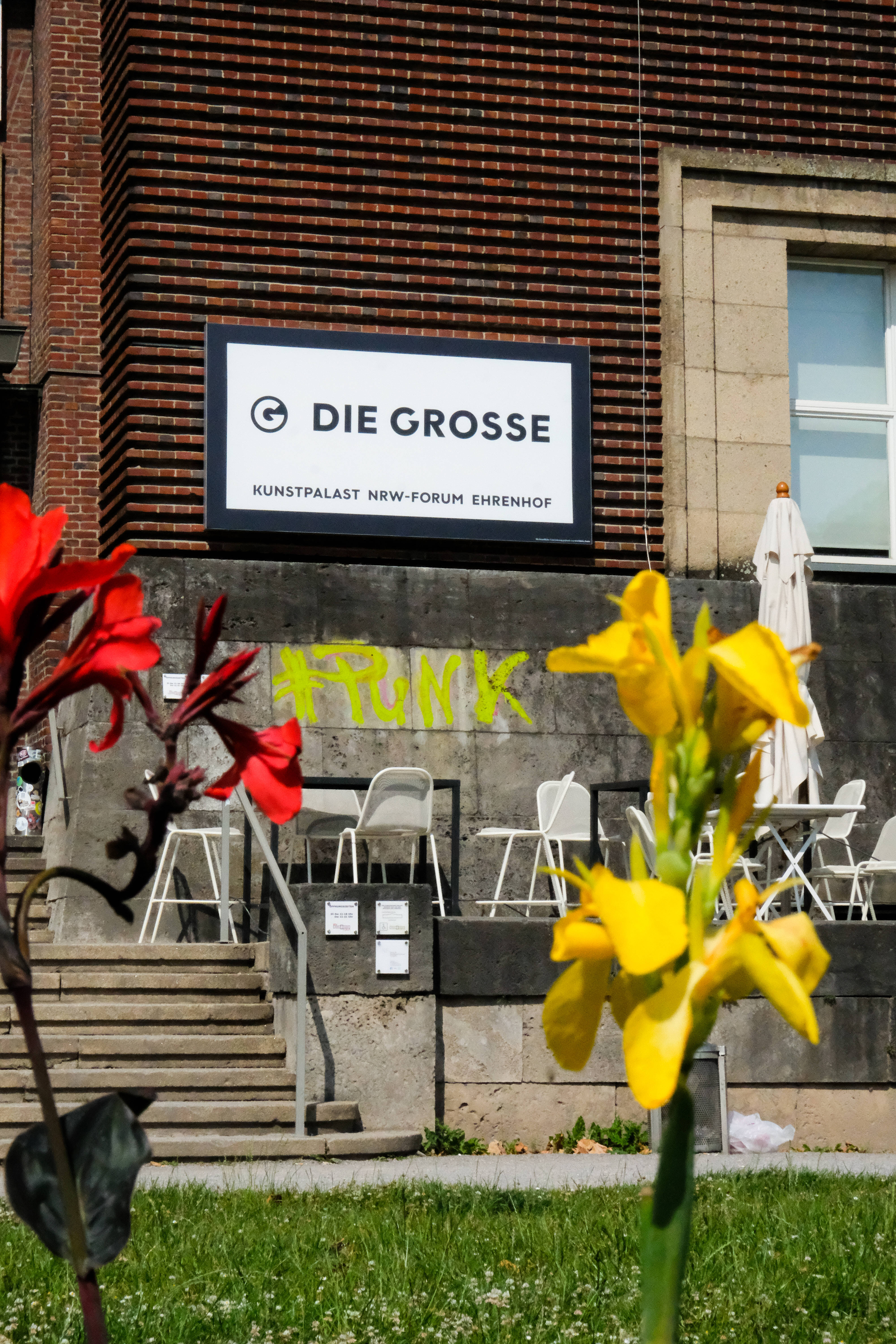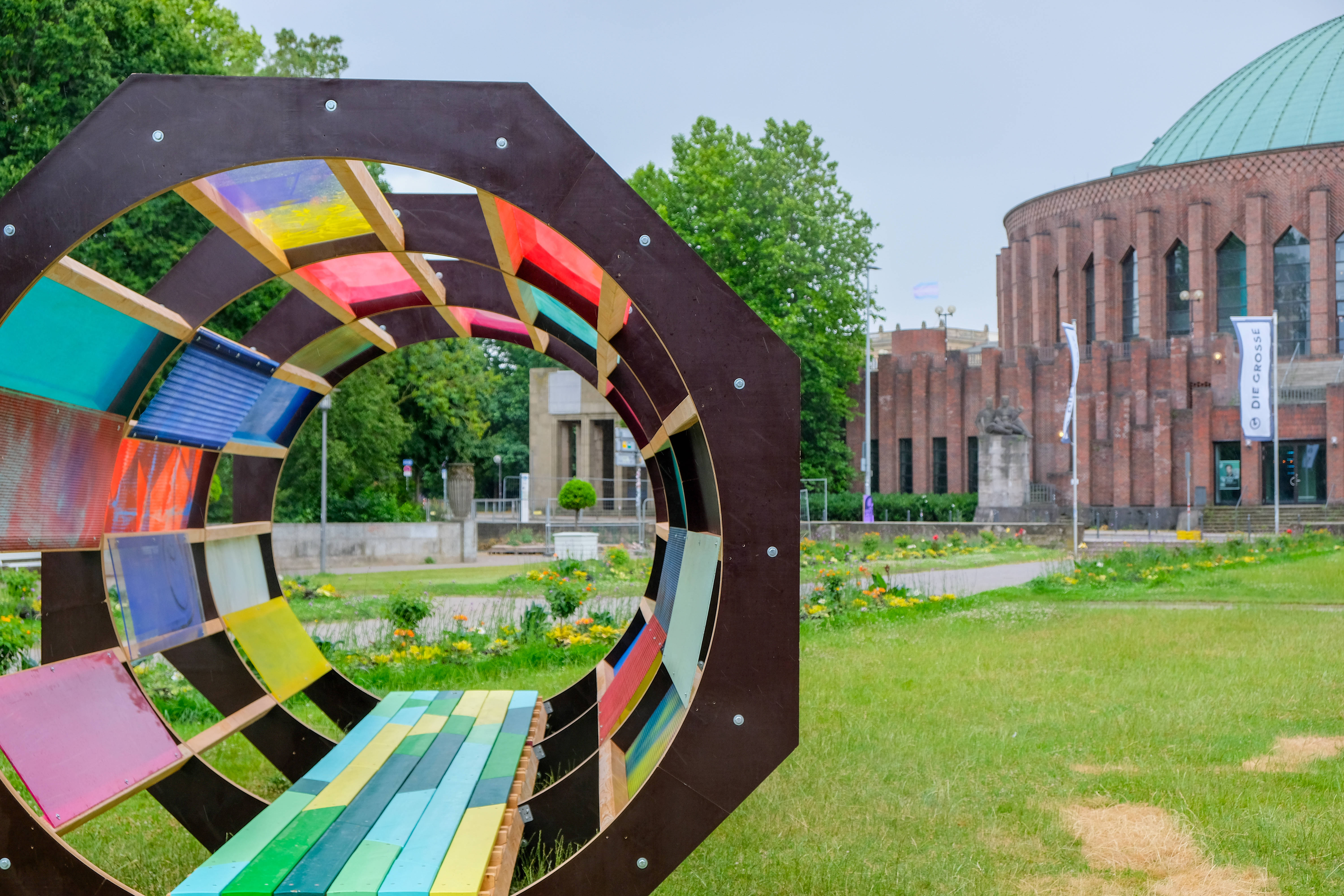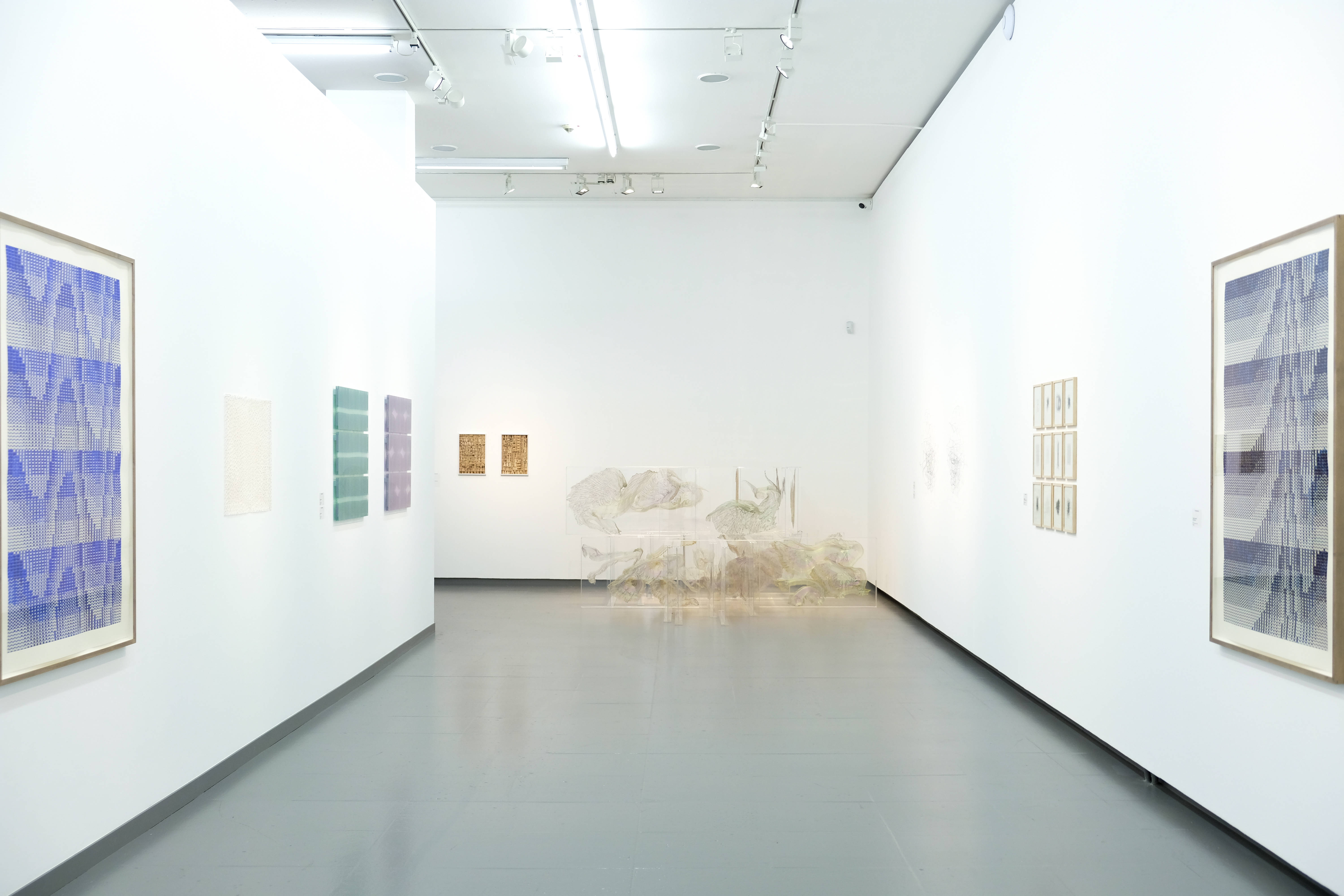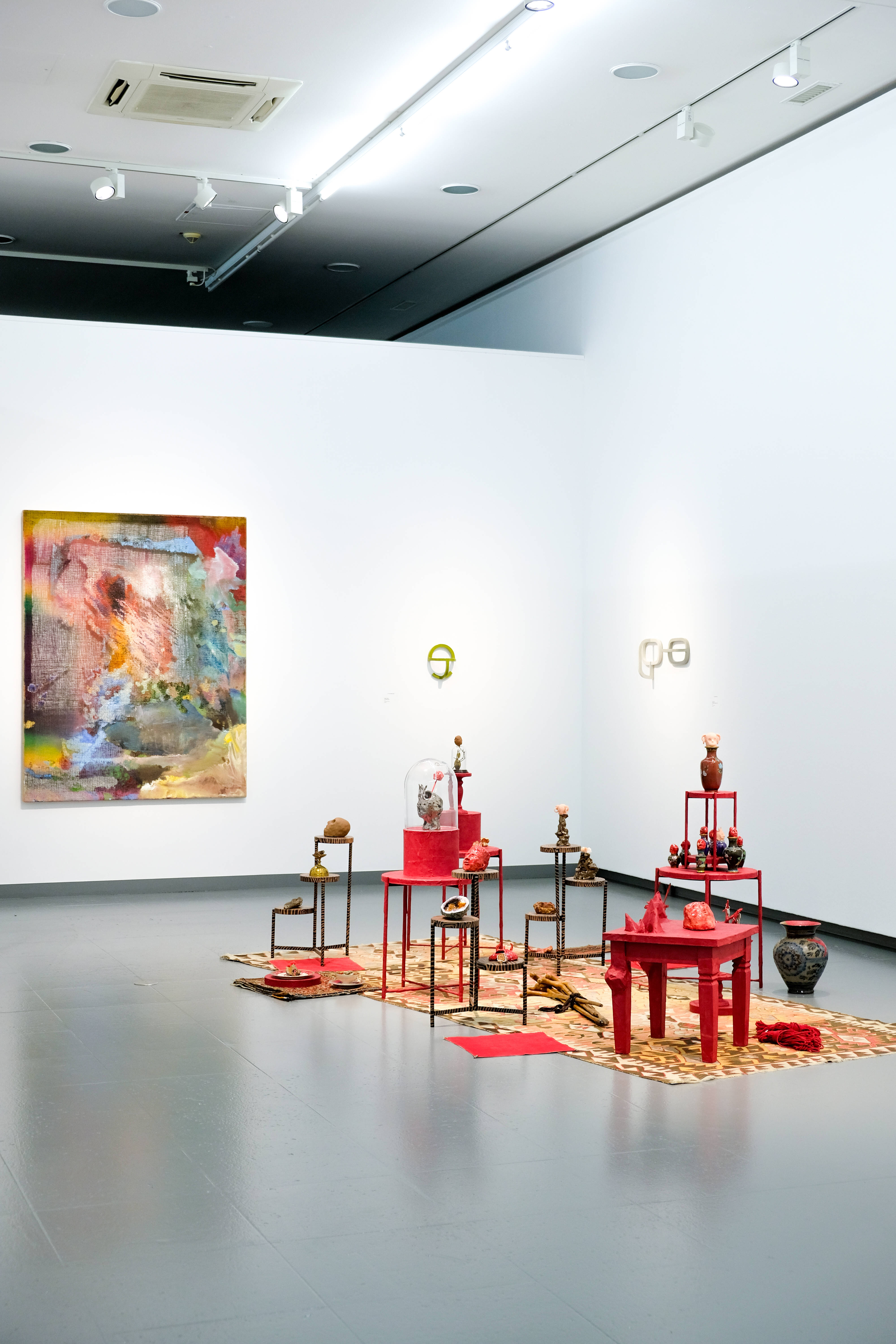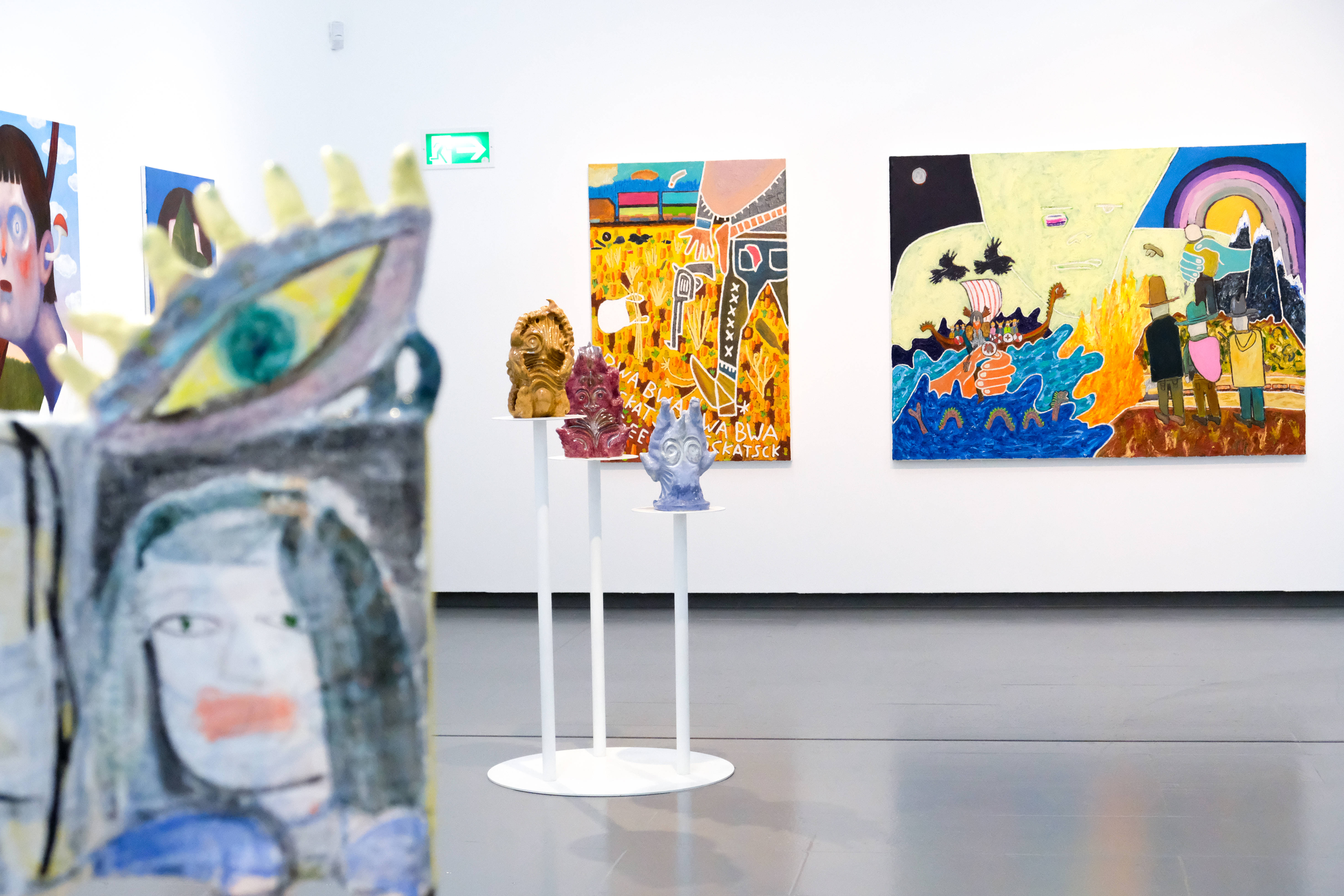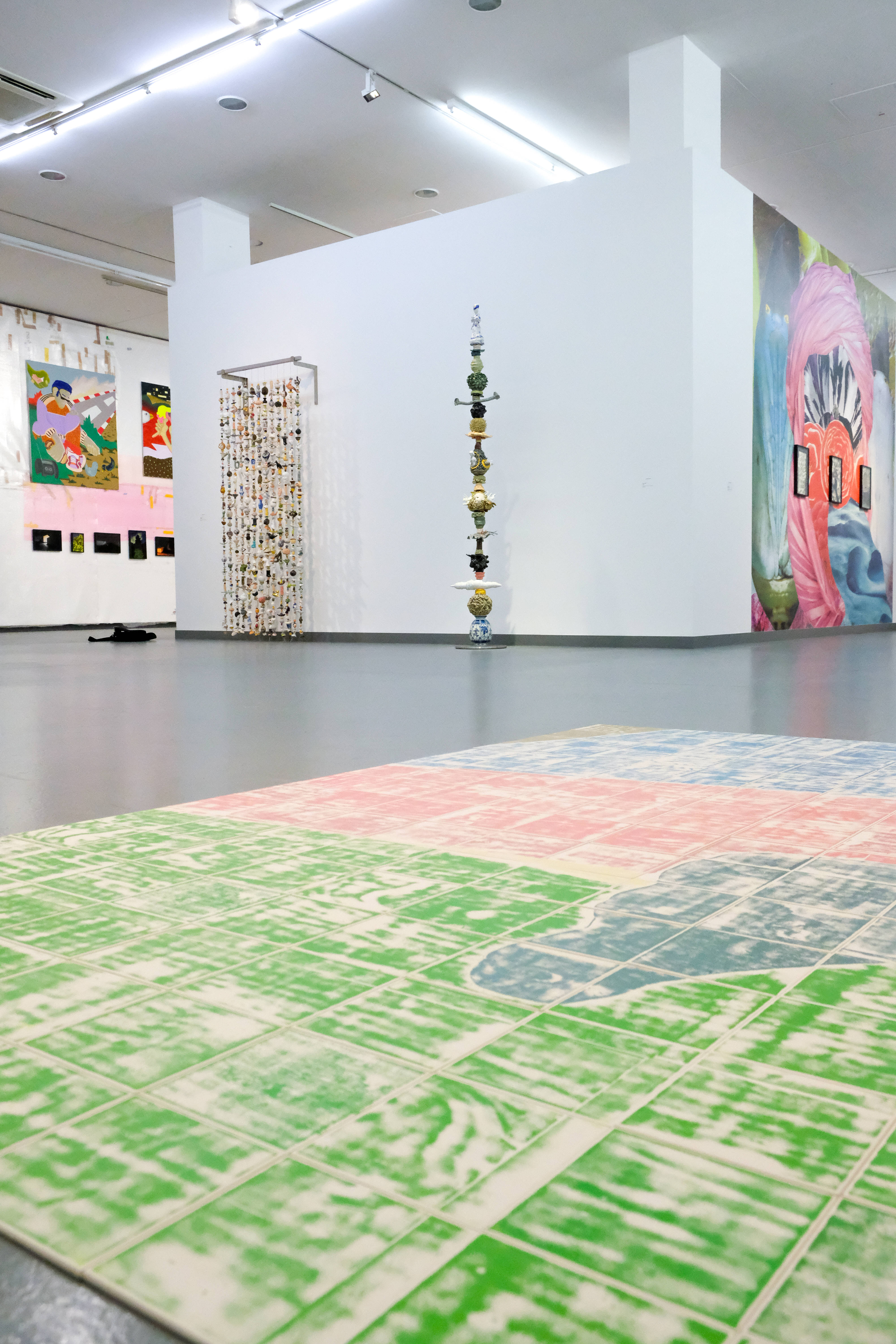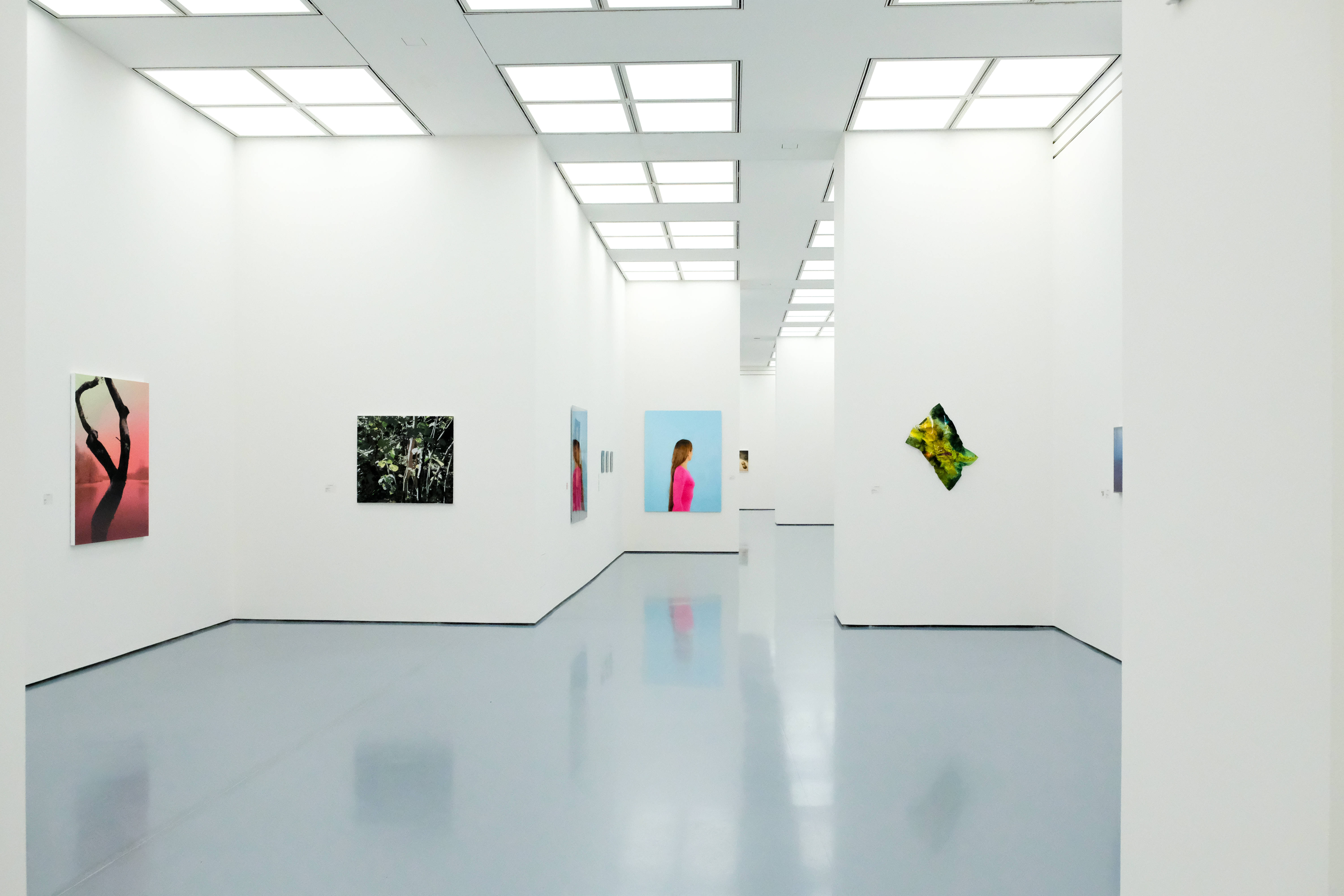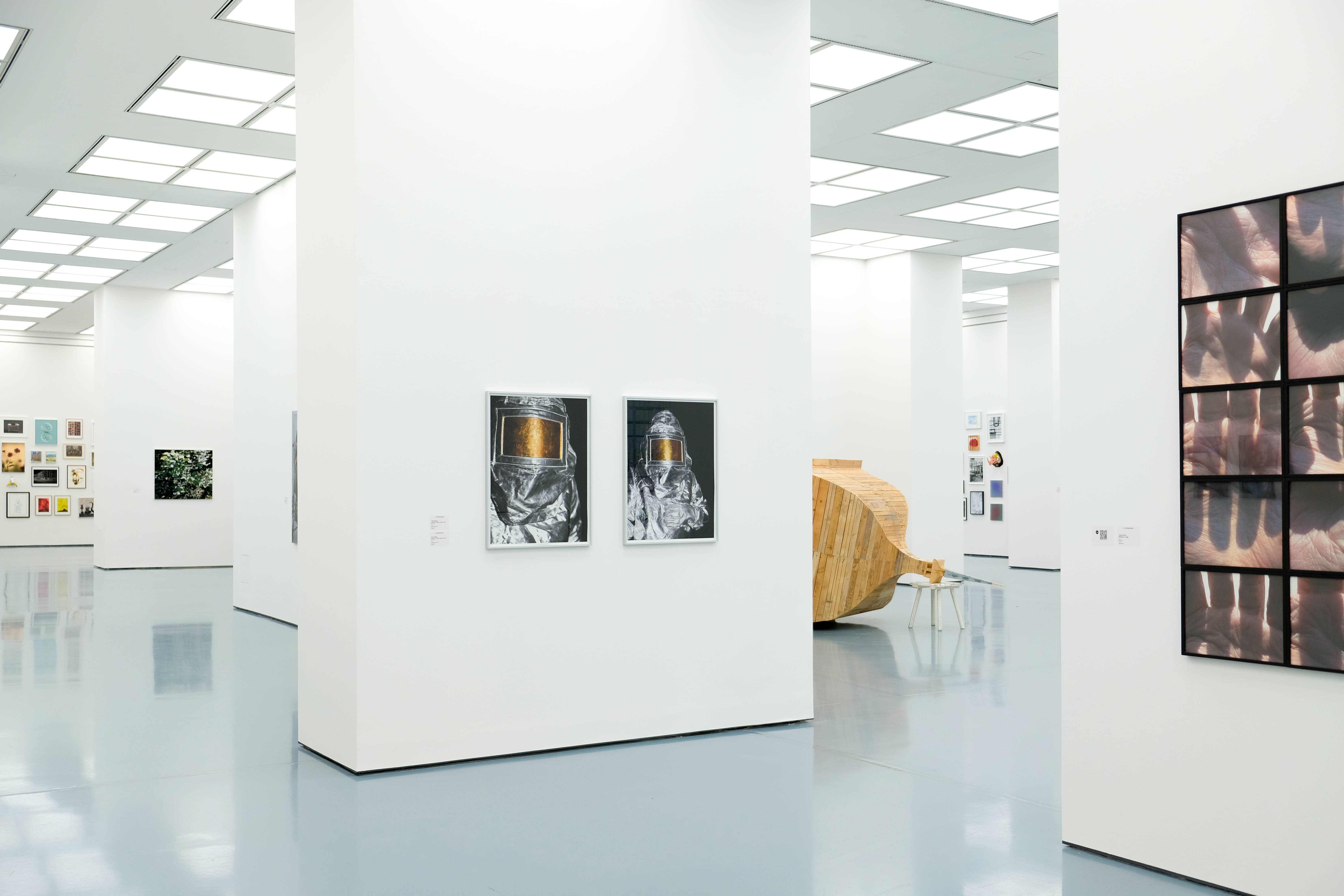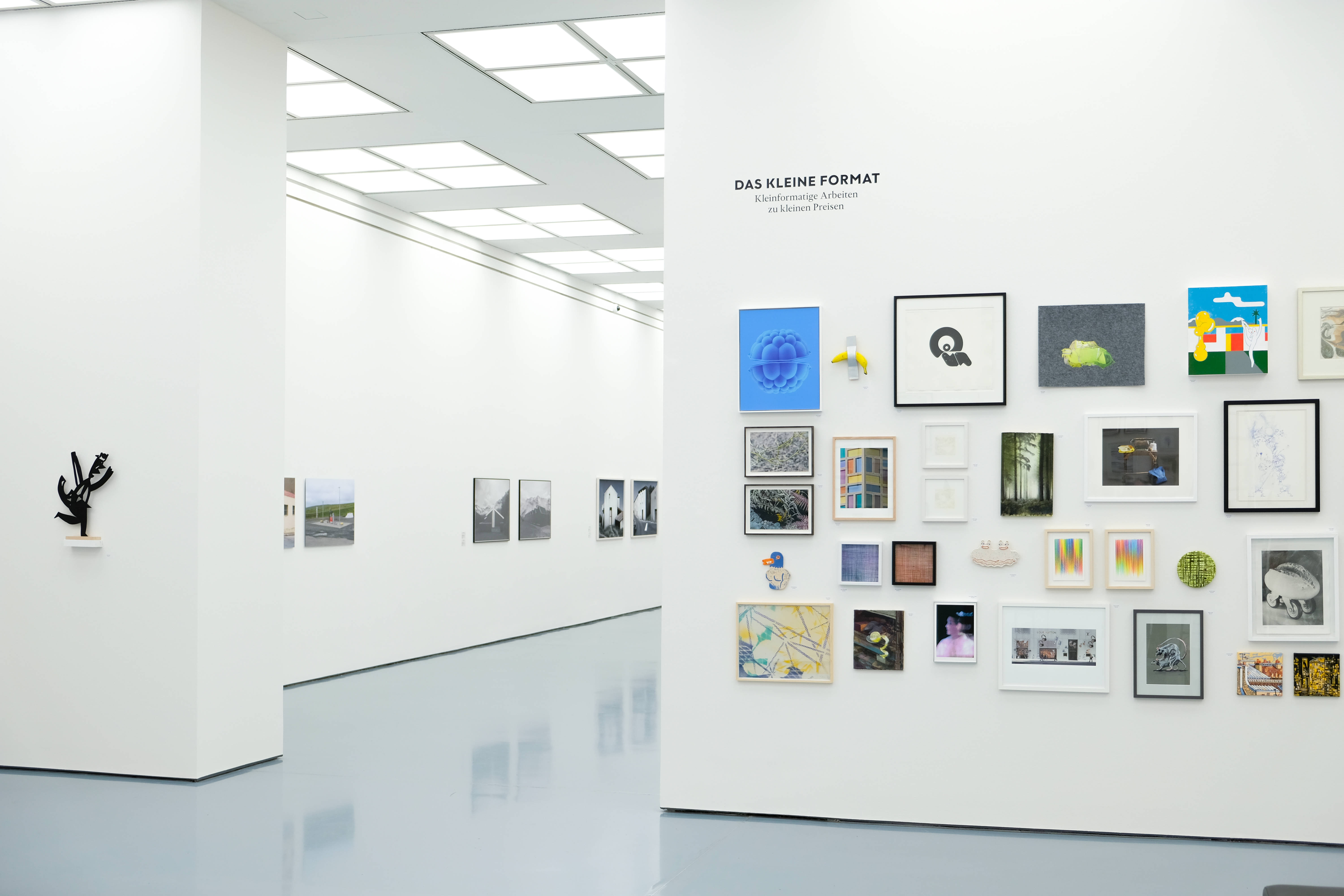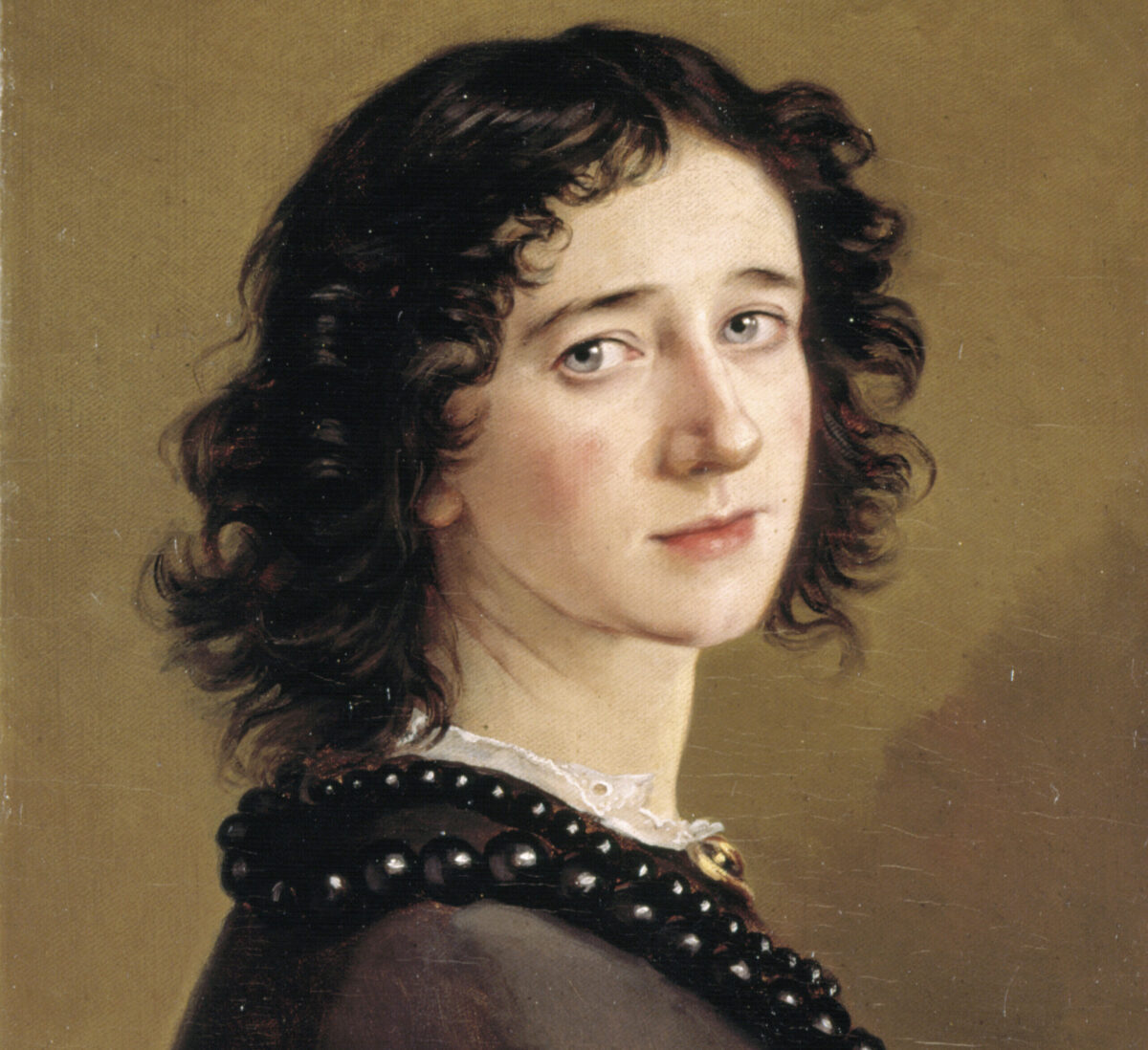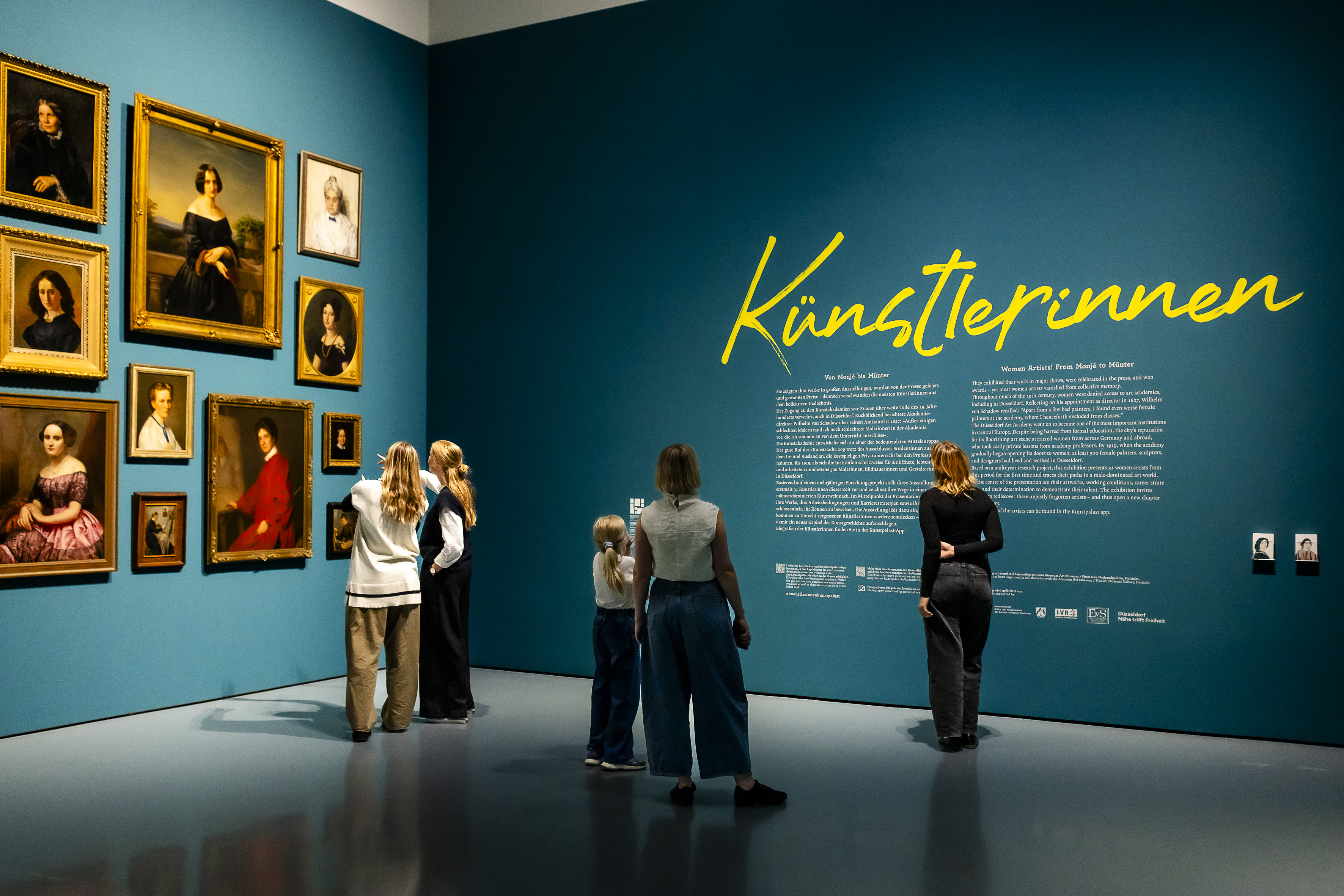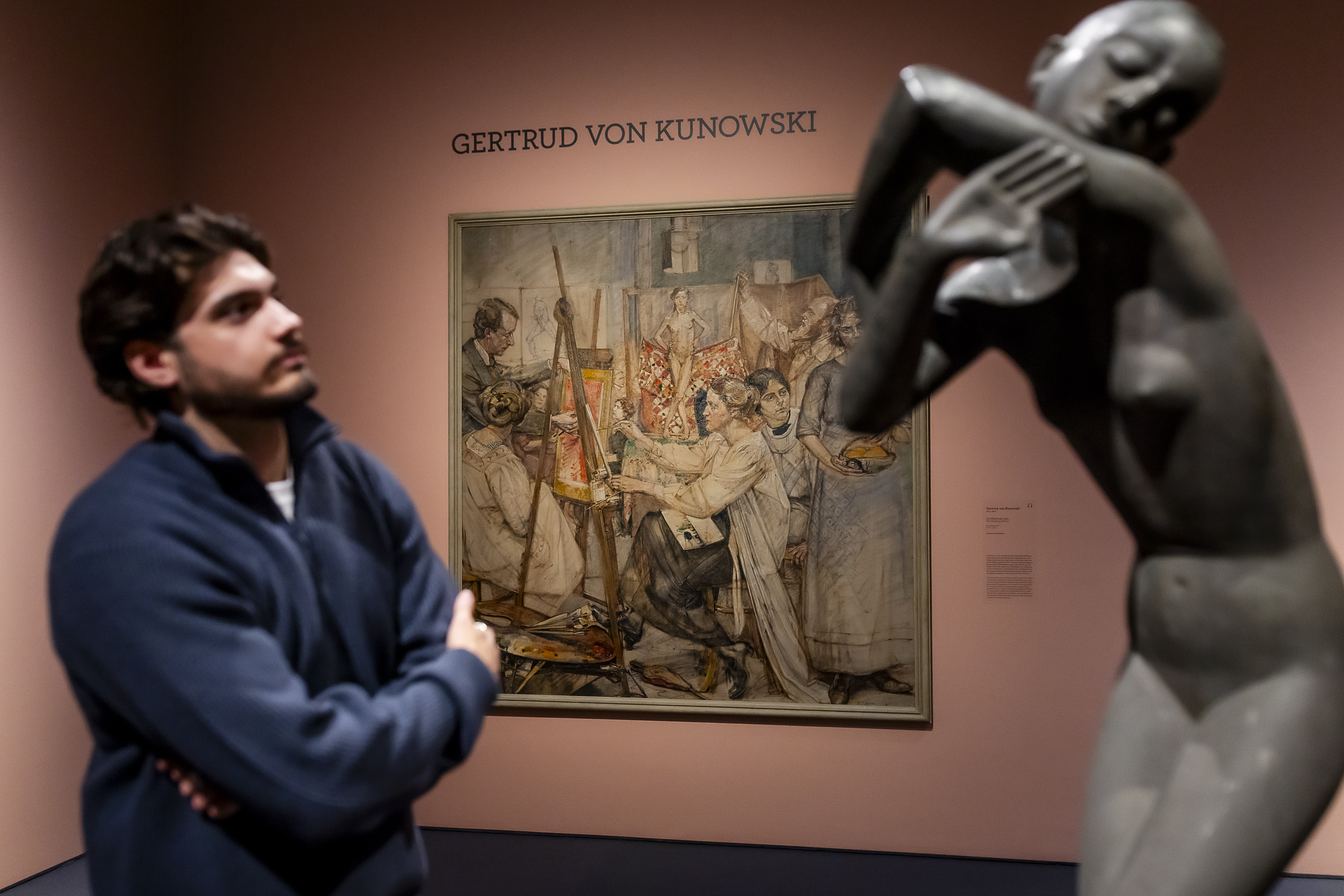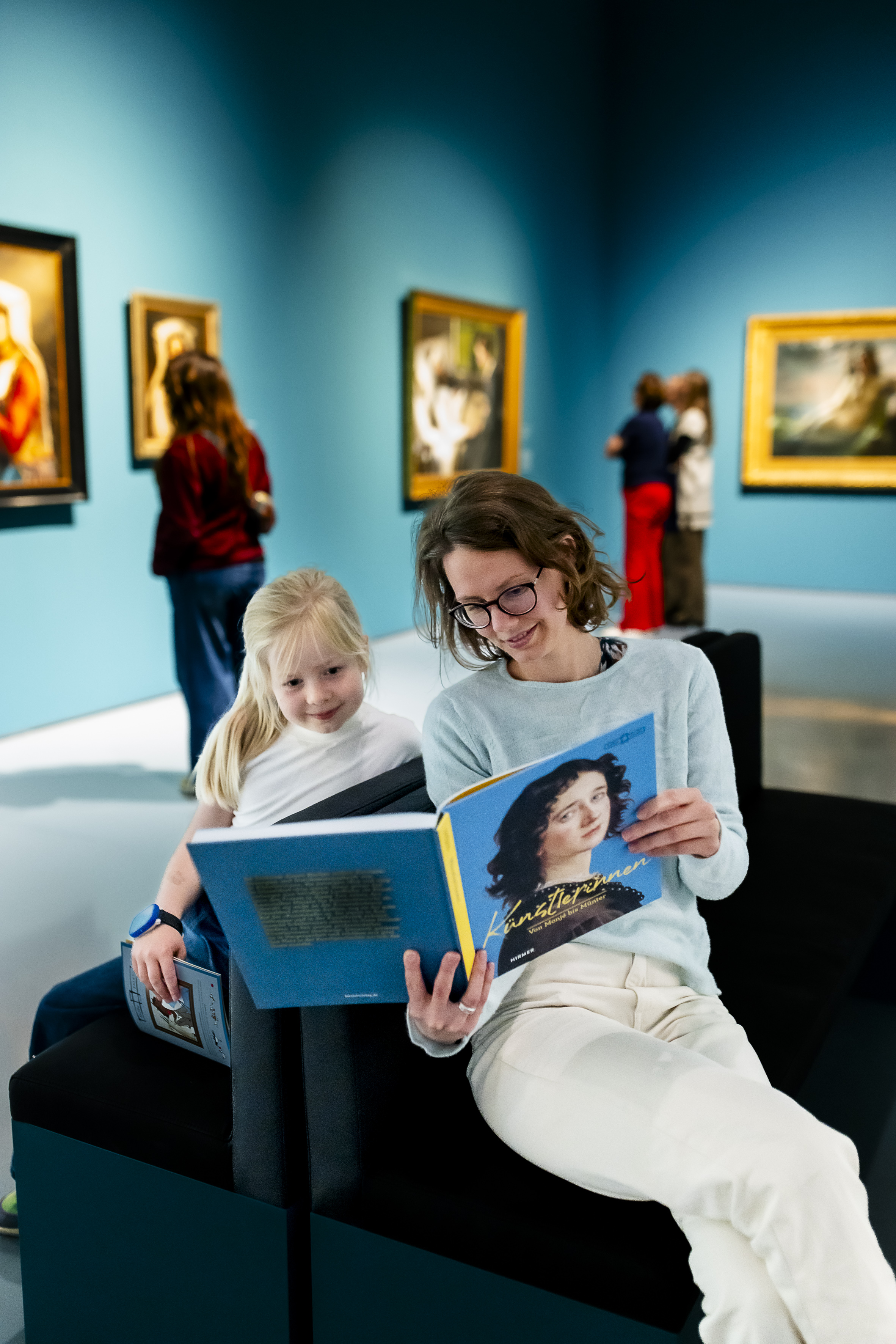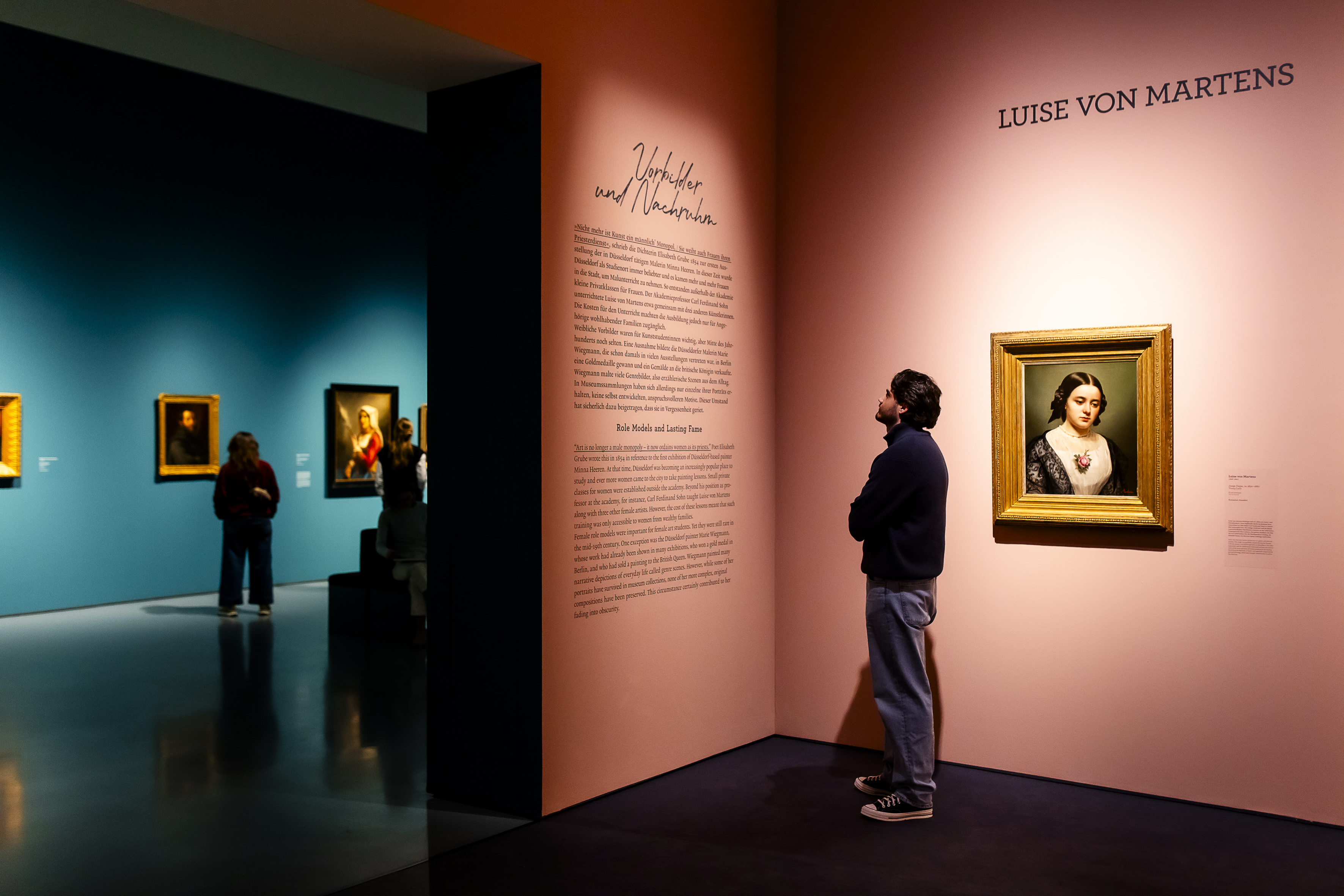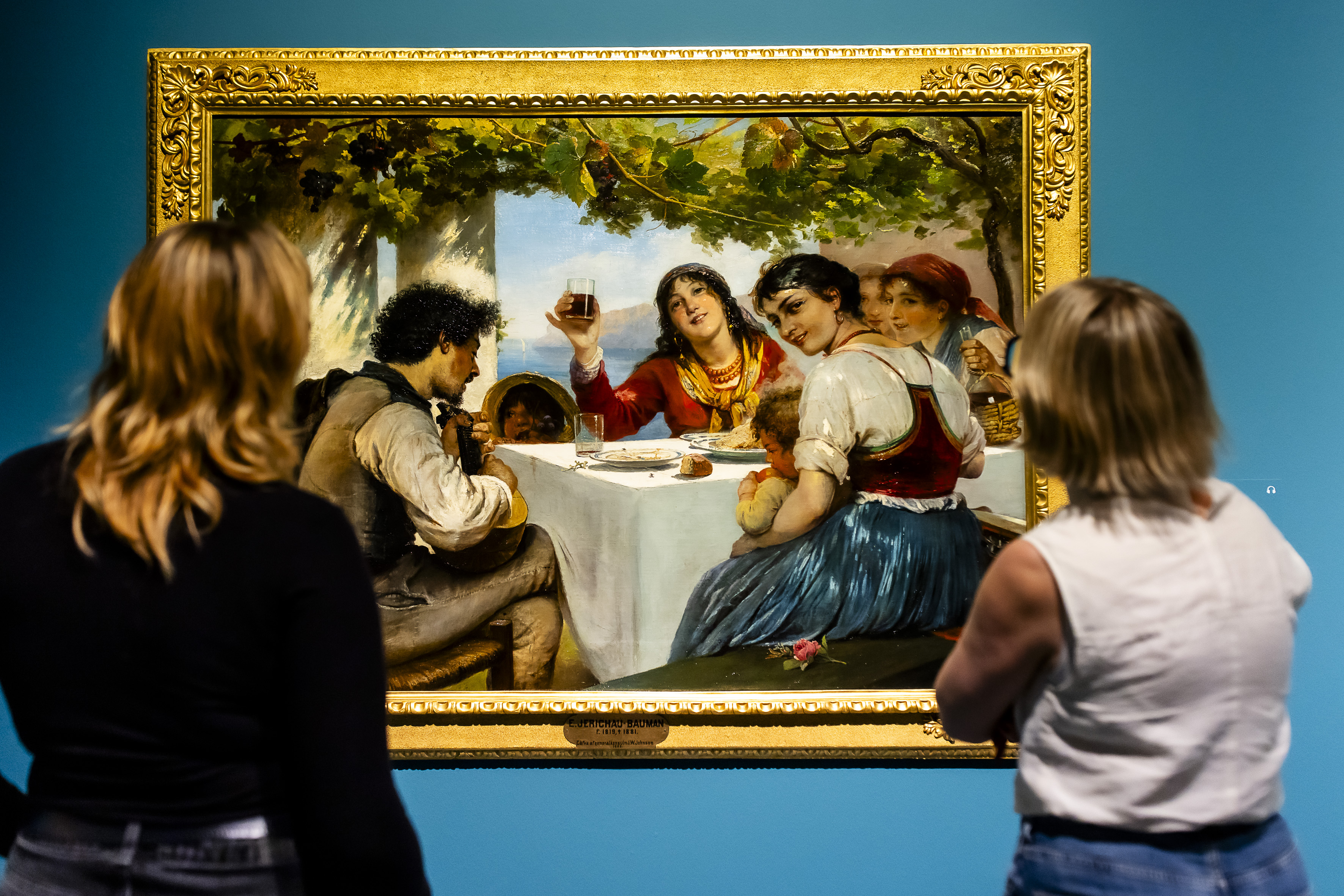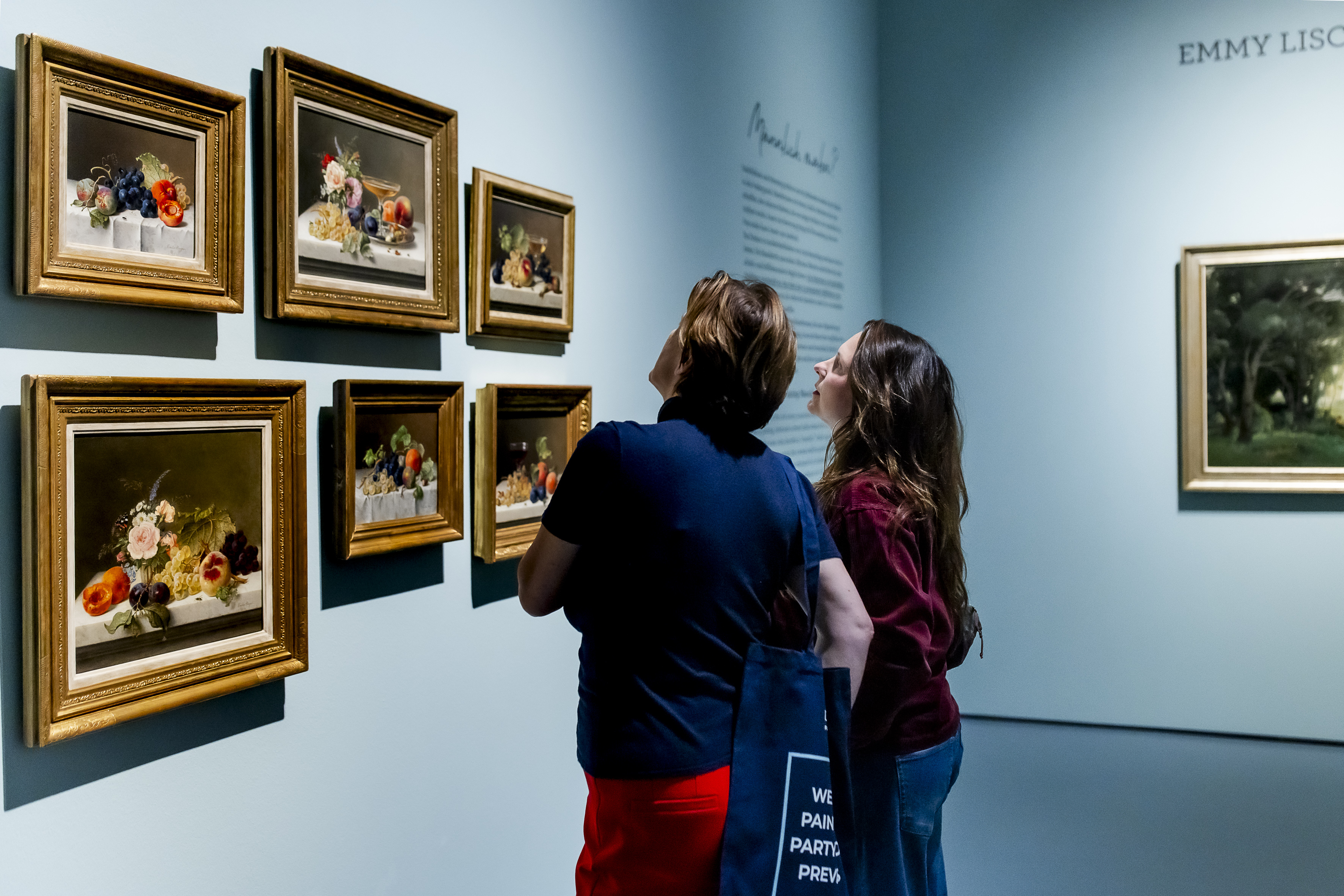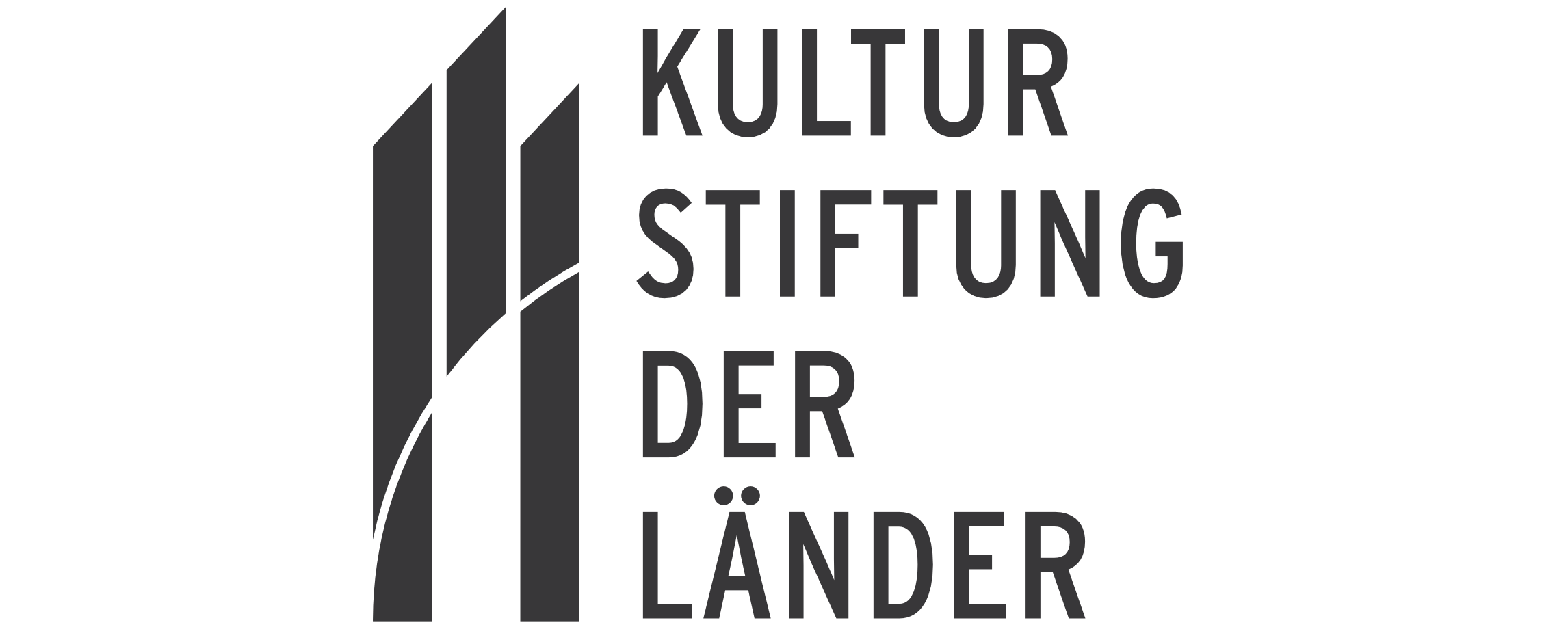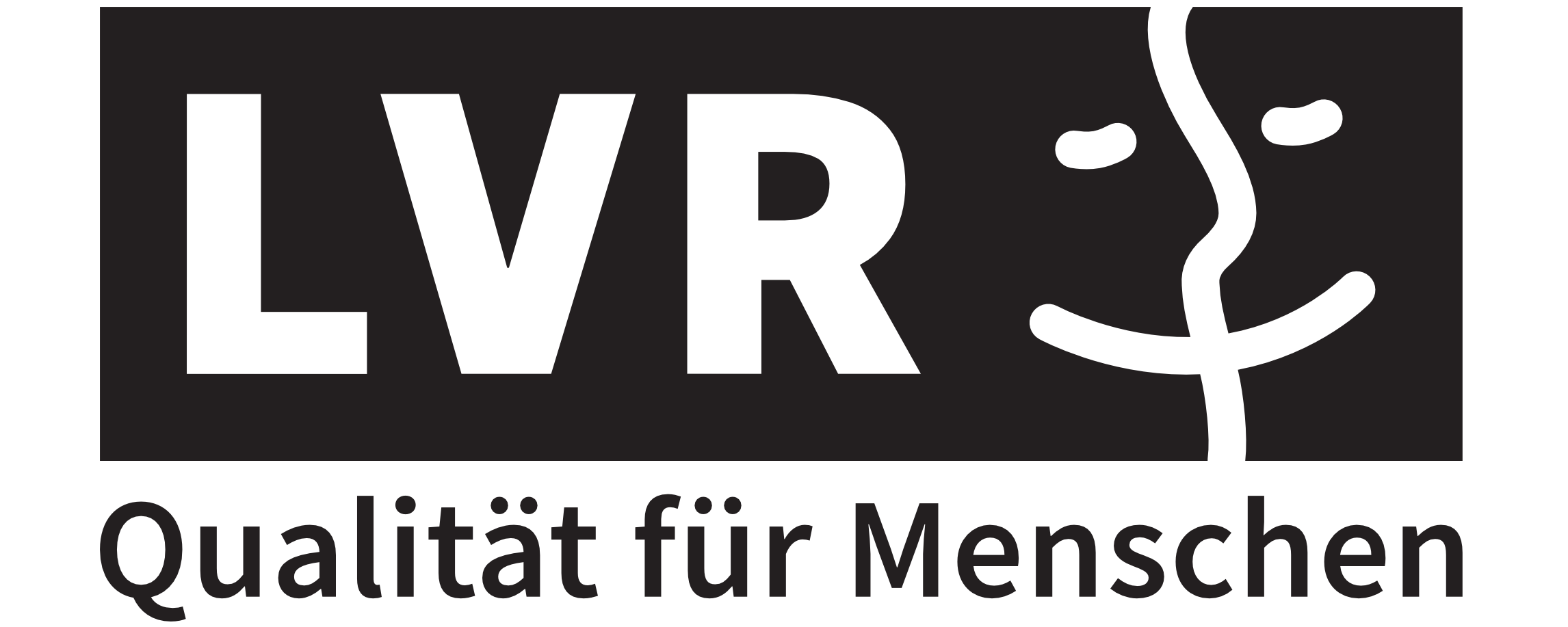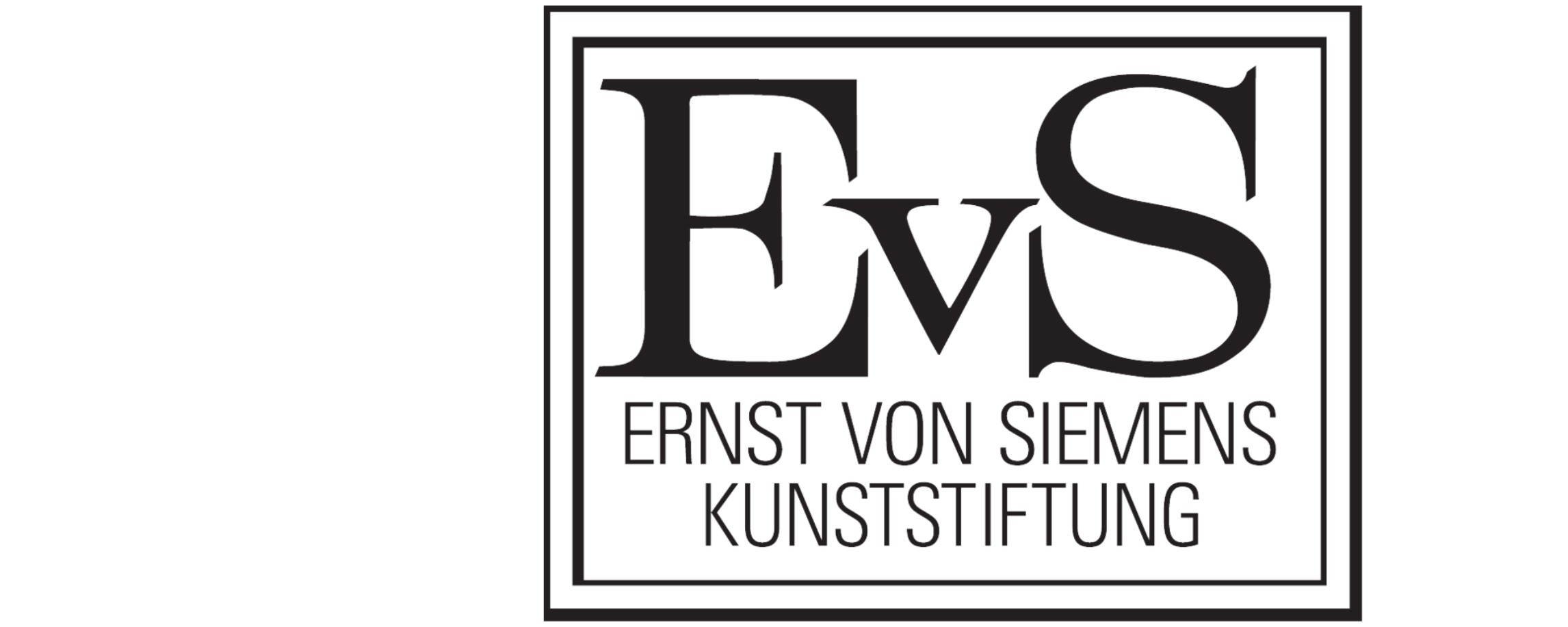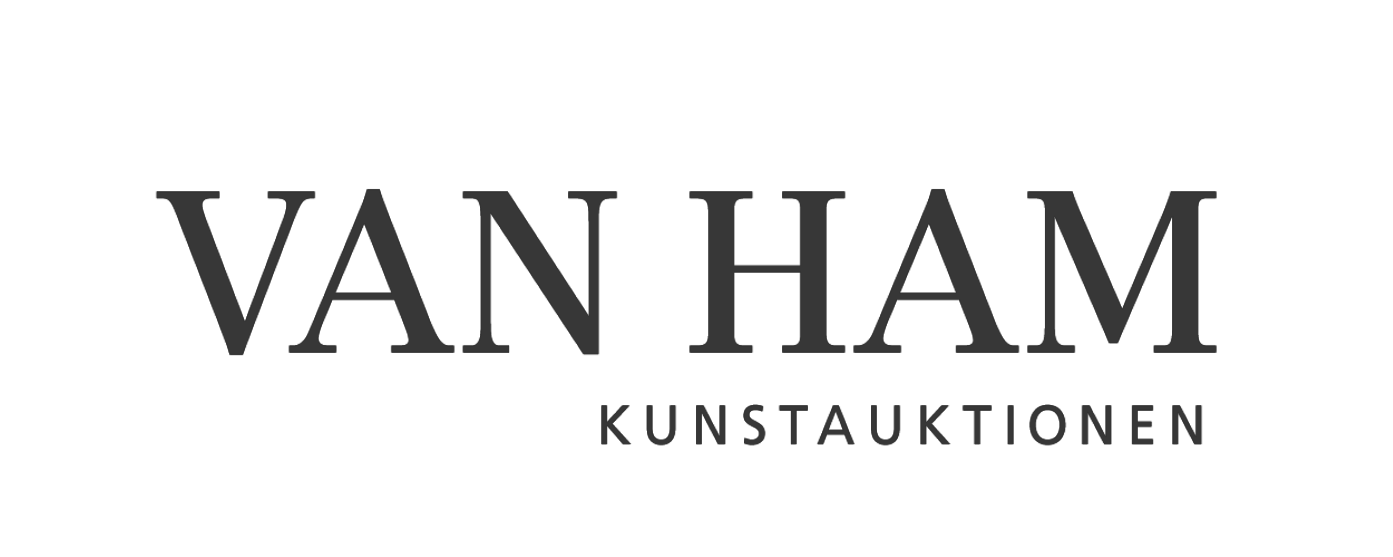Collection
Discover our permanent collection
From around 130,000 objects owned by the Kunstpalast, the display collection shows around 800 works in a chronological tour of over 5,000 square metres.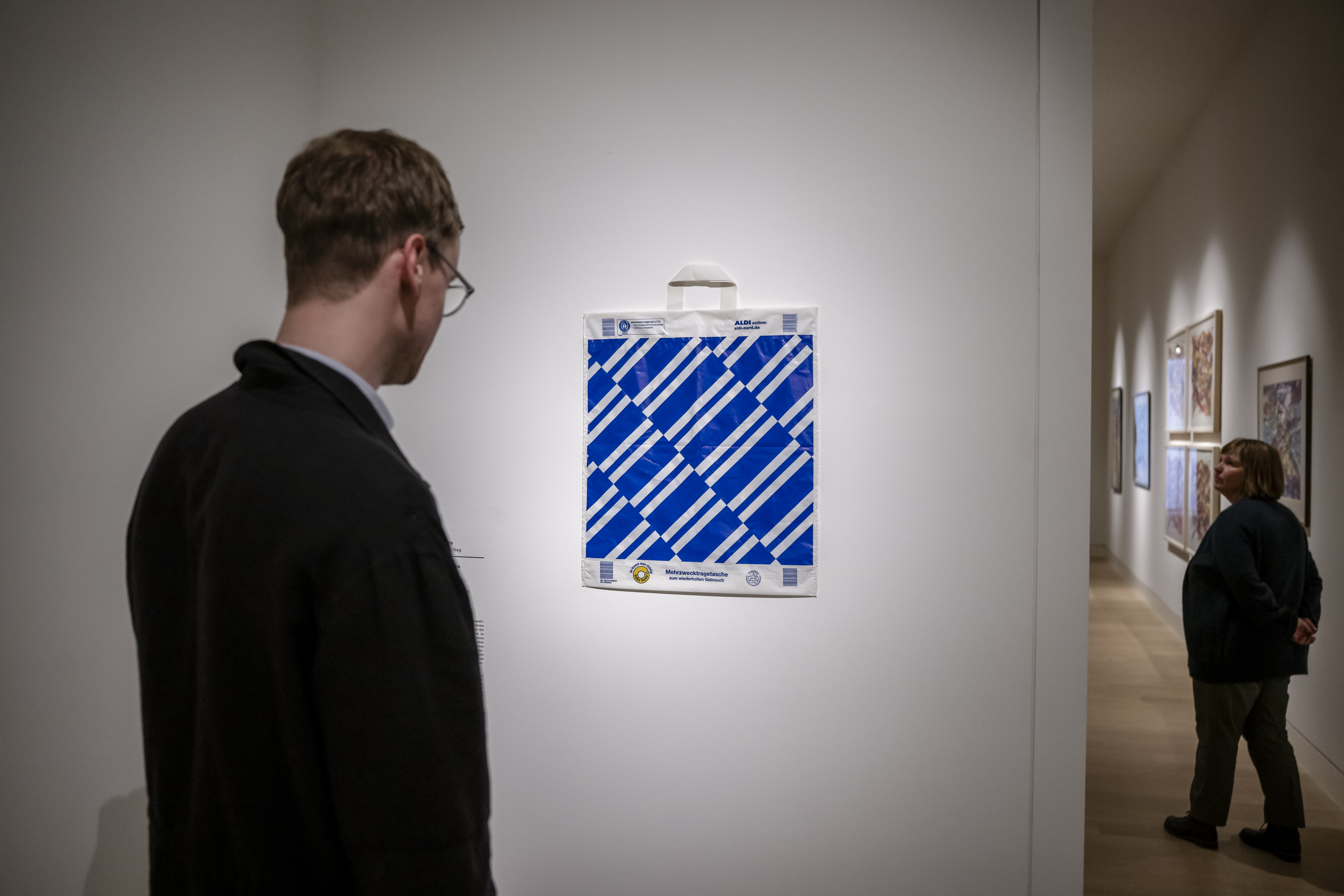
Famous paintings, such as Rubens’ Ascension or Cranach’s Unequal Couple, meet exhibits that make many a visitor wonder: Birkenstock sandals and an Aldi bag, for example. Is that art? Of course it is!
Whether miniature or monumental work, everyday object or piece of jewellery, sculpture or porcelain, drawing or interactive VR installation – this collection unites all genres. Thanks to regular new additions and rearrangements as well as temporary interventions and special presentations such as Kunstpalast in Bloom, the permanent collection is always on the move and there is always something new to discover on the tour.

The broad concept of art in our collectionallows surprising changes of perspective. The presentation examines the relevance of historical and contemporary art, establishes connections to current themes and demonstrates the similarities between what at first glance appear to be very different works that were created at the same time – free from stylistic categorisations and regardless of their origin.
Members of the Friends of the Kunstpalast receive free admission and the opportunity to take part in a varied programme.
Highlights
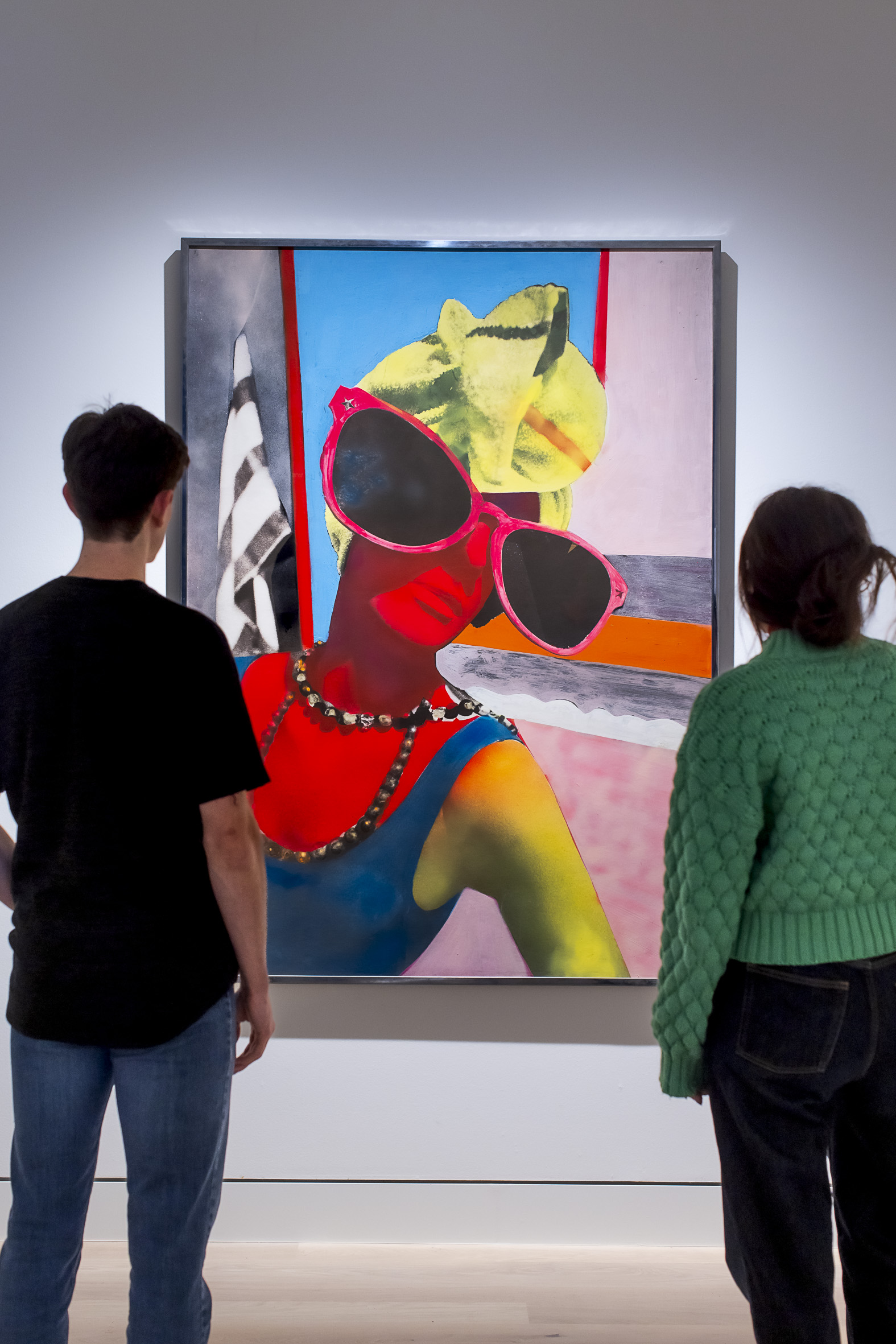
The tour of our collection
Following its renovation, which was completed in November 2023, the collection wing of the Kunstpalast now presents itself as an open, contemporary space that appeals to visitors of all ages and levels of prior knowledge. The rearrangement has opened up new perspectives on the rich collection and enables a diverse, lively engagement with art from different eras and genres.
The Kunstpalast collection is divided into seven sections: the Picture Gallery, the Collection of Prints and Drawings, Sculpture and Applied Art, Glass, Modern Art, Photography and Time-Based Media. The Picture Gallery houses European paintings from the fifteenth to the early twentieth century and is based on the Picture Gallery of Elector Palatinate Johann Wilhelm. The Düsseldorf School of Painting is a particular focal point of the collection.
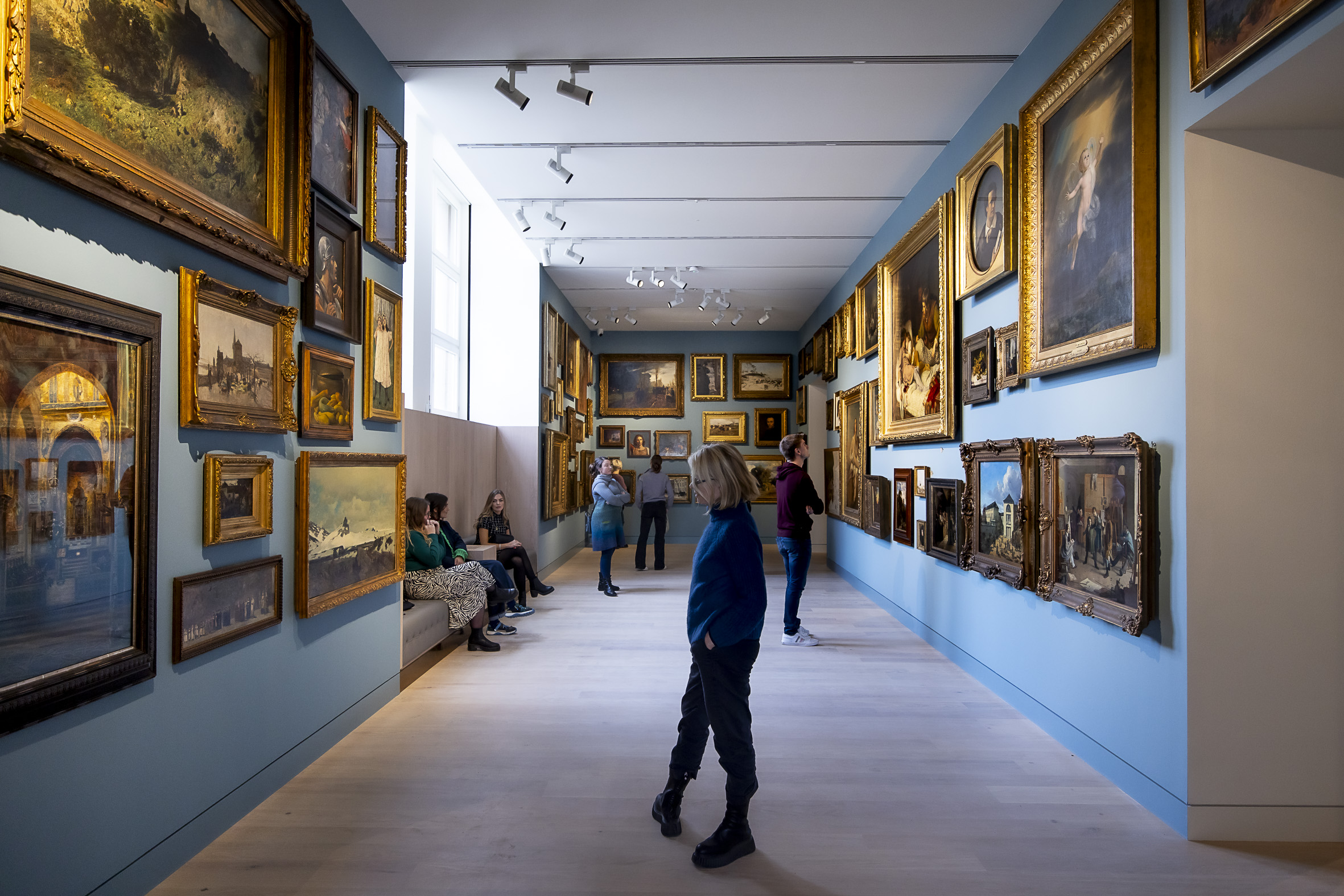
The museum’s collection is extensive, with around 130,000 objects from 11 centuries, various continents and all eras and genres. In addition to the historical holdings of the Düsseldorf Art Academy, other significant contributions to the main collection are the works from the Willi Kemp Foundation and those donated by Wolfgang Hanck.
The presentation of the collection is generously supported by the City of Düsseldorf and our sponsors and museum gallery sponsors.

Reconstruction of the Legendary Creamcheese
Time travel to the 1960s
The legendary Düsseldorf underground club Creamcheese, which was THE hotspot for the music and art scene from the late 1960s to the 1970s, has been brought back to life here.
After its closure, the artistic interior became the property of the Kunstpalast in 1978.
The bar area of this legendary pub has been reconstructed and is now on display at the Kunstpalast, with works by Günther Uecker, Gerhard Richter, Daniel Spoerri and other artists exhibited there at the time.
Part of the collection tour during regular opening hours, on Saturdays the Creamcheese room also invites visitors to stay late into the evening with drinks and music from the 1960s and 1970s. The bar can be booked for events on Fridays.Explore the Creamcheese Room
The Kunstpalast App
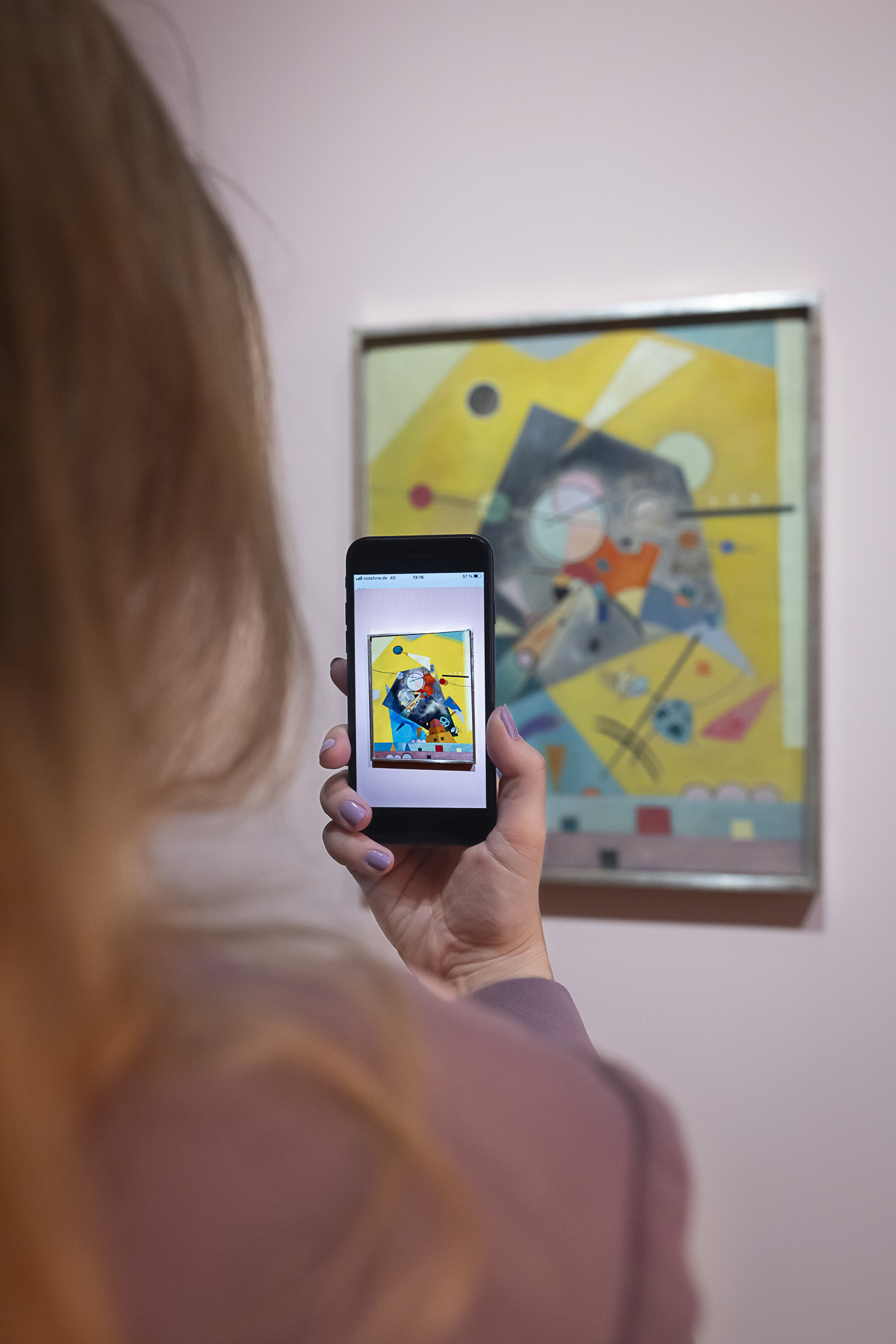
Experience art in multiple dimensions
Developed in cooperation with our digital partner ERGO, the Kunstpalast app now offers visitors an immersive, enhanced art experience. Available free of charge, the app enables visitors to experience works of art from the collection using augmented reality, combining learning and fun at the same time: while some features provide additional information on individual works, others are designed to amaze with surprising specials.Learn more and download the app
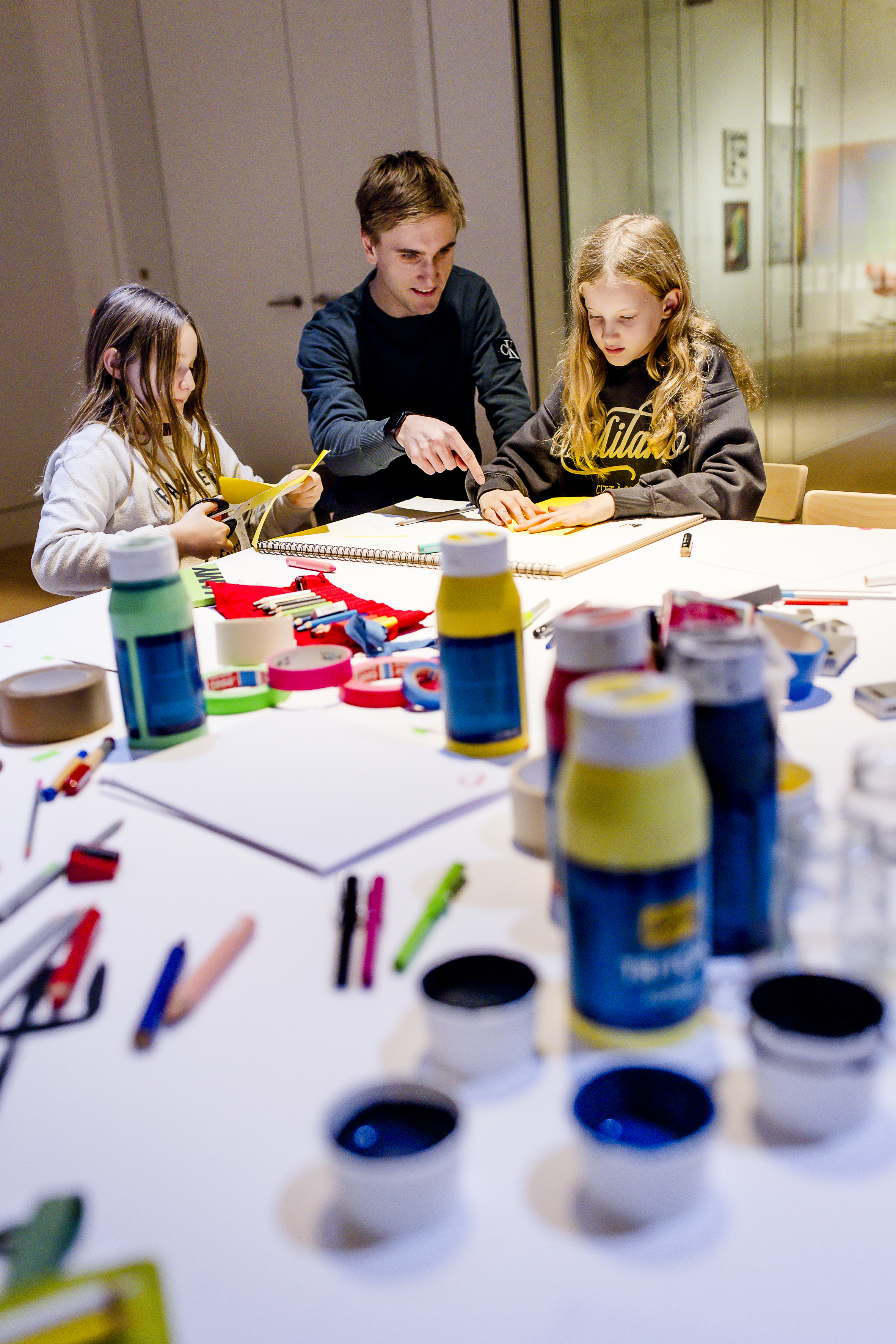
PalACE STUDIO
Being creative together
The cultural education workshops are now presented in a new location with a revised concept: the Palace Studio is a 350-square-metre, light, open and accessible space for working and thinking that combines a studio and a media lab, a darkroom and a discussion venue
The museum’s education partner, C. Josef Lamy GmbH, is the new sponsor of this meeting place for artistic and creative exchange.
Find out more
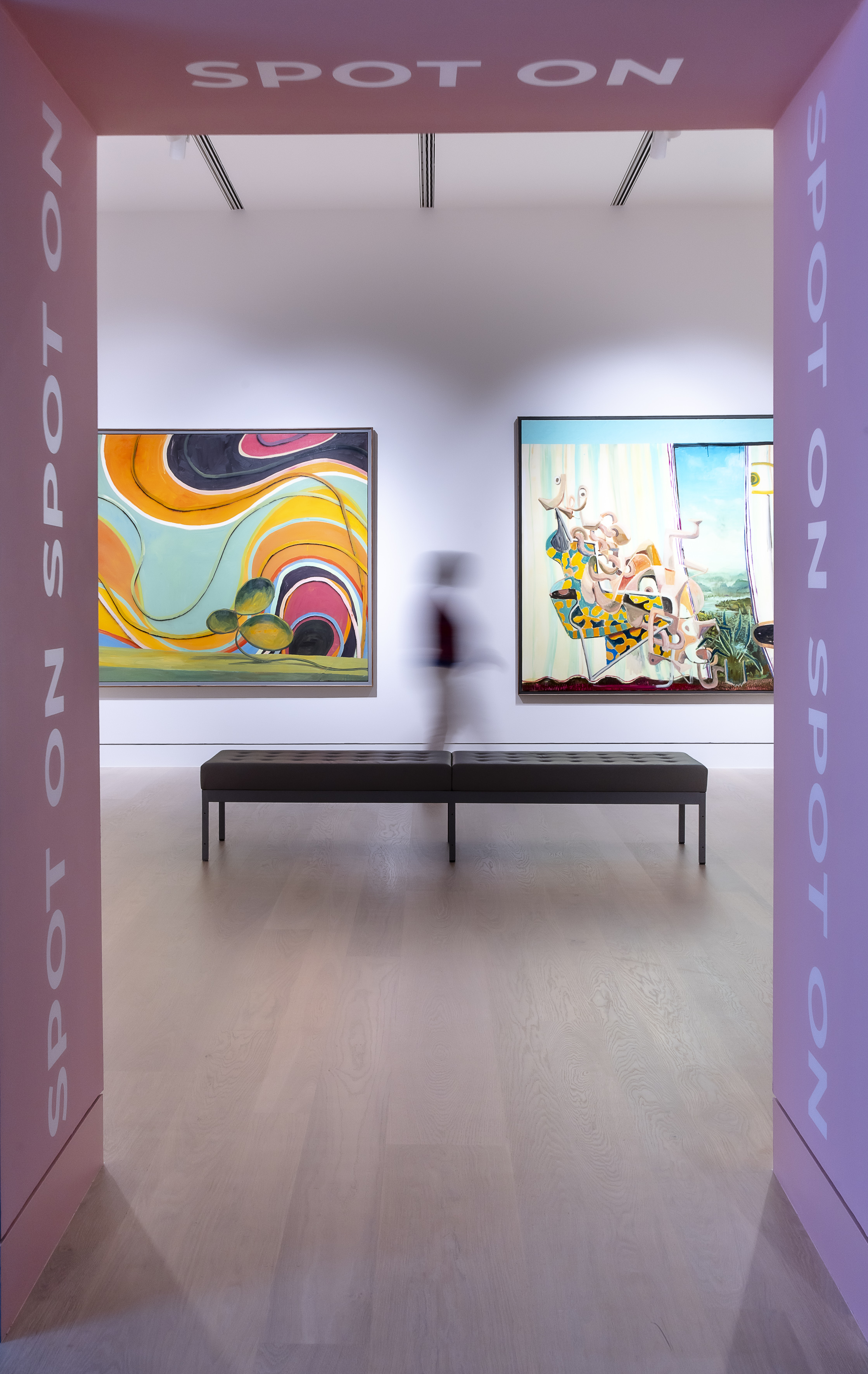
Spot on room
On the 1st floor of our new collection tour, there is a special room that provides a stage for changing exhibitions. Twice a year, this space is reorganised to focus on different themes and artists from our collection.
More information
Offers for children

Rhino palast
Hidden rooms by Christoph Niemann
Our visitors, young and old, can discover four hidden children’s rooms in our new tour of the collection. Designed exclusively for the Kunstpalast by the artist and illustrator Christoph Niemann, these special rooms, called Rhino Palast, will take you on a journey of discovery that will test the limits of your perception and allow you to playfully take over the museum.
Learn more
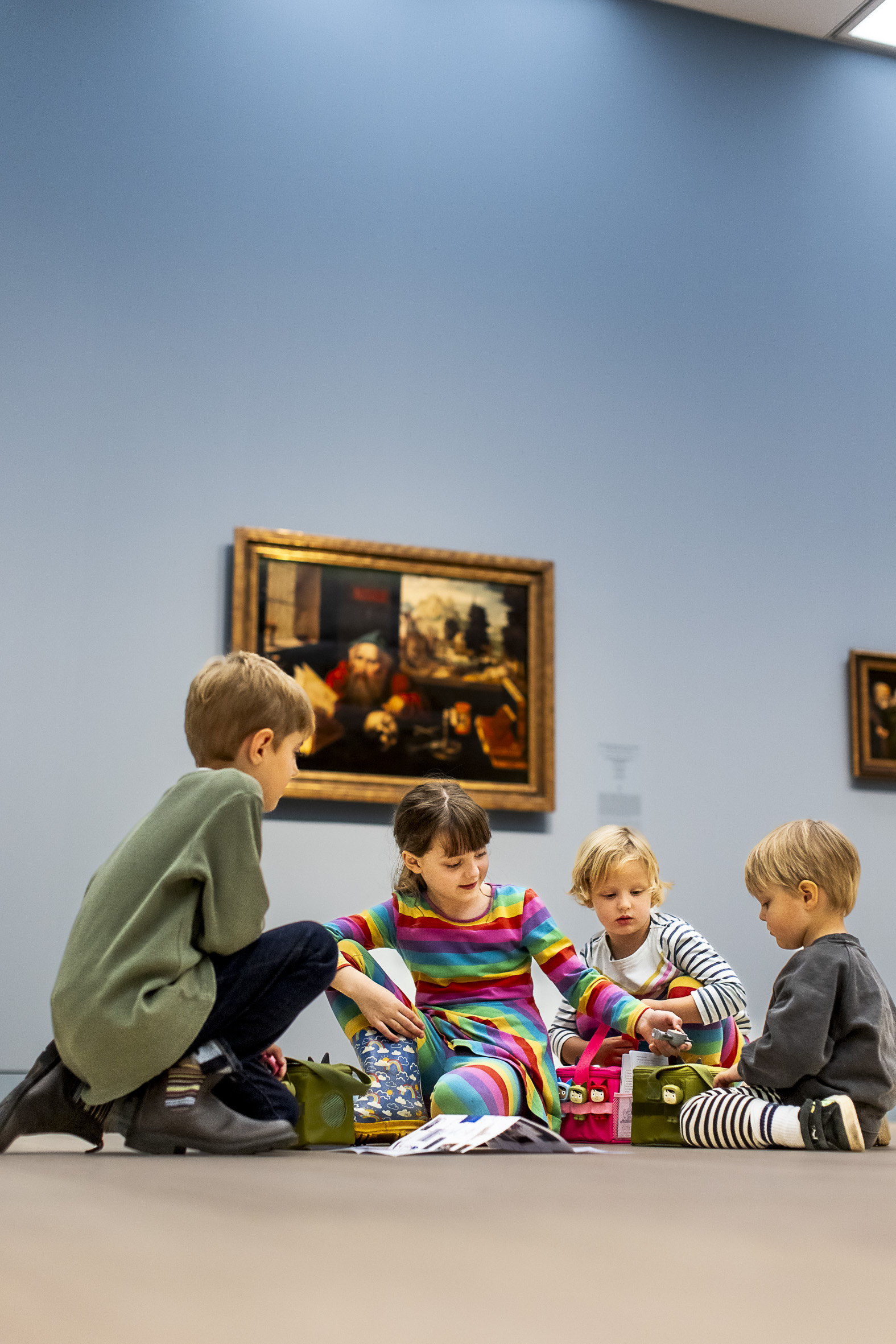
Rhino Tour
explore the kunstpalast with tonies
explore the kunstpalast with tonies
With Nele and Piet to Knight and Rubens: there is a lot for children to discover in the new Kunstpalast. An audio tour that can be played via the Toniebox introduces young visitors to 26 selected works of art in the collection through exciting and entertaining stories.
This unique audio guide is made possible by the cooperation with the company Boxine GmbH, which produces audio systems with matching audio figures, the Tonies.
Go on Rhino Tour
Gastronomy
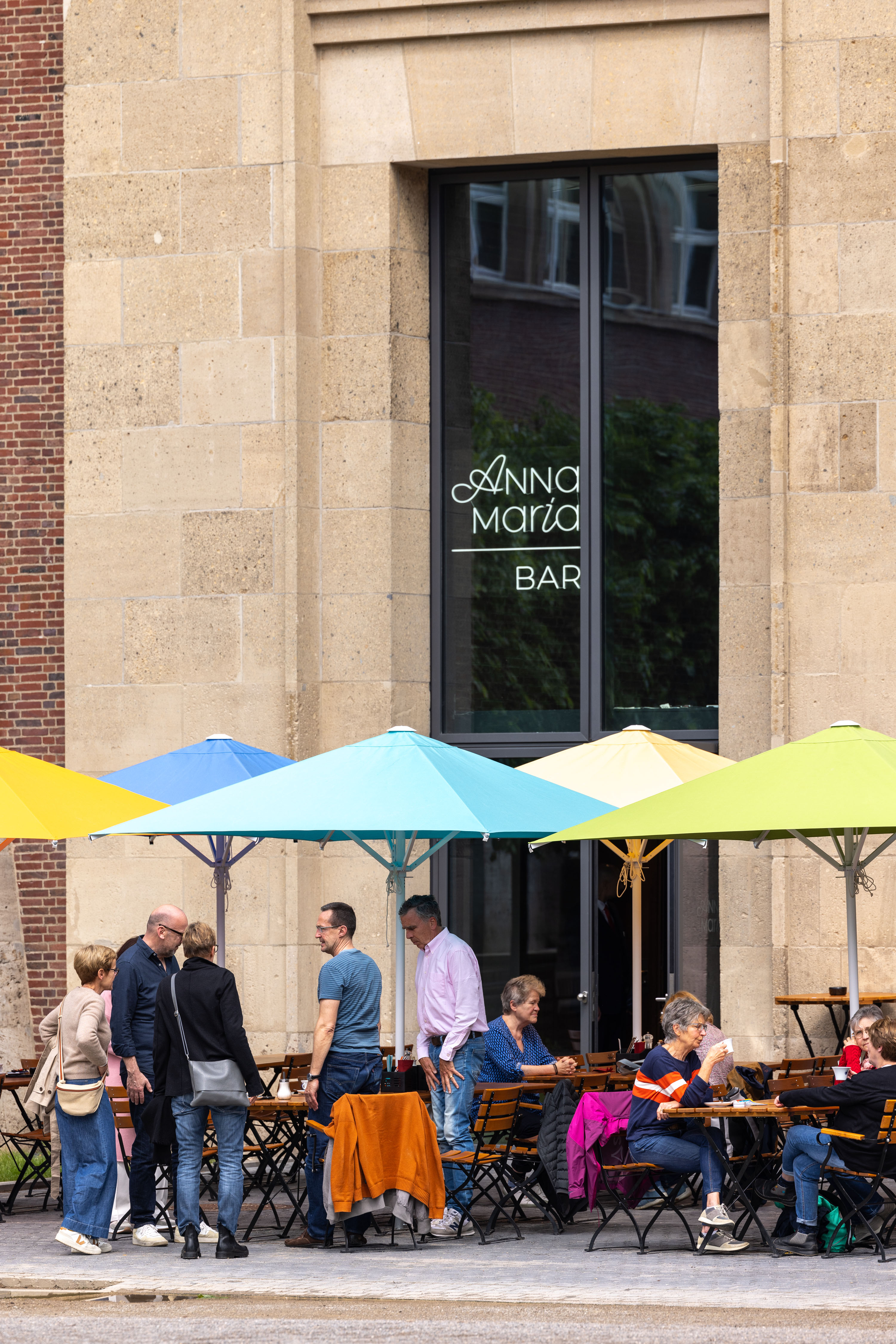
Meet Anna Maria
The Taste of kunstpalast
Saban Emini and Joakim Olsen are from now on looking after the culinary well-being of our visitors. Together with their team, the two Düsseldorfers are running our new restaurant “Anna Maria”. You can look forward to a varied lunch menu, coffee and cake as well as a selected evening and wine menu.
Learn more
Exhibition View
Image Credits
Image Credits
COMMUNITY
Photography and Belonging
11 Feb – 25 May 2026
Date
11 Feb – 25 May 2026
Location
» KunstpalastAdmission: 16 € / concessions 12 €
Children / young people under 18: free
Members of Friends of the Kunstpalast: free
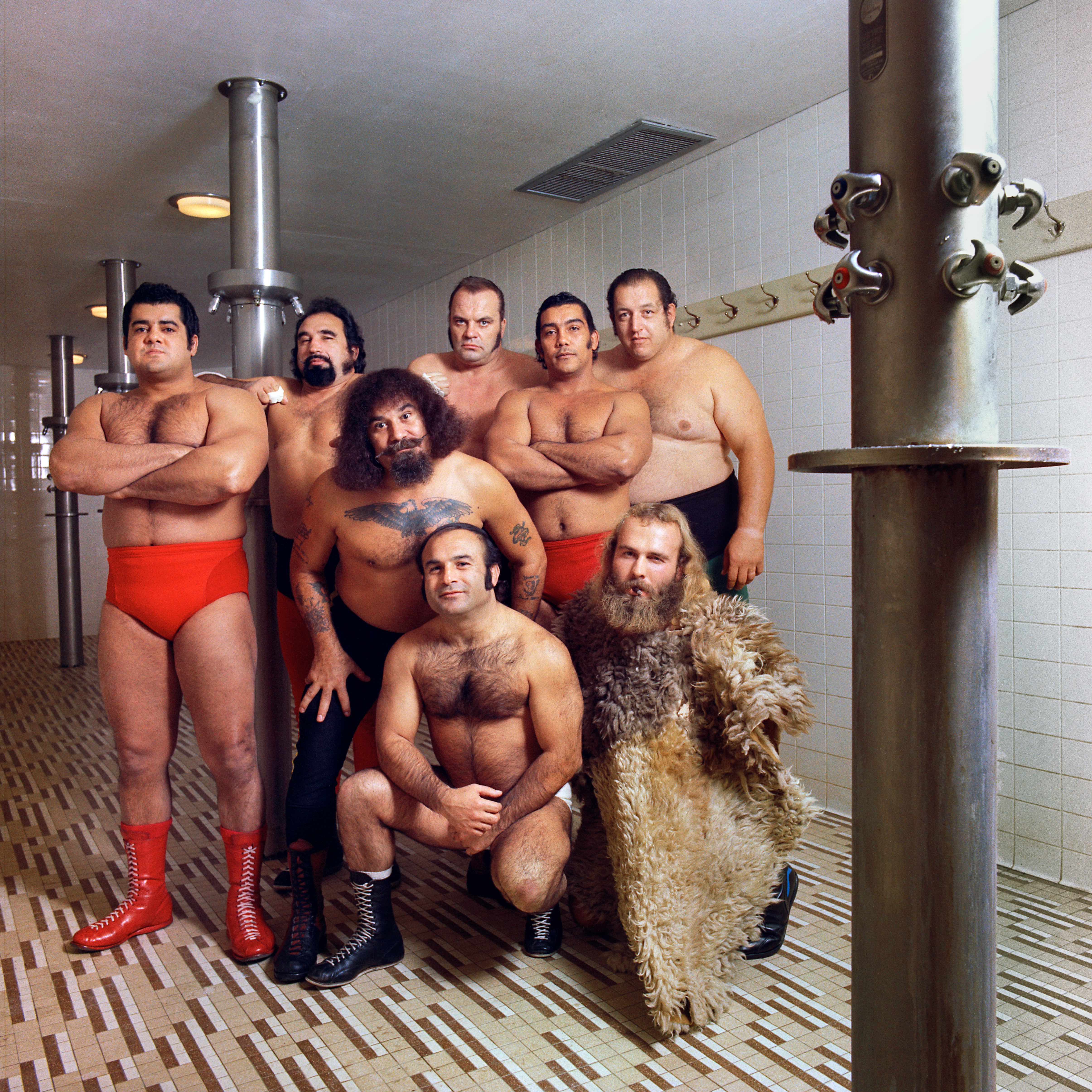
Football fan clubs, families, political collectives – people are always striving for a sense of belonging. Since the invention of photography, the medium has not only captured this sense of belonging; it has also been used to fuel or challenge it. Photography allows us to demonstrate that we are part of something bigger. It can also be used to draw boundaries to exclude those who are not part of our own community.
The exhibition highlights the multifaceted relationship between photography and community, both in the past and present. It brings together applied and artistic positions that explore this relationship – whether with subtle humour, impressive solidarity, or with the aim of precise analysis.
The exhibition is based on the Kunstpalast’s photographic collection and supplemented by international loans. Visitors will be actively involved in the exhibition and are invited to submit their own images of community. A richly illustrated catalogue will accompany the exhibition, featuring contributions from art historical, sociological and historical research on the subject.
Picture credits
Picture credits
Made in Düsseldorf #7
PERSPECTIVES. Photographs from the Stadtsparkasse Düsseldorf’s Art Collection
12 Sept – 26 Oct 2025
Date
12 Sept – 26 Oct 2025
Location
» KunstpalastAdmission: free / concessions free
Children / young people under 18: free
Members of Friends of the Kunstpalast: free
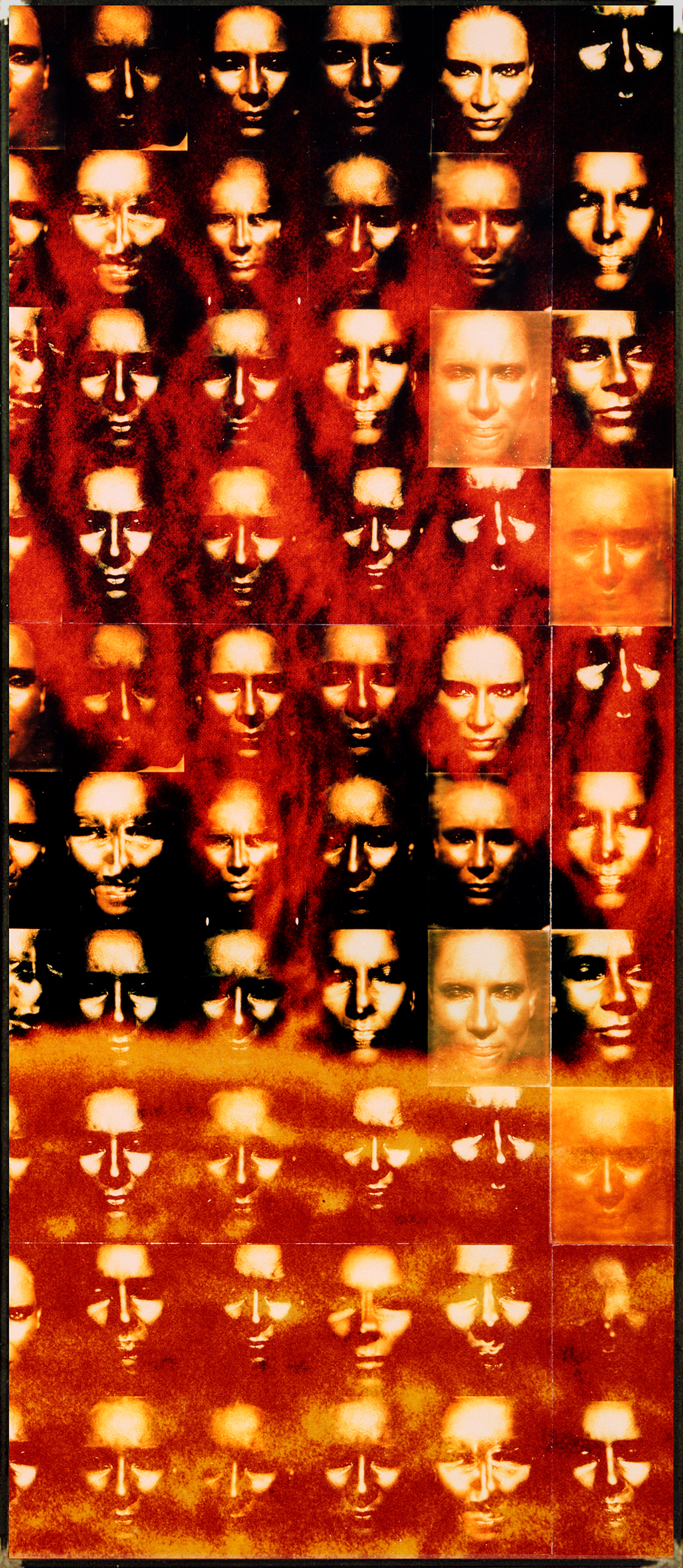
Made in Düsseldorf is an exhibition series organised by the Stadtsparkasse Düsseldorf in cooperation with the Kunstpalast and the NRW-Forum. It is dedicated to contemporary artists who are connected to Düsseldorf and the Rhineland through their studies, their place of residence or their artistic content.
The seventh exhibition, titled BLICKWINKEL (Perspectives), features photographic works from the Stadtsparkasse Düsseldorf’s art collection. The presentation will be supplemented by works by Tata Ronkholz loaned from a private collection in Düsseldorf.
Over time, photography has evolved from a purely documentary technique designed to capture the world in images into a versatile medium of expression with considerable scope for interpretation. Spanning three chapters and featuring six artists, the exhibition presents different – sometimes contrasting – approaches with a variety of techniques and perspectives on artistic photography as a form of documentation or expression.
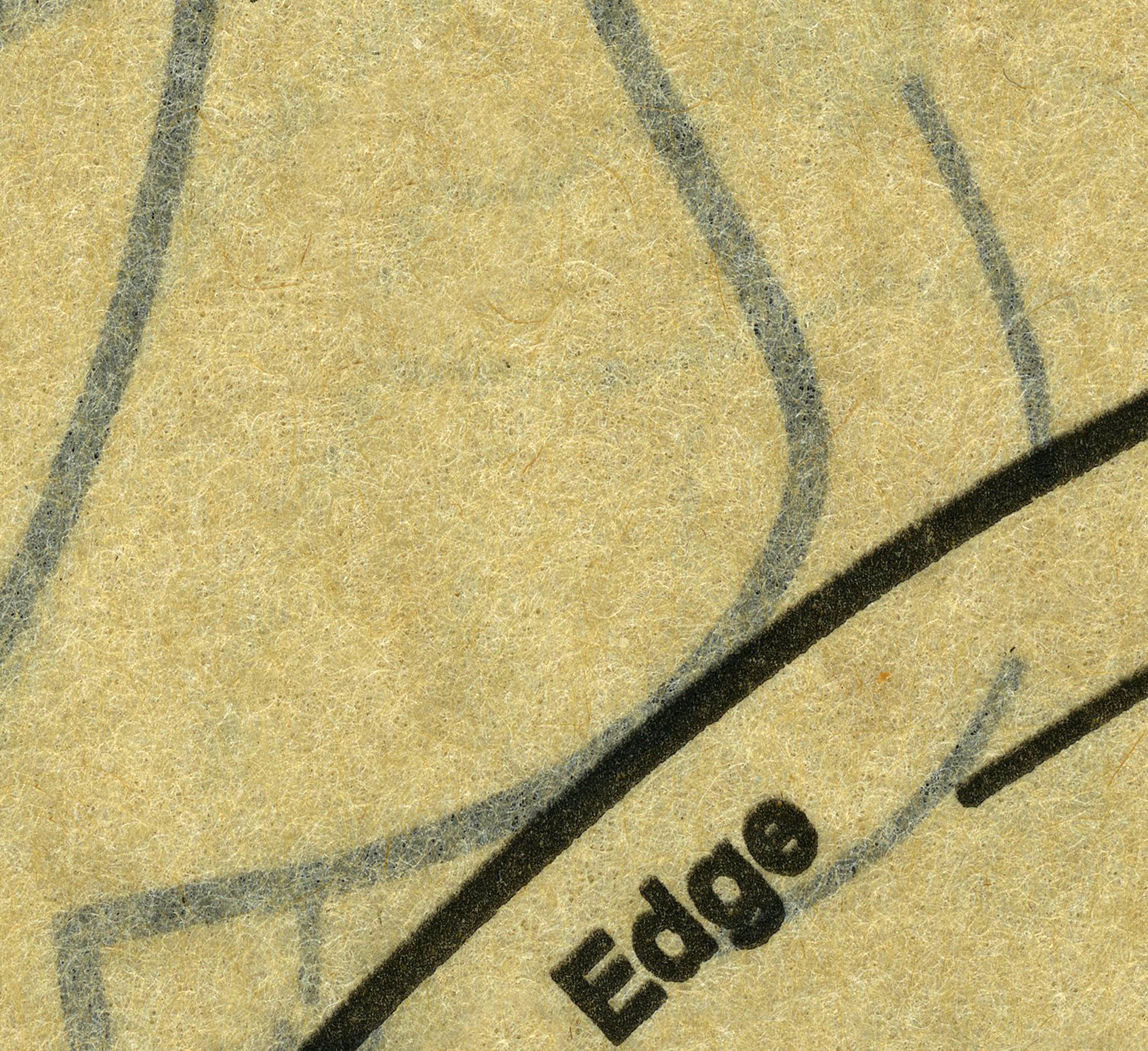
Erica Baum and Rita McBride both significantly enlarge their subject matter in order to emphasise its form.They invite viewers to interrogate what is being depicted and its meaning or function.
Bernd and Hilla Becher devoted themselves to documentary photography. The artist couple – as well as their former students Boris Becker and Tata Ronkholz – adopt a similar frontal, central perspective in their photographs of buildings, which allows comparisons to be drawn between the photographs. At the same time, it becomes clear that Boris Becker and Tata Ronkholz pursued their own artistic paths from an early stage.
Katharina Sieverding is not interested in documenting a supposed reality, but rather in challenging photography’s claim to represent it. By artistically transforming and distorting her large-format self-portraits, she draws attention to the social, political and structural challenges of her time.
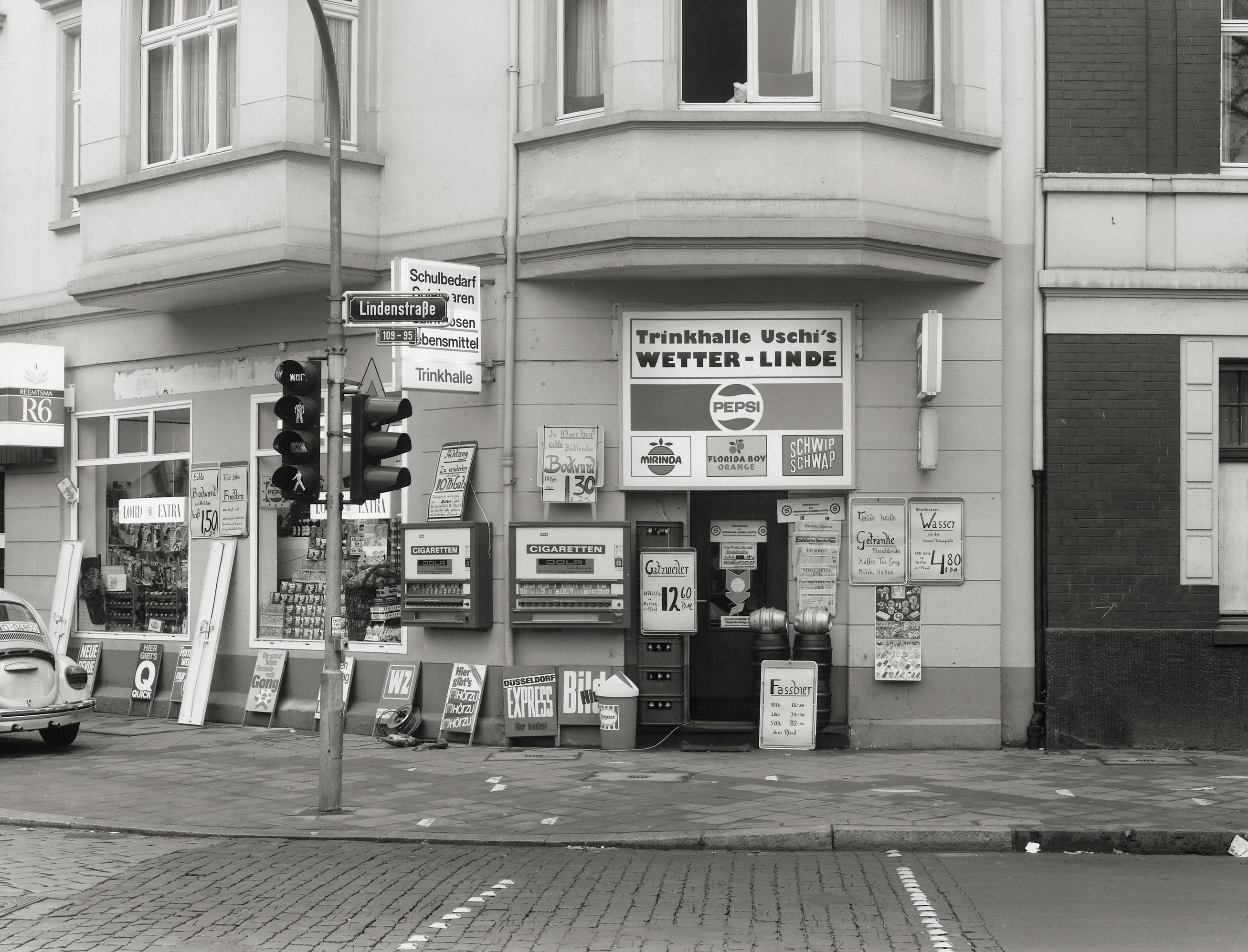
Commitment to the Kunstpalast/NRW-Forum
The Stadtsparkasse Düsseldorf has been supporting the NRW-Forum in its exhibition and education projects as a partner of the institution since 2017. This year marks the first time that the exhibition is being shown at the Kunstpalast since the NRW-Forum merged with it in 2020. Promoting the arts and supporting cultural institutions in Düsseldorf represent an important part of the Stadtsparkasse Düsseldorf’s social commitment.
The Stadtsparkasse Düsseldorf’s art collection was launched in the 1970s by Fritz Kulins, then chairman of the board. The first works found their way into the collection through corporate exhibitions. The works added to the collection were primarily by students at the art academy, but also by important representatives of the Düsseldorf art scene.
In 2008, a cooperation with the Kunstpalast resulted in the Stadtsparkasse Düsseldorf’s collection at the Kunstpalast. With these new acquisitions and the focus on the medium of photography, the Stadtsparkasse Düsseldorf is helping the Kunstpalast to expand its photography collection. In the annual Made in Düsseldorf exhibition, a selection of these new acquisitions – which are based on recommendations made by Linda Conze, the head of the photography collection at the Kunstpalast – are presented to the public. This year, four new acquisitions from the previous year are on display: three works by Rita McBride and a photograph by Tata Ronkholz.
Curator: Esther Breinig, curator of the Stadtsparkasse Düsseldorf’s art collection
Image Credits
Image Credits
Date
26 November 2025 – 22 March 2026
Location
» KunstpalastAdmission: 16€ / concessions 12€
Children / young people under 18: free
Members of Friends of the Kunstpalast: free
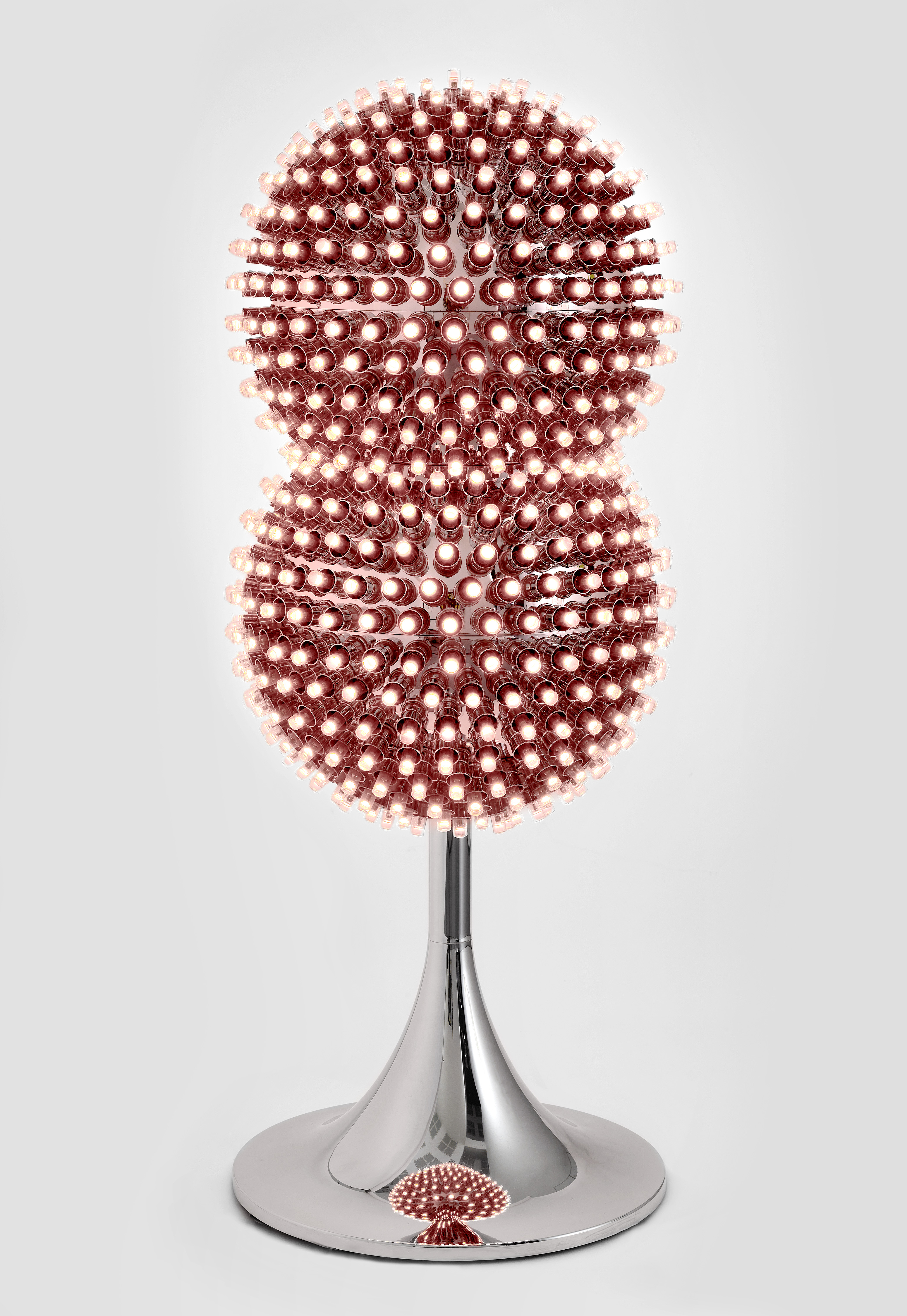
What is the world – and what is it made of? Is there something that links everything together? The exhibition The Fifth Element: Works from the Kemp Collection is dedicated to the basic building blocks of nature and expands the classical theory of the four elements – earth, fire, water and air – to include an overarching dimension: the fifth element symbolises the unifying and visionary forces at work when grappling with the mysteries of the world.
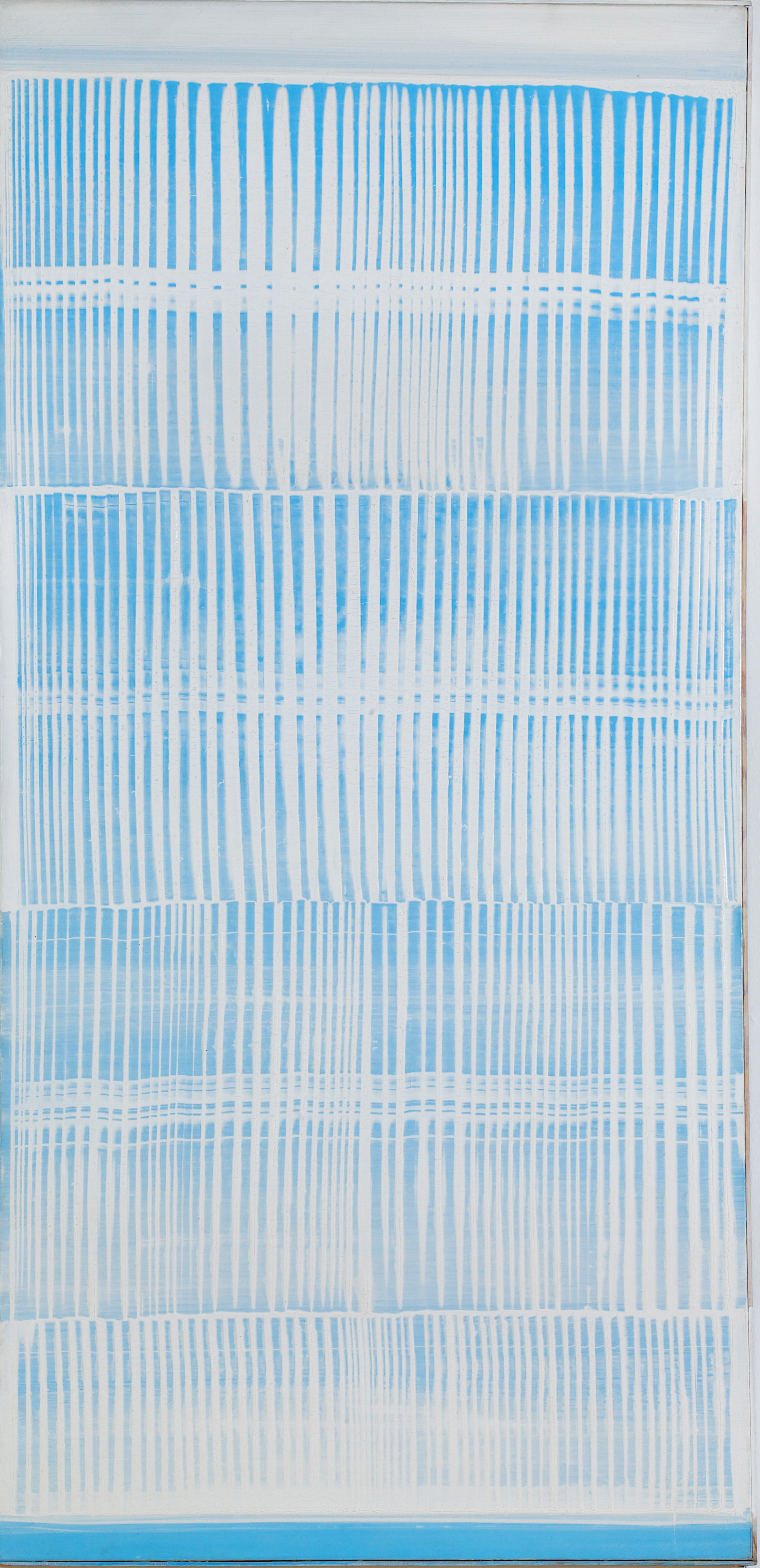
Around 70 works by artists from the twentieth and twenty-first centuries – including Hede Bühl, Heinz Mack, Otto Piene and David Rabinowitch – explore this timeless subject and develop it further. Unusual materials, physical processes and experimental techniques in paintings, sculptures, works on paper and expansive installations demonstrate how these elements have found their place in art. Furthermore, thematic references serve as a bridge between natural and human-made worlds. The focus of the show is on the interplay between nature, art and science.
With works from the Kemp Collection and additional exhibits from the Kunstpalast’s holdings, The Fifth Element invites visitors to rediscover the connections that exist here on earth.
Curator: Therés Lubinetzki, Research Assistant Kemp Collection, Kunstpalast
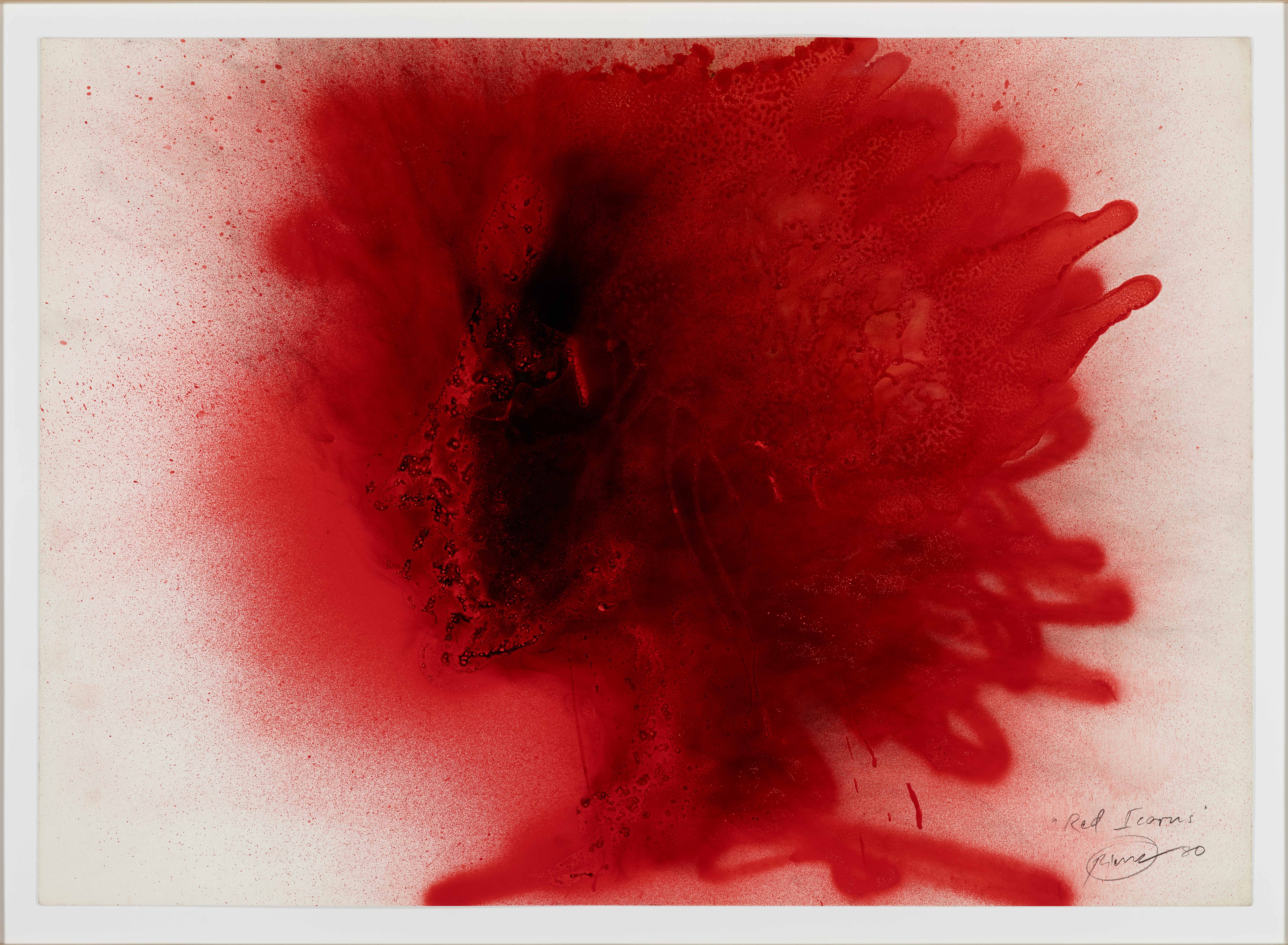
The Kemp Collection
The Kemp Collection is one of the most outstanding German private collections of twentieth- and twenty-first-century art. Alongside abstract paintings, works by the ZERO group, sculptures and works on paper, exceptional works of Art Informel and colour field painting form the core of the collection, which was established by Willi Kemp together with his wife Ingrid, who sadly passed away at an early age. In 2011, around 3000 works were donated to the Kunstpalast and Kemp established the Kemp Collection Foundation for the research and mediation of the collection. His donation has significantly enriched the Kunstpalast collection and is regularly presented in exhibitions.
Accompanying programme
Thu 27 Nov 2025
Introduction for Kindergarden Teachers and Teachers
16:15
The Fifth Element. Works from the Kemp Collection
Thu 27 Nov 2025
Introduction for secondary school teachers
17:30
The Fifth Element. Works from the Kemp Collection
Tue 2 Dec 2025
Public Tour in German
16:30
The Fifth Element. Works from the Kemp Collection
Tue 9 Dec 2025
Public Tour in German
16:30
The Fifth Element. Works from the Kemp Collection
Tue 16 Dec 2025
Public Tour in German
16:30
The Fifth Element. Works from the Kemp Collection
Sat 20 Dec 2025
Public Tour in English
15:00
The Fifth Element. Works from the Kemp Collection
Tue 30 Dec 2025
Public Tour in German
16:30
The Fifth Element. Works from the Kemp Collection
Tue 6 Jan 2026
Public Tour in German
16:30
The Fifth Element. Works from the Kemp Collection
Sat 10 Jan 2026
Visite guidée publique en français / Public Tour in French
15:00
The Fifth Element. Works from the Kemp Collection
Wed 14 Jan 2026
Art and Babies
11:30
The Fifth Element. Works from the Kemp Collection
Picture Credits
Picture Credits
Date
17 Apr – 26 Apr 2026
Location
» KunstpalastAdmission: 16 € / concessions 12 €
Children / young people under 18: free
Members of Friends of the Kunstpalast: free
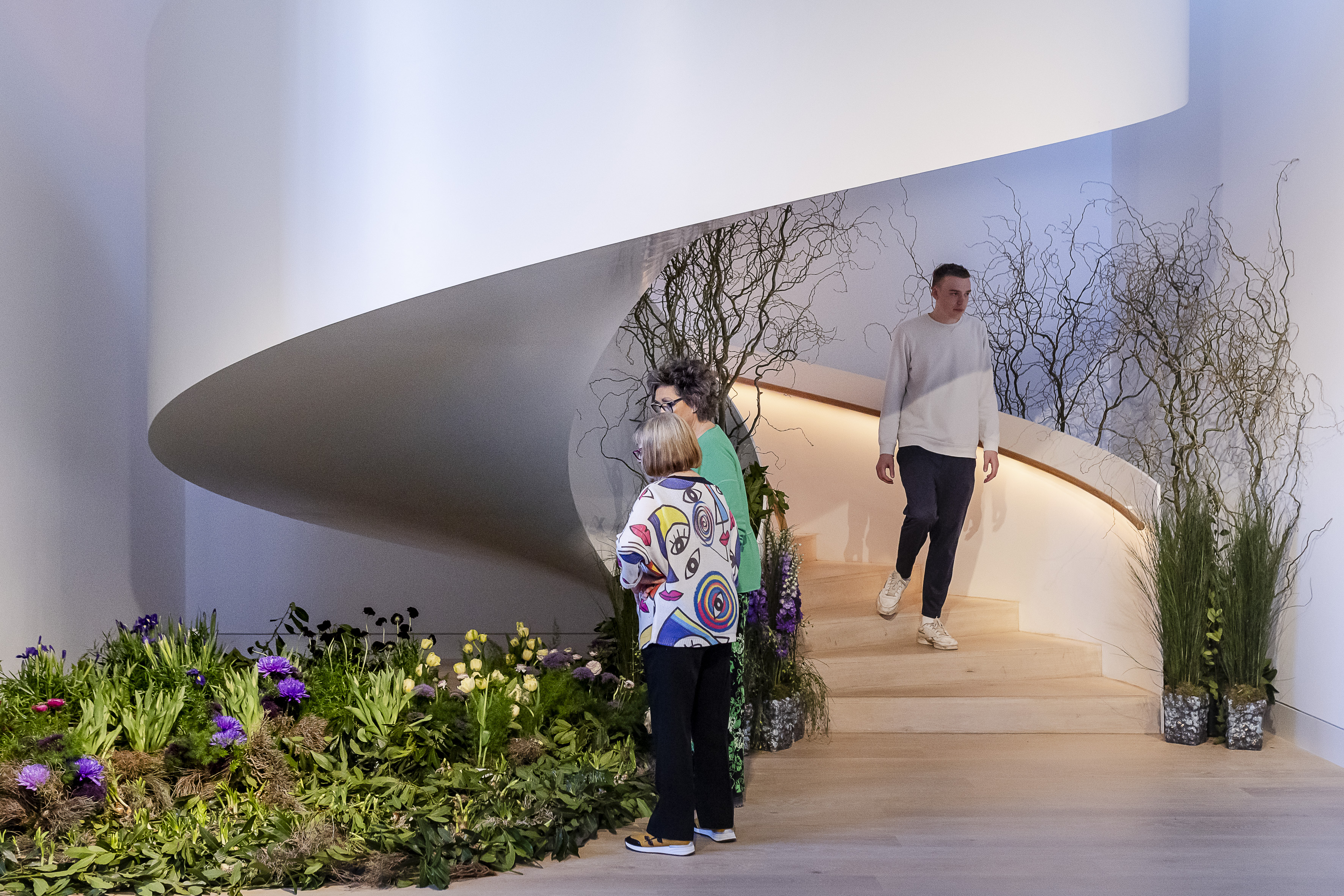
When art meets floral poetry, it’s that time again: Palastblühen returns to the Kunstpalast in spring 2026. For the third time, floral compositions will transform the collection tour into a living work of art – colourful, fragrant and ephemerally beautiful. Amidst the works of painting, sculpture, design and glass, floral arrangements open up new perspectives, create visual correspondences and set sensual accents.
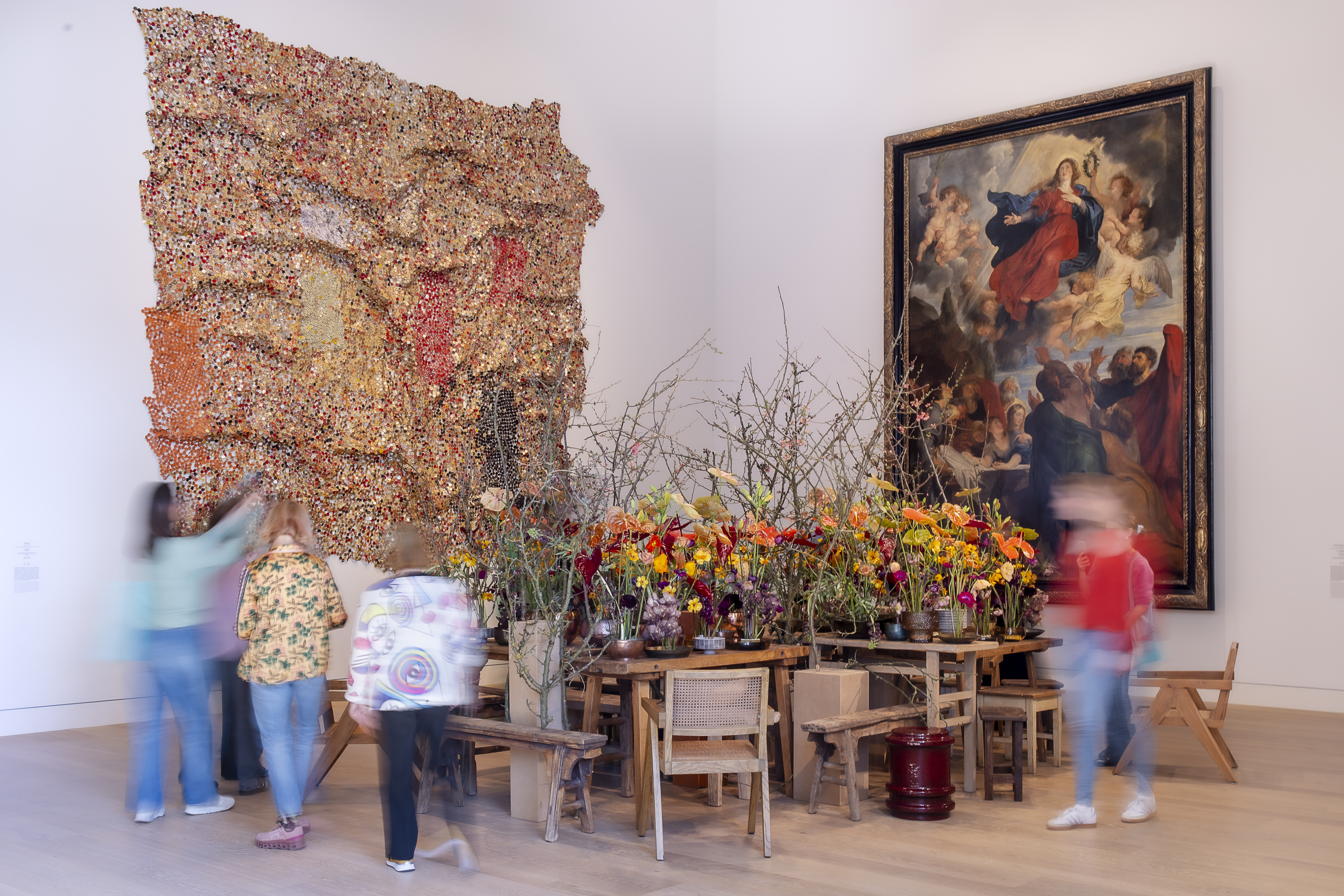
Next year, Düsseldorf florists will once again enter into a dialogue with the collection with their interpretations: sometimes tongue-in-cheek, sometimes contemplative, sometimes dramatic, their works unfold their very own narrative. This results in temporary installations that transform the space – surprising, atmospheric and always in the rhythm of nature.
View of last year’s editions
Monet – Cézanne – Matisse
The Scharf Collection
12 Mar – 9 Aug 2026
Date
12 Mar – 9 Aug 2026
Location
» KunstpalastAdmission: 16 € / concessions 12 €
Children / young people under 18: free
Members of Friends of the Kunstpalast: free

It continues the fourth generation of a branch of the renowned Otto Gerstenberg Collection in Berlin, which encompasses everything from the beginnings of modernism, represented by Francisco de Goya, to the French avant-garde of the second half of the nineteenth century, represented by Gustave Courbet, Edgar Degas and the entire graphic oeuvre of Henri de Toulouse-Lautrec.
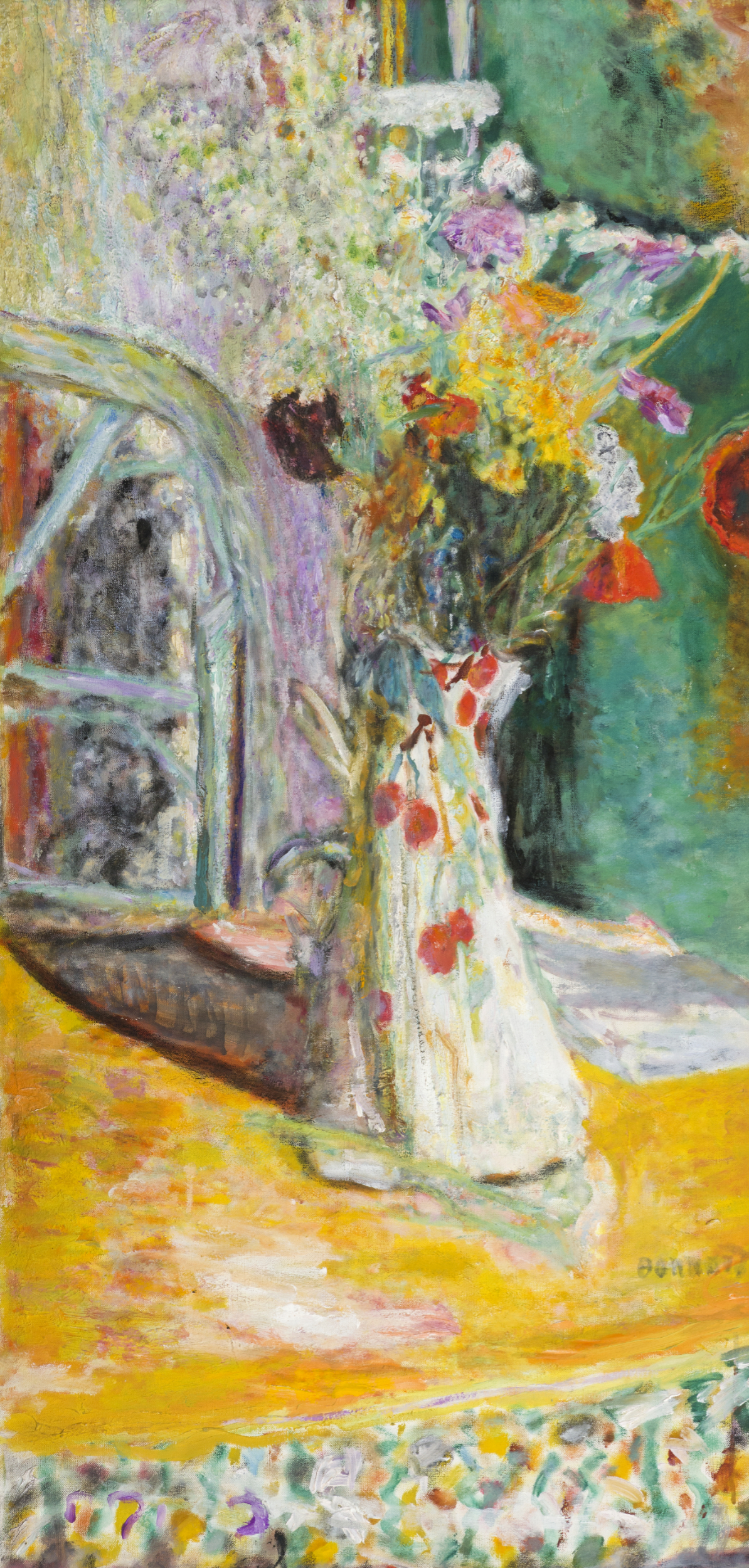
Despite many wartime losses, Gerstenberg’s daughter Margarethe Scharf was able to save the majority of the collection and bequeath it to her two sons Walther and Dieter Scharf.
Following the division of the collection between the grandchildren, Walther Scharf, his wife Eve and son René developed the French focus further and added works by Claude Monet, Paul Cézanne, Pierre Bonnard, Henri Matisse and Pablo Picasso, among others. Today, René Scharf and his wife Christiane Scharf specialise in international contemporary artists, including works by Sam Francis, Daniel Richter and Katharina Grosse. With a particular interest in the boundaries of the medium of painting and the relationship between figurative and abstract pictorial worlds, they have brought the family tradition of collecting into the present day.
An exhibition by the Kunstpalast, Düsseldorf, in cooperation with the Alte Nationalgalerie, Staatliche Museen zu Berlin
Image Credits
Image Credits
Spot On: Chris Reinecke
Art is Necessary
19 November 2024 – 4 May 2025
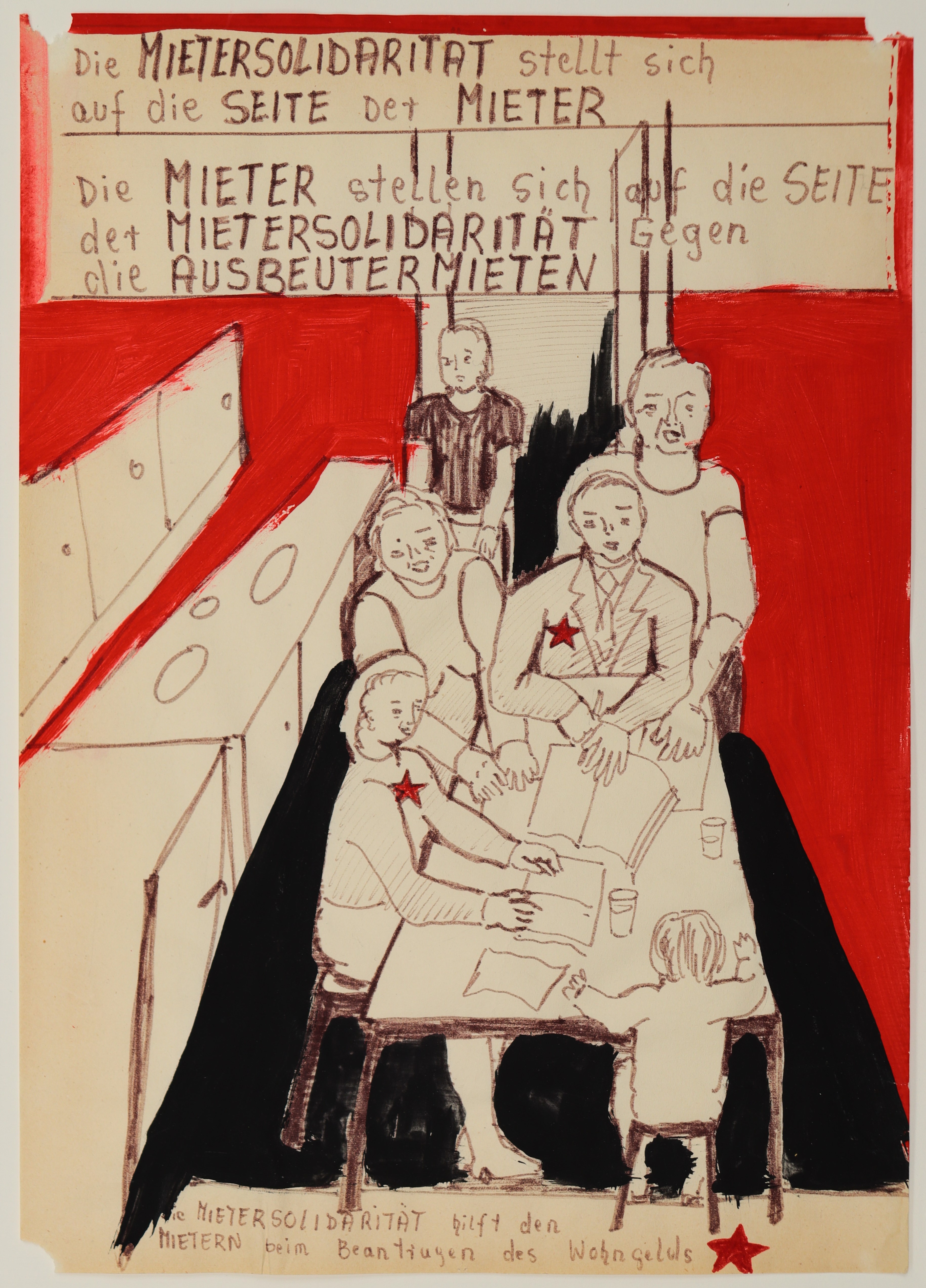
In her early years, art meant public action for Chris Reinecke (*1936). At the end of the 1960s, the artist, who studied and still lives in Düsseldorf, invited passers-by into her studio or carried out artistic performances on the street in order to reach as many people as possible. This exhibition shows objects, drawings and photos from this period, some of which are being presented for the first time.
Reinecke and her former husband, the artist Jörg Immendorff (1945-2007), rented a room in Pempelfort in 1968 where they organised exhibitions and events such as creative workshops for adults. Shortly afterwards, they founded the “Büro Olympia” in the city centre, which campaigned against the politically motivated promotion of high-performance sports. The place became a focal point for other political groups such as “Mietersolidarität” (“Tenant Solidarity”), which fought for rent control.
In her 1970 manifesto “Kunst Muss Sein” (“Art Is Necessary”), Reinecke explained her understanding of art as a democratic medium that should be open to all. In 2023, she donated a collection of early works to the Kunstpalast that visualise this way of thinking.
Curator: Gunda Luyken, Head of the Department of Prints and Drawings, Kunstpalast &
Claudia Petersen, Head of Prints and Drawings Study Room, Kunstpalast
Bildnachweise
Bildnachweise
DIE KLEINE (The little One) 2025
Art Competition for Elementary Schools
10 May – 9 June 2025
Date
10 May – 9 June 2025
Location
» KunstpalastAdmission: free / concessions free
Children / young people under 18: free
Members of Friends of the Kunstpalast: free

DIE KLEINE is the final exhibition of the art competition for primary schools, which has been organised annually by the Kunstpalast since 2019. All primary schools from Düsseldorf and the surrounding area can take part. The aim is to open up creative expression opportunities for children and familiarise them with the museum as an extracurricular place of learning.
The competition theme for 2025 is: ‘Together we are strong! – Friendship and community’. Around 2,100 children from 80 school classes have created impressive works of art with great imagination and team spirit – from pictures, collages and objects to photos and films. All contributions will be presented at the Kunstpalast from May. Two prizes will also be awarded this year. The audience prize will go to the work with the most votes from visitors, while the ‘Kunstpreis DIE KLEINE’ will be awarded by a jury of experts. Both prizes are endowed with 1,000 euros each for a joint class excursion. The award ceremony will take place in Düsseldorf City Hall.
A high-quality catalogue with all the works on display will also be published to accompany the exhibition. Each participating child will receive their own copy.
Admission is free.
DIE KLEINE is under the patronage of Lord Mayor Dr Stephan Keller.
Curator: Friederike van Delden, Kunstpalast
Picture Credits
Picture Credits
Date
29 June – 3 Aug 2025
Location
» Kunstpalast & NRW-ForumAdmission: 16 € / concessions 12 €
Children / young people under 18: free
Members of Friends of the Kunstpalast: free
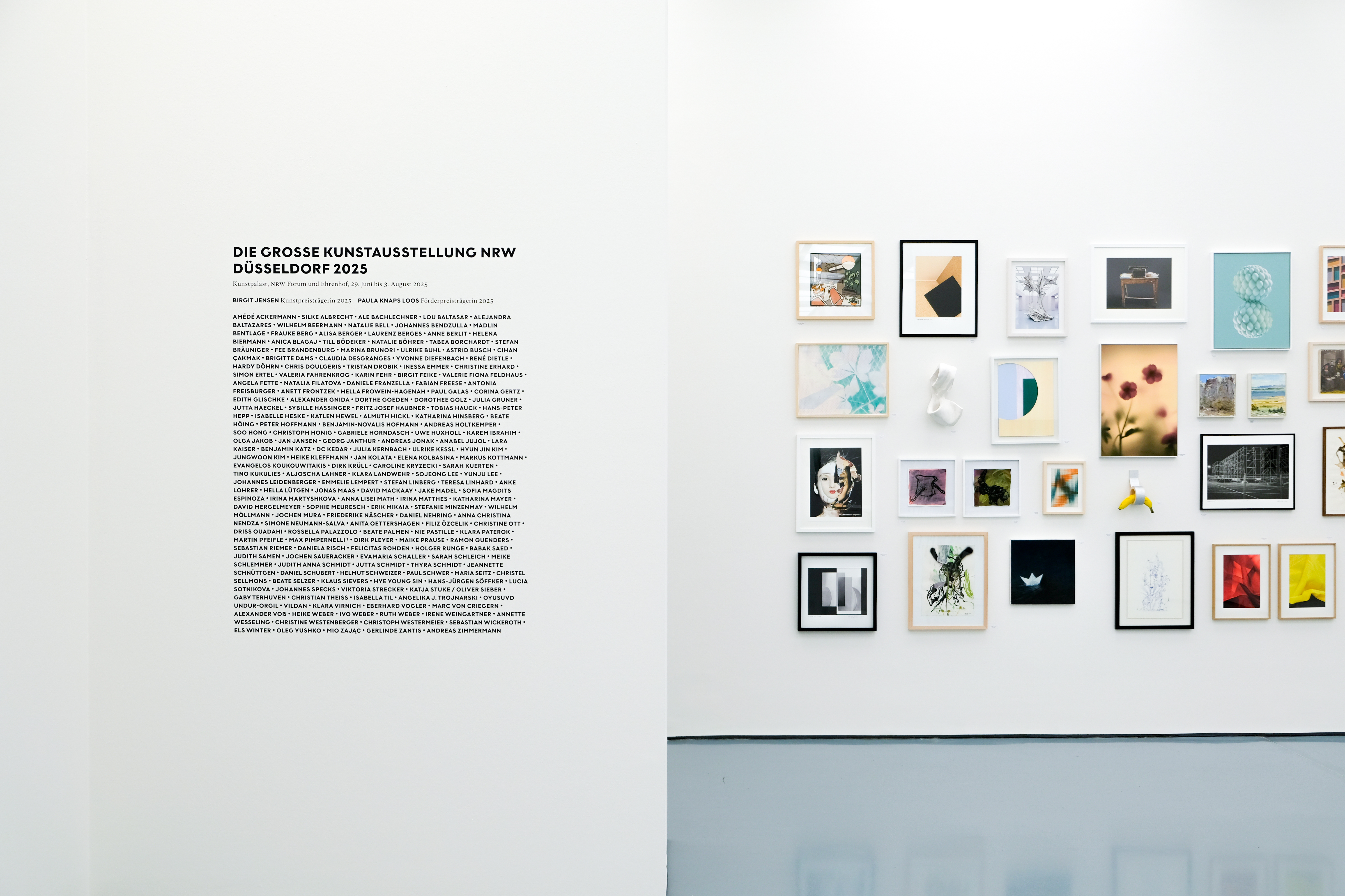
DIE GROSSE presents art from all over North Rhine-Westphalia every year. Organised by the VzVvK e.V., it traditionally takes place at the Kunstpalast and the NRW-Forum.
Works of art by around 180 artists from all disciplines, selected by a jury of experts, are shown in four halls and in the outdoor area. DIE GROSSE is a reflection of current developments in the art scene and is regarded as a meeting place for the professional sector. What makes it special: All works in the exhibition are for sale. DAS KLEINE FORMAT, a separate area with small-format artworks, offers art for as little as 300 euros! Visitors can also look forward to an exciting supporting programme on Thursdays and Sundays.
Date
25 September 2025 – 1 February 2026
Location
» KunstpalastAdmission: 16 € / concessions 12 €
Children / young people under 18: free
Members of Friends of the Kunstpalast: free
They fought for their education, for recognition and visibility – and yet they have disappeared almost completely from the history books. With the exhibition Women Artists! From Monjé to Münter, the Kunstpalast brings over 30 female artists back into the public eye.
Tickets
When would you like to visit the exhibition?
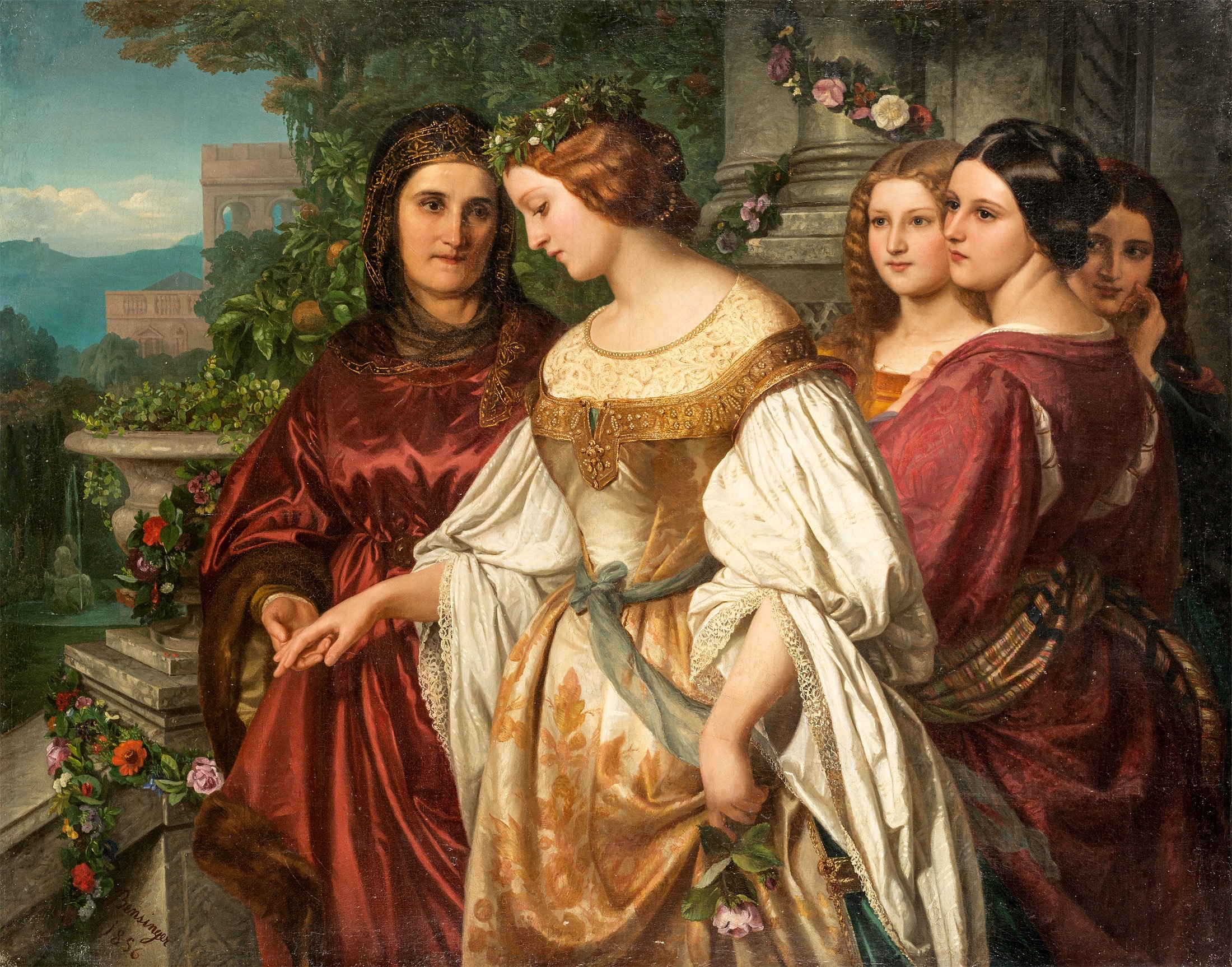
The show offers an insight into around 100 years of female artistic creation in Düsseldorf – a city that was a beacon for women artists from all over Europe in the nineteenth century, even though the doors of the art academy remained closed to them.
Following a multi-year research project, this large-scale special exhibition is the first of its kind to comprehensively examine the lives and works of the women who were involved in the arts in Düsseldorf during this period: a (re)discovery that has rewritten a chapter of art history. “Every new difficulty was a new motivation for me,” wrote the painter Elisabeth Jerichau-Baumann around 1874 – a statement that reflects the attitude of many other women artists and could serve as the leitmotif of this exhibition.
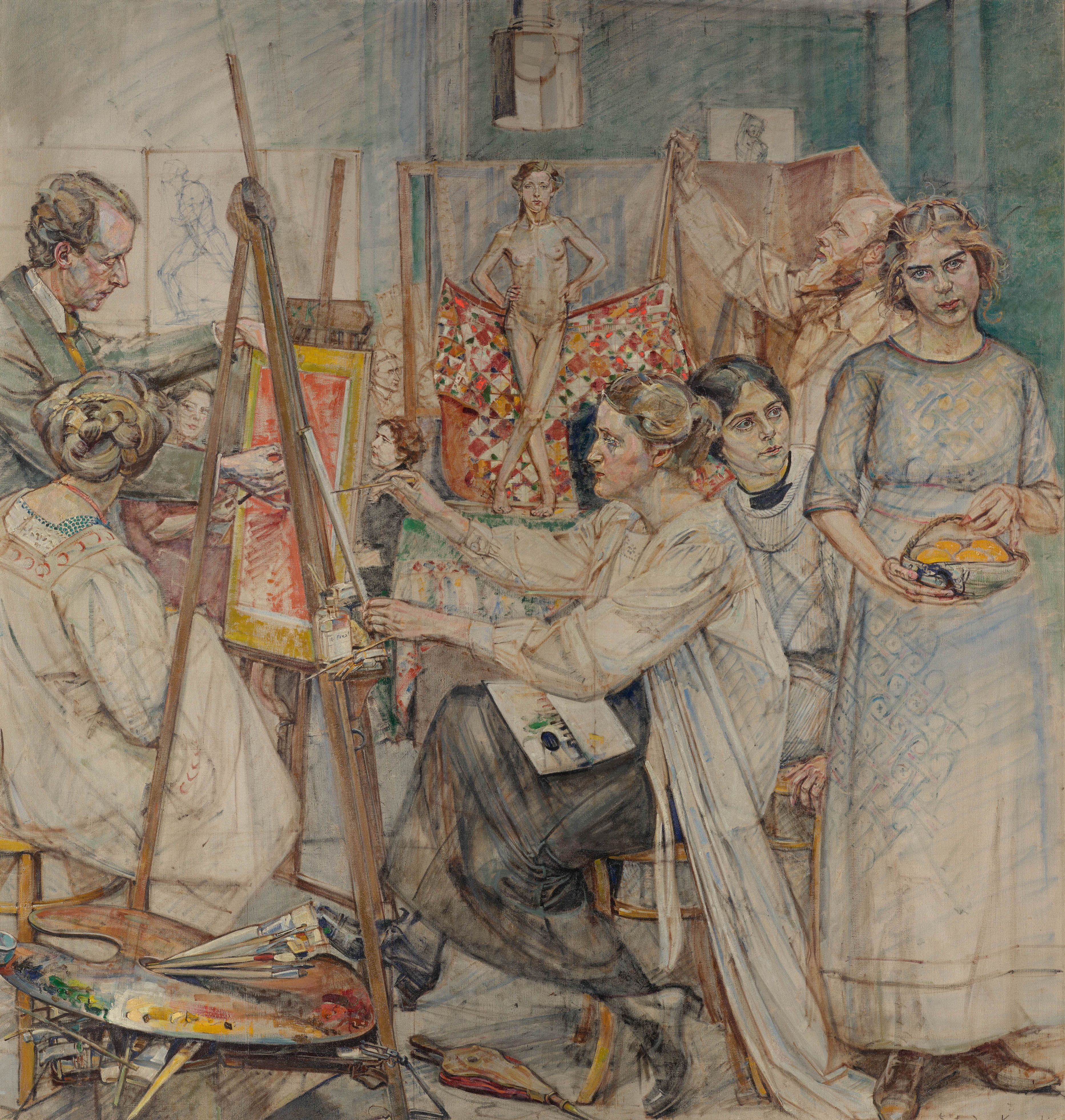
Artists represented in the exhibition:
Victoria Åberg | Amalie Bensinger | Fanny Churberg | Mathilde Dietrichson | Alma Erdmann | Ilna Ewers-Wunderwald | Alexandra Frosterus-Såltin | Marta Hegemann | Minna Heeren | Adeline Jaeger | Elisabeth Jerichau-Baumann | Marga Klinckenberg | Benita Koch -Otte | Magda Kröner | Gertrud von Kunowski | Marie Laurencin | Emmy Lischke | Amalia Lindegren | Luise von Martens | Paula Monjé | Gabriele Münter | Emilie Preyer | Sophie Ribbing | Julia Schily-Koppers | Christiane Schreiber | Martel Schwichtenberg | Alwine Schroedters | Hermine Stilke | Milly Steger | Emma Volck | Marie Wiegmann
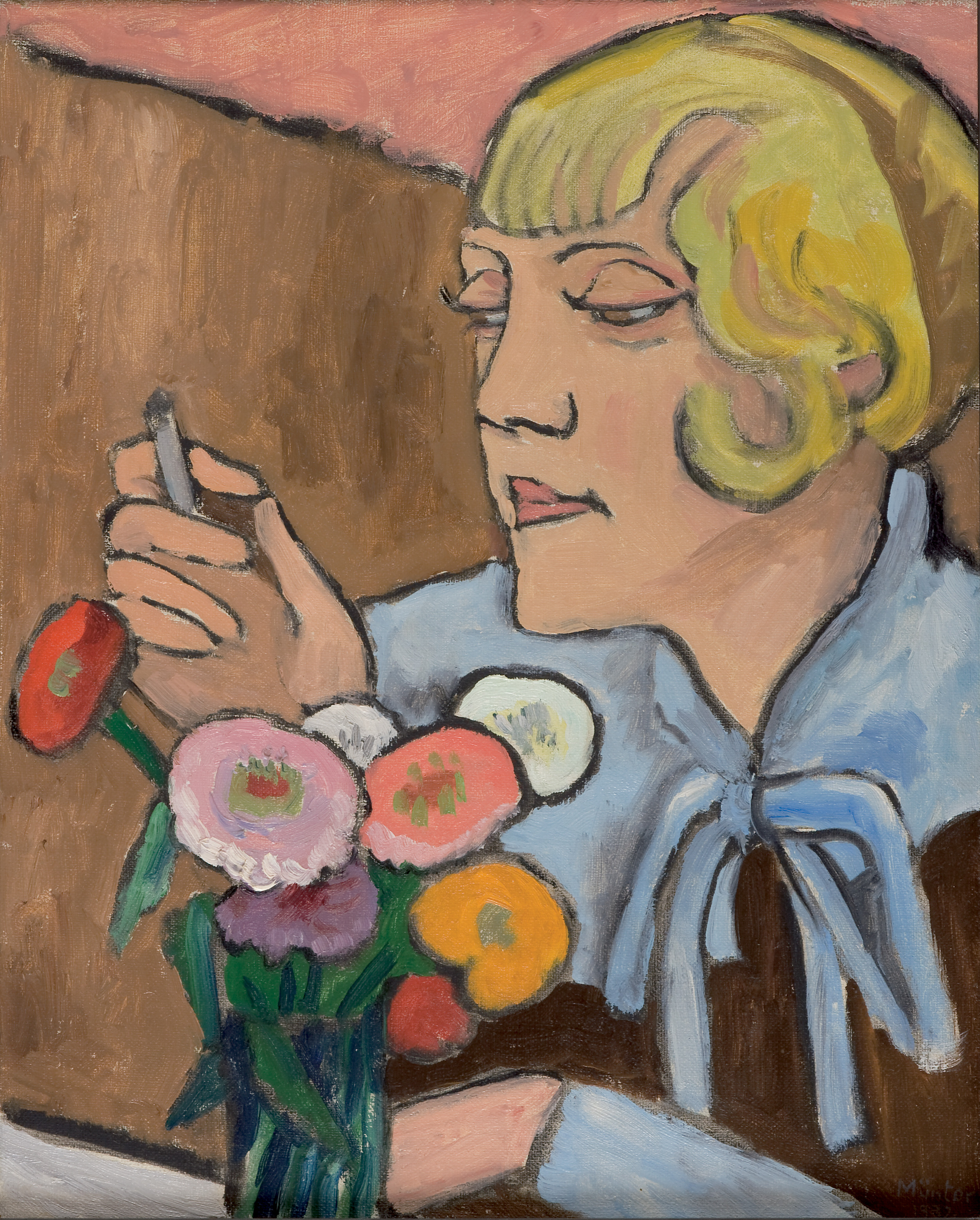
The presentation highlights the perseverance and talent of generations of women in art who have long been ignored. Numerous works by the 31 featured artists are on display publicly for the first time since the nineteenth century. In addition to well-known names such as Gabriele Münter, this chronological and thematic presentation across eleven rooms showcases forgotten protagonists such as Amalie Bensinger, Magda Kröner and Marga Klinckenberg.
In 2021, the Kunstpalast initiated a research project that was the first to comprehensively search for evidence of women artists working in Düsseldorf between 1819 and 1919 – the 100 years between the re-establishment of the art academy and its gradual opening to women. The results surprised even the experts themselves: research carried out in archives, address books, exhibition catalogues and historical newspapers identified over 500 names – far more than the 200 or so that were previously known. Many of these women took private lessons, studied at the Kunstgewerbeschule (School of Applied Arts) or worked independently. Some were represented in international exhibitions, received prizes and scholarships, and had their works acquired by important collections. Nevertheless, they remain largely unknown today, as their names did not find their way into the artistic canon.
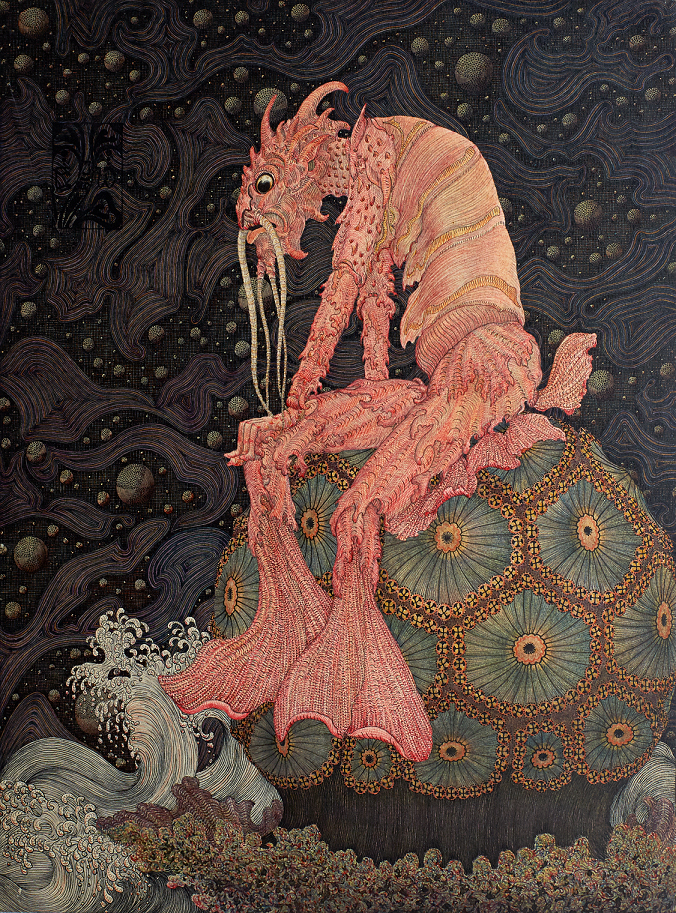
The exhibition is the result of extensive in-depth research as well as a critical examination of the history of the museum’s own collection. Indeed, the Kunstpalast – founded in 1913 as the Düsseldorf Municipal Art Collections – played a role in this structural exclusion: prior to 1933, the museum had only purchased four paintings by women artists. It was not until recent decades that a significant shift began to take place. Since 2017, under the direction of Felix Krämer, there has been a targeted acquisition of works by women artists, including 15 paintings by nineteenth-century artists such as Emilie Preyer, Paula Monjé and Emmy Lischke, who are represented in the exhibition.
The exhibition uncovers buried histories and sheds light on the ways in which women pursued their artistic careers despite structural disadvantages. It shows courageous paths and smart decisions, telling the story of women artists whose work paved the way for what should be the norm today: equal opportunities for all, including in the arts.
There is also a special focus on women artists from Scandinavia and Finland who chose Düsseldorf as a venue for their education and inspiration. The exhibition was conceived in close cooperation with the Ateneum Art Museum / Finnish National Gallery in Helsinki, which hosted the exhibition Crossing Borders: Travelling Women Artists in the 1800s from March to August 2025 and attracted over 200,000 visitors.
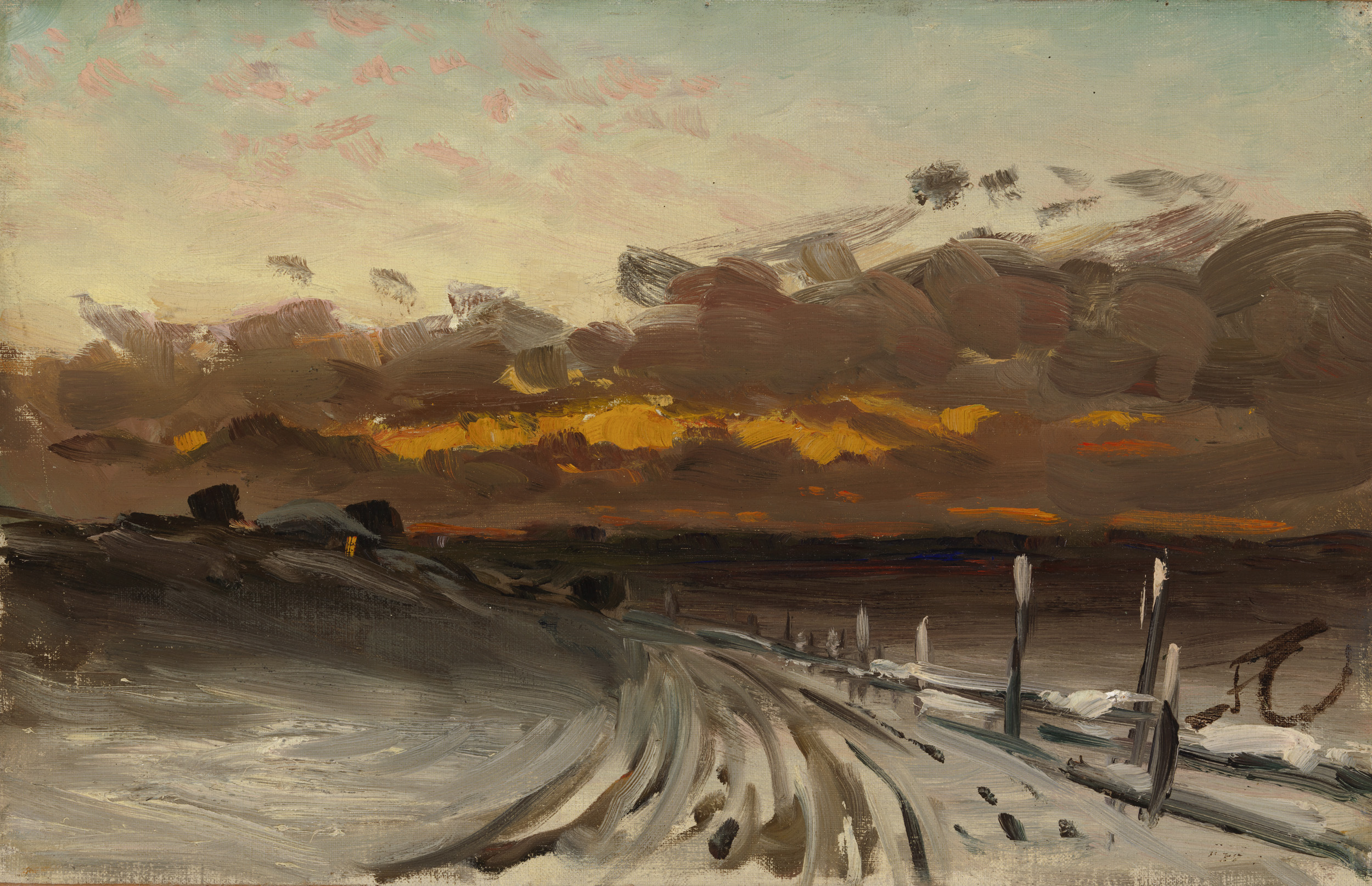
Women Artists! is more than merely a historical retrospective – the exhibition makes a clear statement in favour of equality and a critical reappraisal of the existing canon. It adds an important and long-overlooked chapter to art history and makes clear that without the influence of women artists, the history of art is incomplete.
Curator: Kathrin DuBois, Head of Painting until 1900
Research Assistant: Nina Köppert
Research Intern: Hannah Steinmetz
Exhibition catalogue
Edited by Kathrin DuBois | 208 pages | 160 colour illustrations | 23.5 x 28.5 cm | German | Hardcover
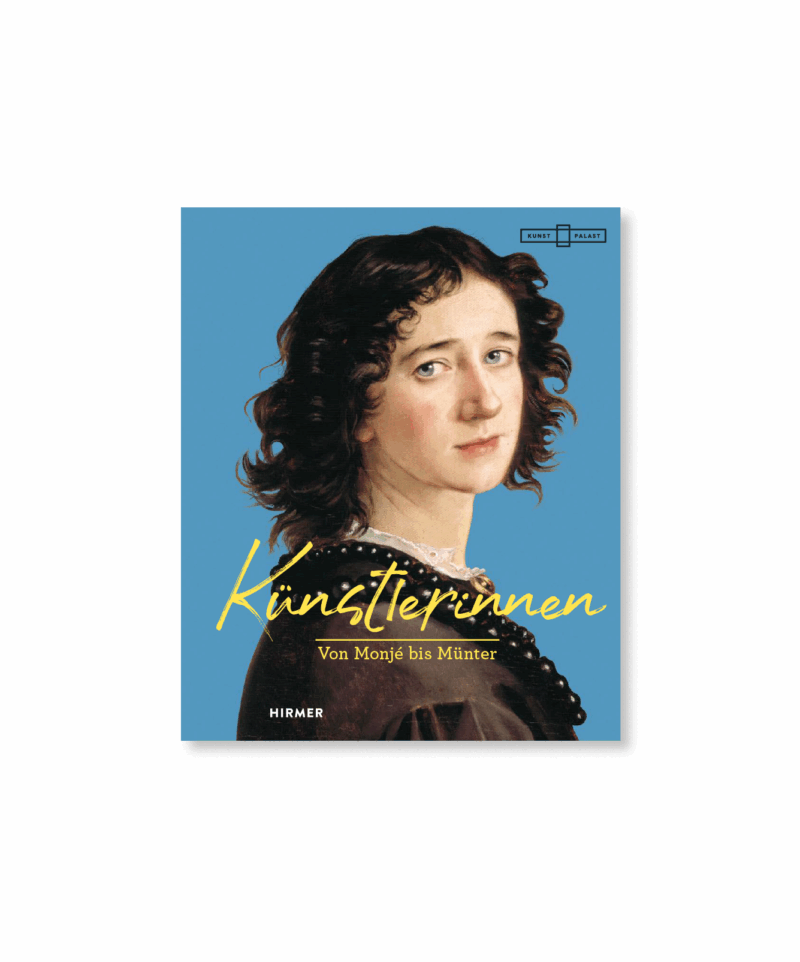
Accompanying programme
Thu 27 Nov 2025
Public Tour in German
18:00
Women Artists! From Monjé to Münter
Sun 30 Nov 2025
Public Tour in German
12:00
Women Artists! From Monjé to Münter
Thu 4 Dec 2025
Public Tour in German
18:00
Women Artists! From Monjé to Münter
Sun 7 Dec 2025
Workshop for students and university graduates
10:00
of artistic subjects
Sun 7 Dec 2025
Public Tour in German
12:00
Women Artists! From Monjé to Münter
Sun 7 Dec 2025
Talk – Crossing Borders
18:30
Artist Hyunjin Kim in conversation with curator Riikka Thitz
Thu 11 Dec 2025
Public Tour in German
18:00
Women Artists! From Monjé to Münter
Sun 14 Dec 2025
Public Tour in German
12:00
Women Artists! From Monjé to Münter
Thu 18 Dec 2025
Public Tour in German
18:00
Women Artists! From Monjé to Münter
Sun 21 Dec 2025
Public Tour in German
12:00
Women Artists! From Monjé to Münter
Picture Credits
Picture Credits
